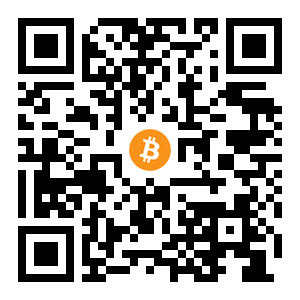Abstract
The fiat monetary system is broken and the world desperately needs a proper solution to replace it. But to take on the established monetary and financial systems, a decentralised technology cannot afford any weaknesses, as this would slow down or even prevent rapid global adoption. An ultimate solution is therefore needed.
We believe that such a solution is achievable.
This solution is a decentralised technology without any of the problems blockchain-based systems face today. It will be more secure, more decentralised, more scalable, faster, cheaper, fairer, more energy efficient, more user-friendly, and will have better privacy and more features than any current decentralised technology. This new technology can deliver on all of these promises without compromise.
Sounds like a scam to you?
We share this concern! That is why we have written an in-depth article that takes you on a journey in search of a future-proof money system. It will take you from the invention of Bitcoin (the first working decentralised technology capable of holding value), to the underlying problem Satoshi (Bitcoin’s founder) set out to solve, to the first principles of trust and money, and finally to a completely new approach that is able to achieve a combination of characteristics and features that has always been considered impossible.
We believe this new technology will herald an unprecedented revolution of a decentralised future, far exceeding the adoption of any other decentralised technology to date.
Part 1: The Problem
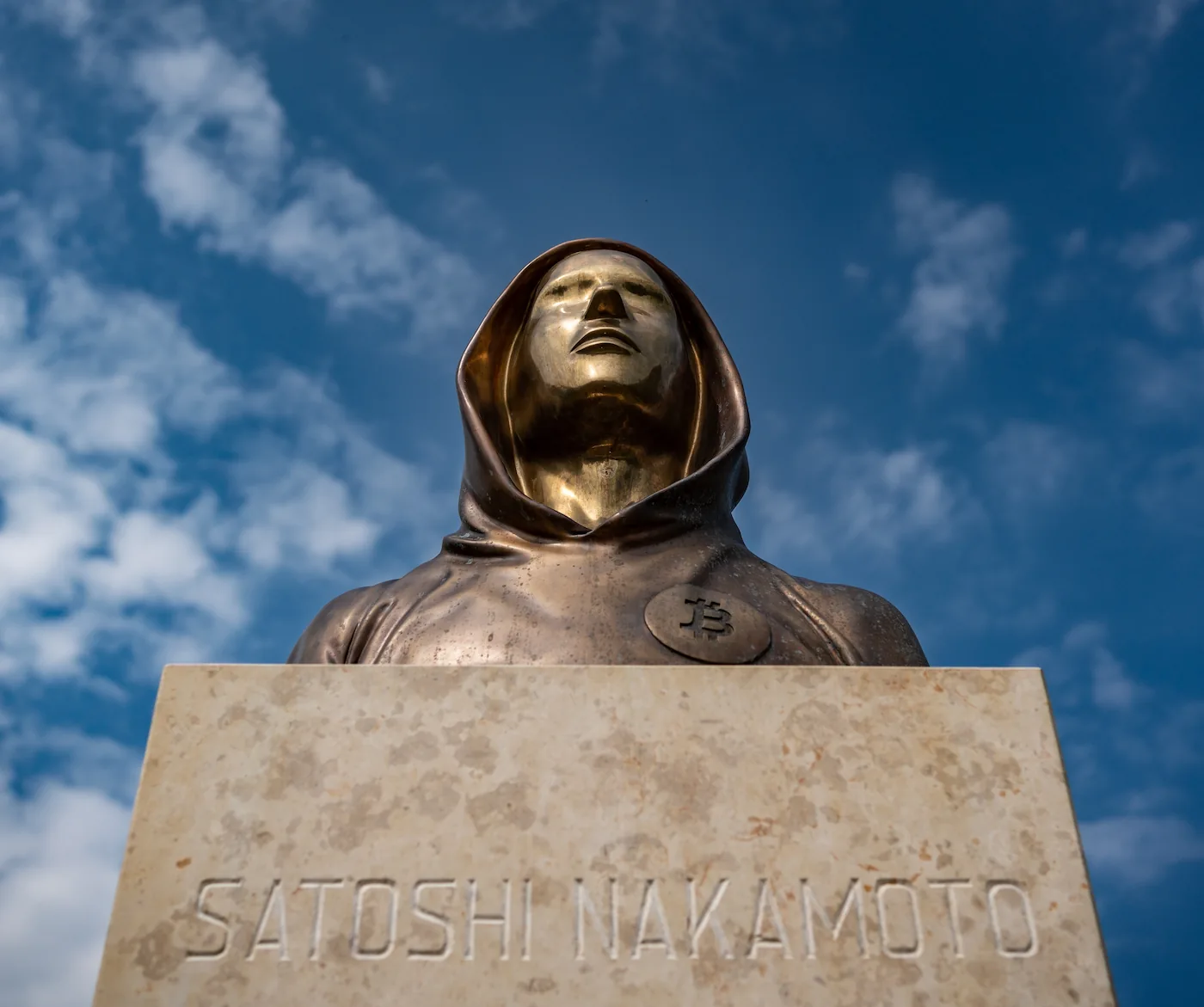
Please read this first!
If you want a better grasp of how our current monetary system works, or if you want to learn more about Bitcoin and blockchain, please refer to the Resources section at the end of this article for a plethora of reputable information.
If you wish to check the (almost 800) sources we have linked to in this article, we strongly suggest you read this article on a desktop computer using a Chromium-based browser (such as Chrome, Edge, Opera, etc.) as we have made extensive use of Chromium’s link to quotes & text feature. By the way: Blue links are links that have not yet been visited. They turn purple when the page behind them is visited.
We do not know if Satoshi is a man, a woman or a group of people. But since Satoshi is a male name and for the sake of readability, we will refer to him as a male person.
The research of this article took about a year and we are aware that it is impossible for anybody to become an expert in multiple complex subjects within this short amount of time. Therefore please bear with us if you spot a mistake or other inconsistencies in the article, and let us know in the comments below so we can correct, improve or clarify them.
Satoshi Nakamoto is a genius.
Although he was not the first to attempt to create a decentralised digital money system, his conception was the first that achieved the breakthrough. In addition to its first-mover advantage, Bitcoin’s overwhelming success and ongoing financial supremacy over competing cryptocurrencies (also known as altcoins) can be attributed to this technology’s incredibly sophisticated and well-designed architecture.
Not only did Satoshi address a multitude of technological obstacles (including the problem of double-spending). But more importantly, he endeavoured to address one of the most pressing problems confronting the world today: the escalating instabilities associated with our current fiat-based financial system. This was undeniably the primary reason behind his creation of Bitcoin.
But does Bitcoin offer the ultimate solution?
To determine this, we must first have a deeper comprehension of the underlying causes of the problem Satoshi wanted to solve. Examining Satoshi’s initial public announcement of Bitcoin, the basis of the problem as he perceived it is readily apparent.
You are encouraged to read the entire announcement, but for the sake of brevity, we will just discuss the areas that are pertinent to our discussion.
Let’s begin by analysing his second paragraph:
The root problem with conventional currency is all the trust that’s required to make it work. The central bank must be trusted not to debase the currency, but the history of fiat currencies is full of breaches of that trust. Banks must be trusted to hold our money and transfer it electronically, but they lend it out in waves of credit bubbles with barely a fraction in reserve. We have to trust them with our privacy, trust them not to let identity thieves drain our accounts. Their massive overhead costs make micropayments impossible.
The issue that Satoshi clearly wants to call our attention to is demonstrated by his repeated use of one word: Trust.
The above paragraph contains six occurrences of the word ‘trust’. And if we analyse his full announcement, we find that the word trust appears a total of 13 times, making it the most commonly referenced keyword in the whole text.
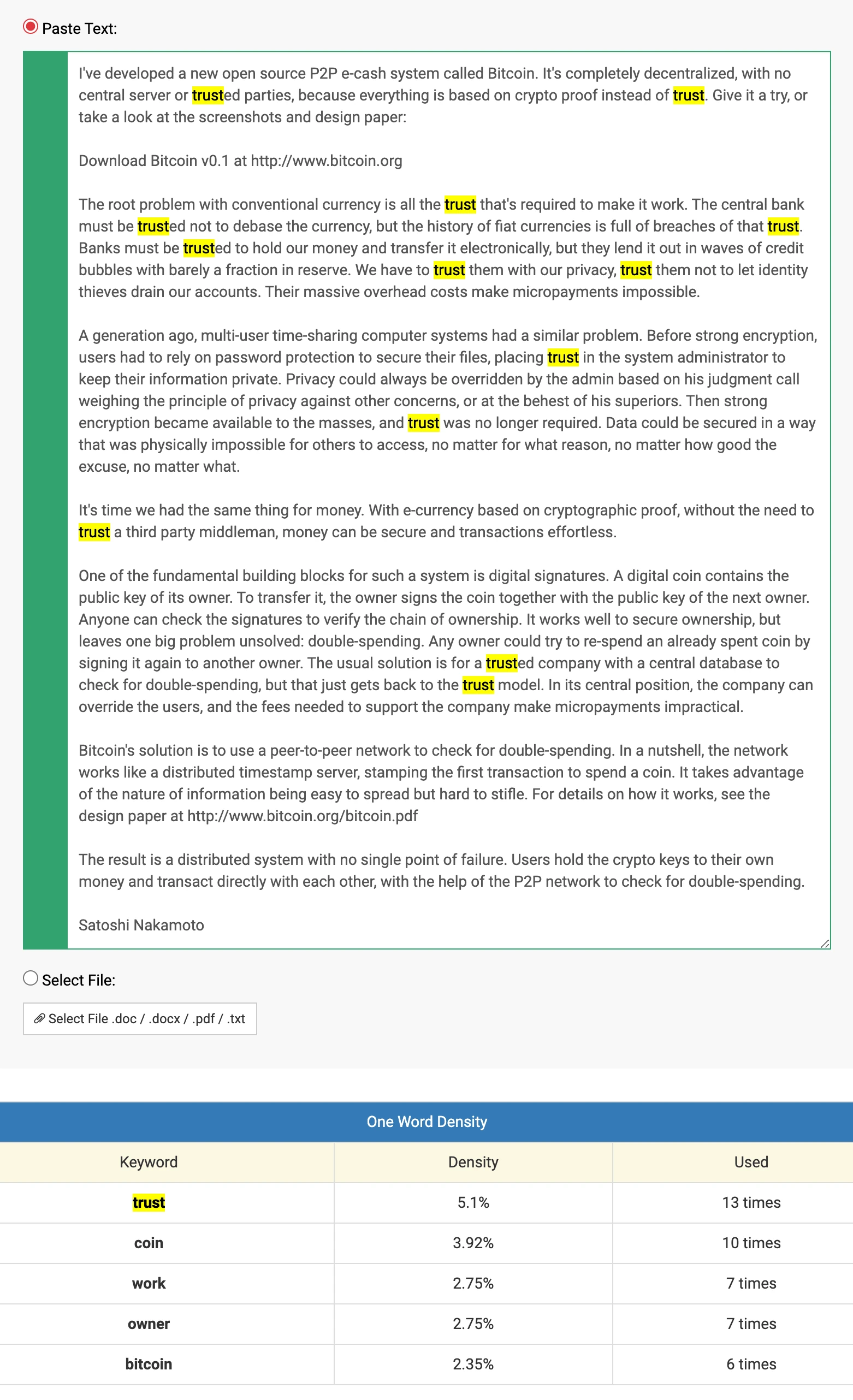
It seems quite evident at this point that there is one thing that fundamentally concerned Satoshi with regard to fiat currencies as well as our current financial system and institutions: Trust.
The Battle Against Trust
Satoshi’s solution
Referring back to Satoshi’s initial public announcement of Bitcoin, the following three statements stand out:
It’s completely decentralized, with no central server or trusted parties, because everything is based on crypto proof instead of trust.
Then strong encryption became available to the masses, and trust was no longer required.
With e-currency based on cryptographic proof, without the need to trust a third party middleman, money can be secure and transactions effortless.
In each of these statements, Satoshi expresses his belief that cryptography can replace trust.
In the Bitcoin Forum, he wrote:
At some point I became convinced there was a way to do this without any trust required at all and couldn’t resist to keep thinking about it.
Again, Satoshi asserts that at a certain point he became confident there is a solution that does not involve any trust at all.
However, is this actually feasible? Can the need for trust in a money system be eliminated entirely?
What is a trustless money system?
The terms ‘money’, ‘currency’, ‘money system’ and ‘monetary system’ all appear frequently in this article. Understanding their respective definitions is crucial, as they are not interchangeable.
Even though Satoshi never mentioned the now commonly used term ‘trustless’, it accurately captures what he meant in his words cited in the previous section.
Therefore, what characteristics must a money system possess to be termed trustless? The widespread opinion since the launch of Bitcoin says that there are two essential components of a trustless money system:
No central authority holding influence over the money supply or ownership For a money system to be considered trustless, there must be no central authority with influence over either (i) the money supply or (ii) individuals’ holdings.
- A central authority holding influence over the money supply can devalue the money by (excessively) increasing the money supply. This causes inflation (also known as arbitrary confiscation, hidden tax or taxation without representation) which disproportionately affects the working class and those on low incomes.
- A central authority holding influence over the ownership of money (individuals’ holdings) has the power to freeze bank accounts; seize funds from bank accounts; halt transactions to unauthorised payees; and so on.
Peer-to-peer transactions without a third-party middleman Transactions in which a direct exchange occurs between a seller and a buyer without the need for one or more trusted intermediaries (or third-party middlemen).
As soon as one or more third parties are required to facilitate a money transfer, trust is automatically implicated, as both sides become dependent on these third parties for the transaction to occur successfully.
So, as Satoshi points out in his initial announcement of Bitcoin, a fiat currency can never be a trustless money system as a central authority has sole influence and power over the issuance of its currency:
The central bank must be trusted not to debase the currency, but the history of fiat currencies is full of breaches of that trust.
Thus, a trustless money system is a system that does not have a central authority, nor does it require third-party intermediaries to facilitate transactions, yet still serves all three functions of money:
A good illustration of this would be gold.
Gold as an example of trustless money

Gold is the ideal example of trustless money due to the fact that it performs all the functions of money, yet no central authority can manage its supply or ownership, and no middlemen are required for transactions.
The following characteristics demonstrate why gold holds value and can be used as money:
- difficult to mine (gold can not be printed or electronically created like fiat currencies)
- scarce (the amount of gold in circulation increases quite slowly)
- non-replicable (impossible to duplicate)
- unforgeable (there is no cheap way to synthesise a material with exactly the same properties and characteristics as gold)
- durable (it is the most corrosion and oxidation resistant metal available)
- divisible (can be broken into smaller amounts without losing value)
- fungible (every piece of gold has the same chemical structure, properties and characteristics as any other piece of gold - apart from shape and weight)
- dense (high value to weight ratio)
- liquid [of assets] (can be easily converted to other means of payment)
- distributed (ownership and transactions do not require a central authority or third-party intermediaries)
- anonymous (privacy of the owner and confidentiality of transaction details)
However, gold has one major disadvantage in today’s digital age: Gold is tangible.
This one characteristic entails numerous drawbacks that renders gold very impractical as a means of payment:
- It is difficult to safely store large quantities of gold, which is why most owners keep it in bank vaults. However, this in itself carries the risk of confiscation, as occurred in 1933 under Executive Order 6102.
- Gold is difficult to identify for non-specialists. This means a seller cannot instantly verify the legitimacy of the gold received from a buyer.
- Even though gold is divisible, it is not possible to swiftly and simply separate the correct quantity from one’s gold holdings for each transaction.
- Typically, one only carries a limited quantity of gold in order to minimise the risk of loss and/or theft. This could lead to complications, for example, if the amount carried is insufficient for an unexpected expense.
- To exchange goods and services for gold, the buyer and seller must be physically present in the same location. Consequently, long-distance transactions are not possible, unless you use a middleman making the transaction incredibly costly and time-consuming. A middleman would also remove anonymity and ‘trustlessness’ from the transaction.
Digital money does not suffer from these problems. Quite the contrary. Digital money is:
- easy to store (one can hold any amount of funds in self-custody without the risk of confiscation)
- easy to identify (the capacity for all users to verify the authenticity of a transaction)
- easy to divide (the ability to pay exactly the right amount each time)
- easy to transport (access to one’s entire funds from anywhere and at any time)
- easy to transact remotely (the ability for cheap, fast and easy transactions over long distances)
Therefore, it is evident that the world will certainly never return to using shiny yellow rocks as their primary means of payment. Our digital world demands digital money.
What about digital gold?
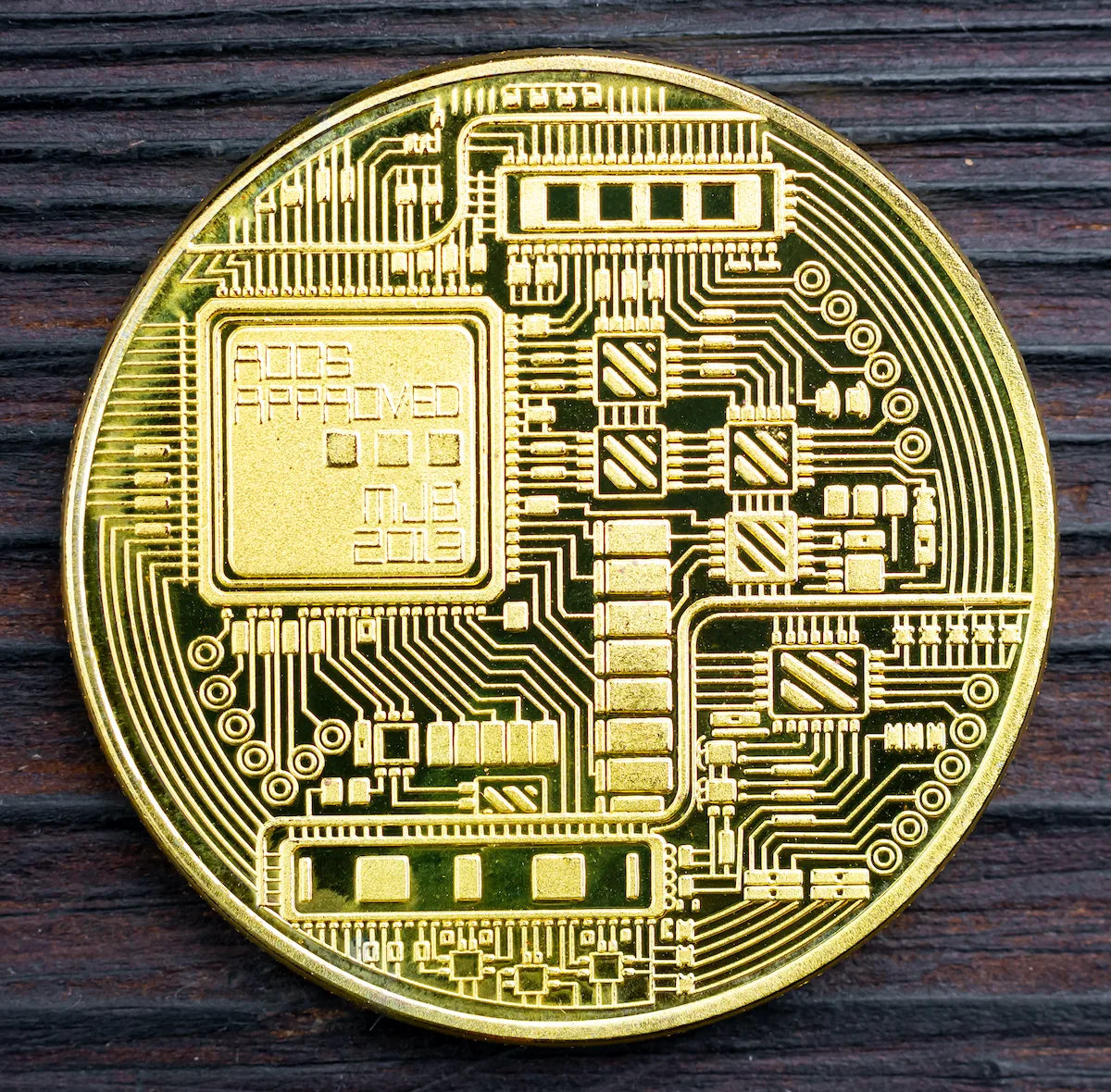
Given the attractive characteristics of gold as money, and the need for money to be digital, it follows that the ideal money system would be some form of digital gold.
Unfortunately, the following two characteristics of gold are mutually exclusive to digital money:
- non-replicable (impossible to duplicate)
- distributed (ownership and transactions do not require a central authority or third-party intermediaries)
Never can digital money be both non-replicable and fully distributed at the same time (like gold). This is because a means of payment is only considered to be fully distributed when it is possible to both own and transact it without the need or permission of one or more central authorities, organisations or any other intermediaries. Thus, if no trusted third party is needed, the information about possession or any transactions performed need not be recorded anywhere and is known only to the owner or the transacting parties.
Within the context of gold:
- Gold can be purchased without any special authorisation.
- In the vast majority of instances, one is not required to identify oneself when purchasing gold, and you will not be entered into any database.
- When one trades gold for products or services, the transaction is solely between the buyer and seller (peer-to-peer).
- No trusted third party is required for the transaction as the seller can independently verify the gold’s authenticity.
- A seller can be confident that gold will retain its value over an extended period of time (i.e. that he can exchange it for other goods and services of comparable value at a future date).
- Information such as sender, recipient, amount, time of transaction, etc. do not need to be reported or stored anywhere.
Therefore gold is a perfect example of a fully distributed money system. However, this is impossible to achieve with digital money, as it would allow the money to be duplicated.
But why is fully distributed digital money replicable?
Because the digital representation of value is just information, consisting solely of ones and zeros on a digital storage medium. As a result, a fully distributed digital money would be easy to replicate (similar to copy and paste on computers), unlike a chemical element such as gold, which is uneconomical to produce synthetically.
This problem is also known as the double-spending problem, because money that can be easily multiplied can also be spent several times.
If you want to know more about the double-spending problem and why it is impossible to simply use ordinary digital files as money that can be sent to someone else by email or text message, we recommend you read this very easy-to-understand article: What Problems Did Bitcoin Solve?
This forms the basis as to why it is theoretically and practically impossible to create a true digital gold equivalent.
Why digital money can never be trustless
If it is impossible to create a true digital gold equivalent, this presents us with the following challenge, which we call the Trustless Digital Money Trilemma:
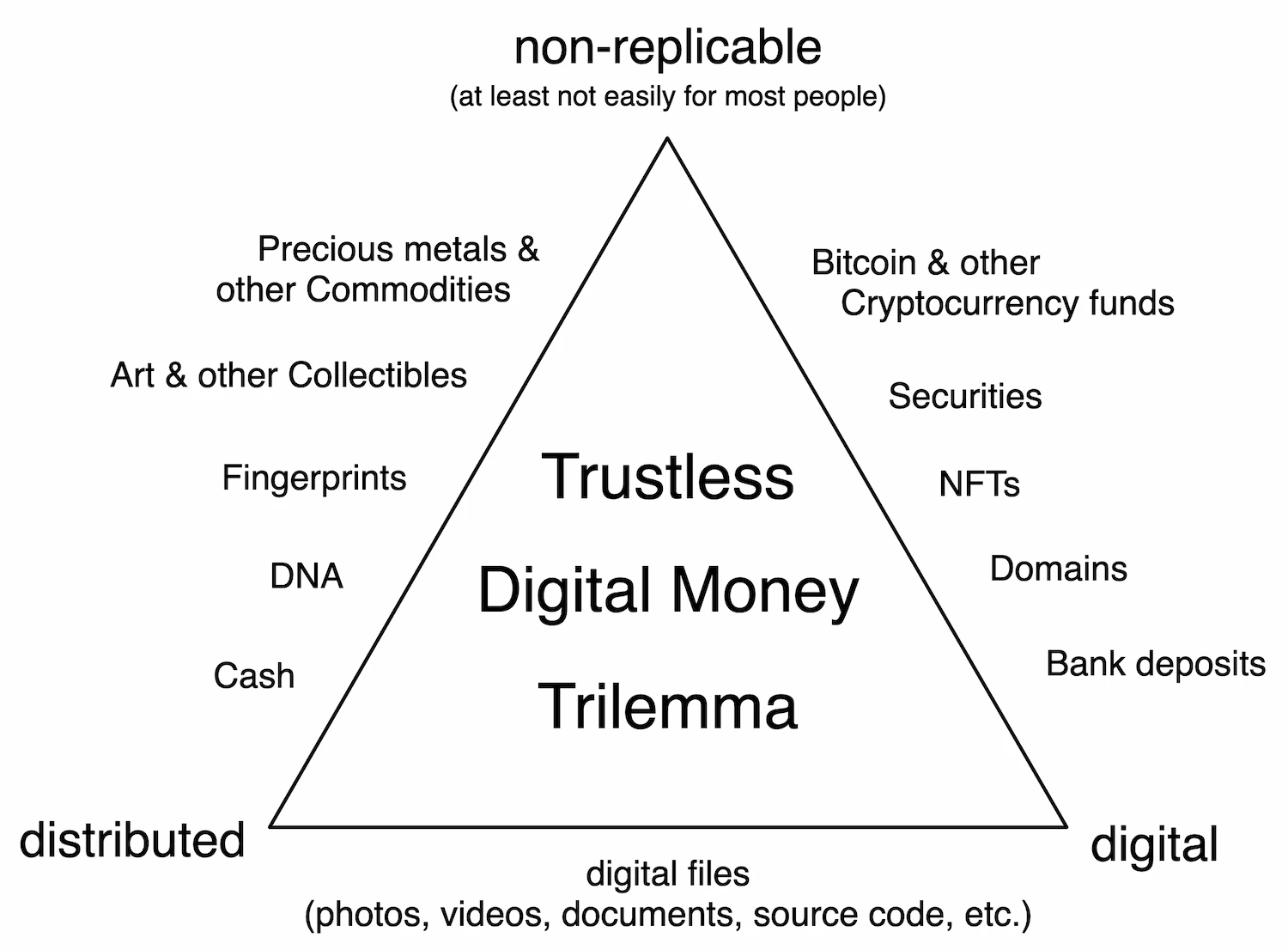
Ultimately, this means that if you want to create a trustless digital money (digital money with the same attractive properties as gold, apart from being tangible), you would have to be able to own it without the information about ownership needing to be stored anywhere other than on the respective owner’s device(s) (i.e. without the need for a ledger). In the figure above, however, it is striking that all of the examples listed, which are digital and non-replicable, use some kind of centralised or decentralised ledger to keep records of holdings and transactions (such as a blockchain in the case of Bitcoin).
The reason all digital representations of value must store records somewhere shows us that something of value is only valuable as long as it is not easily replicable. In other words, if you have to choose between ‘non-replicable’ and ‘distributed’ as a property of digital money, the obvious choice would have to be non-replicable since money that can be replicated holds no value. However, this implies that we must abandon the distributed property. And this in turn means that if the holdings and transactions have to be stored and processed by trusted third parties, a digital money system can not be considered trustless.
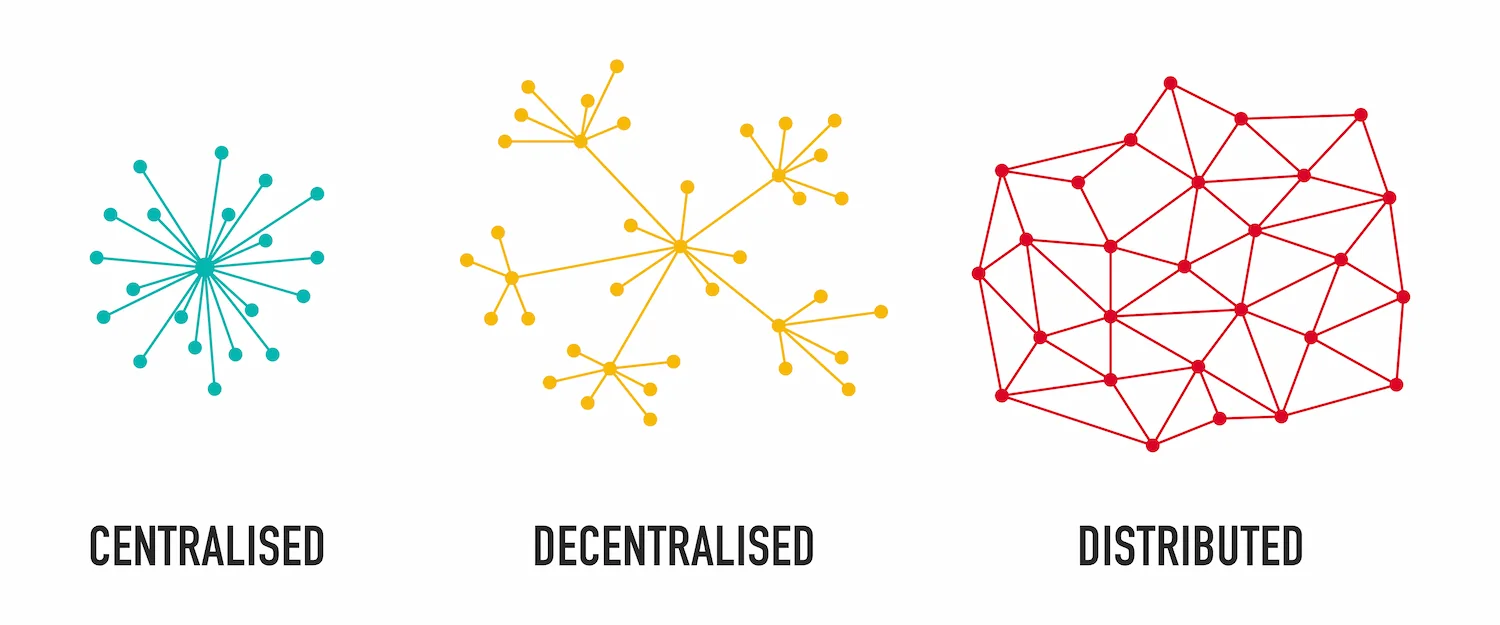
So, if a distributed digital money system is technically impossible, we are only left with decentralised or centralised alternatives. Technically speaking, a centralised system would be much more efficient and easier to implement than a decentralised system; therefore, we should first consider whether a decentralised system is even necessary? Decentralisation would in fact be unnecessary if a single central authority could solve the trust issue.
Unfortunately, there has never been a single authority (person, organisation, government, etc.) in the entire history of humanity that enjoyed the complete trust of all individuals, regardless of how much good they have done in the past or how honourable their intentions may have been. Everybody has critics, including the most widely admired people of the 20th century. Especially bankers, politicians, and government ministers, who wield the most authority over our monetary systems are actually one of the least trusted professions according to a survey conducted by IPSOS in 2019.
Even if there were a single authority that enjoyed the complete trust of all people, there would still be no guarantee that this authority would remain true to its high standards and exemplary conduct, creating a single point of failure. For this reason, a centralised system is unsatisfactory.
To minimise the risk of a breach of trust, the only option left is a decentralised system. Spreading the responsibility for the integrity of a system across many different operators is clearly beneficial to its trustworthiness.
We argued that a digital money system can never be fully distributed (like gold), but rather needs a ledger that is operated by a decentralised network of trusted third parties. Therefore, we believe that the term Distributed Ledger Technology (DLT), which is commonly used to describe blockchain-based solutions and the like, is not entirely accurate. Instead, a better term might be: Decentralised Ledger Technology (which means we can continue to use the abbreviation DLT).
This ultimately means that any digital money system cannot avoid intermediaries who must be responsible for storing the ledger and processing transactions. Nonetheless, we are able to avoid centralisation by involving a large number of intermediaries. By doing so, such a system is neither considered distributed nor centralised, but becomes a decentralised system.
The one thing Satoshi didn’t get right
Subsequently, if intermediaries are still needed to store the ledger and process transactions, users must continue to trust middlemen, even in a decentralised money system.
After all, network operators are also potentially fallible human beings. Imagine a decentralised money system run exclusively by the same individuals that run the fiat monetary system? What difference would it make as to whether users must place their trust in the bankers or in the network operators?
Yes, it is true that in a decentralised money system trust in the individual operators of the system is minimised (inversely proportional to the share of operators), but this doesn’t change the fact that a decentralised money system cannot render this trust superfluous, or eliminate it altogether. In fact, in recent years, it has become abundantly clear that untrustworthy operators holding a significant influence over a cryptocurrency has almost without exception led to its demise.
The same applies to Bitcoin. Satoshi himself stated in his white paper release email back in 2008:
As long as honest nodes control the most CPU power on the network, they can generate the longest chain and outpace any attackers.
Therefore, a condition exists: The nodes that control the most CPU power in the network must be trustworthy.
The certainty that one’s money is safe stems from the fact that one has faith in the miners with the most CPU power (as well as the majority of node-operators). They must be considered trustworthy miners (and node operators).
We are not claiming that any traditional banking system is equally or more reliable than a decentralised money system such as Bitcoin. Quite the opposite! Bitcoin possesses a number of characteristics that make it a very trustworthy system. However, as previously identified, it is theoretically impossible to create a money system in which users do not have to trust any individual or group of individuals.
Consequently, blockchain technology does not eliminate trust. It simply transfers it to other parties. A person who favours a blockchain-based money system over a fiat currency is essentially stating, “I trust the miners, node owners, blockchain developers, wallet developers, cryptologists, (and if funds are stored on an exchange also the exchange owners and their employees), as well as my own technical abilities (e.g. not to lose my private keys) more than I trust central bankers, influential politicians, commercial bank owners, directors, fund managers, risk managers, etc.”.
Even if someone is a software developer and cyber security expert who has read the source code of the most used blockchain node implementations and the wallets he uses and determined that there are no bugs or backdoors, he must still trust the miners and node owners.
Thus, we have discovered that even in a decentralised system, we must still rely on intermediaries.
There is no “way to do this without any trust required at all”.
Trust cannot be eliminated.
This is what Satoshi didn’t get right.
What about blockchain, cryptography, decentralisation…?
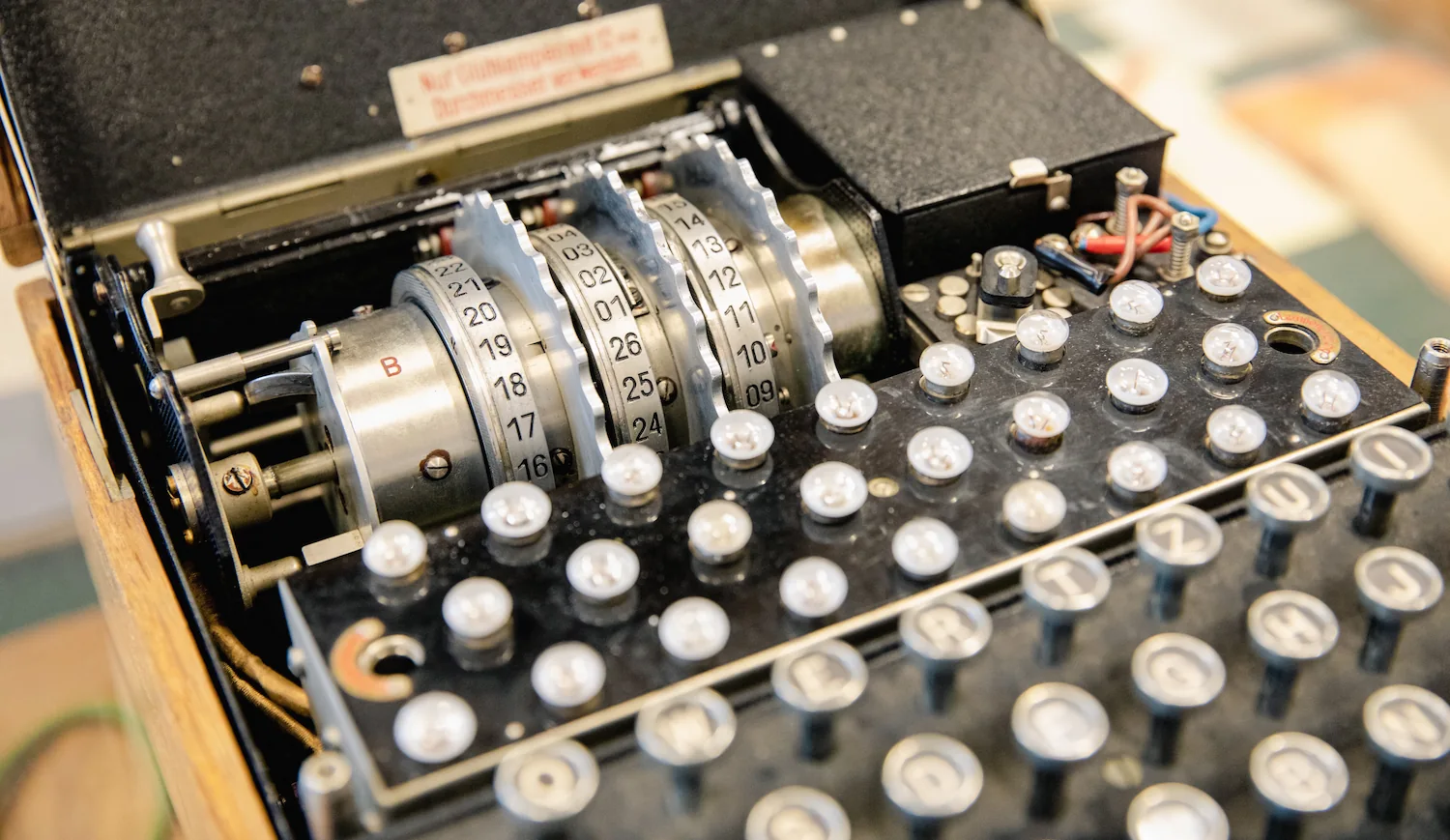
Subsequently, even if a trustless state is not achievable with digital money systems, it appears that ‘trust minimisation’ is at the heart of many cryptocurrencies (at least to a certain degree).
However, it is essential to comprehend the rationale behind this. In reality, this is not because blockchains or cryptography are trust-minimising technologies, but rather because (1) all transactions and processes in the system are 100% transparent, (2) the responsibility for the operation of the system is distributed among many parties, (3) these parties are liable for fraudulent behaviour, and (4) anyone can use the system without revealing their identity.
Transparency:
In a DLT system, transparency means that the rules of the game are clearly defined and accessible to all; that compliance with these rules is easily verifiable by all; that the source code is publicly available; and (for most cryptocurrencies) that all transactions, including the entire transaction history are publicly visible. Obviously this results in maximum transparency and transparency is the key to building trust. (Needless to say, user confidentiality is not part of this transparency. Bitcoin, for instance, is ‘pseudonymous’, meaning the identities behind transactions are not stored on the blockchain.Decentralisation:
When a system is controlled by a single authority, all the trust required (to make that system work) is demanded by that authority. As history has shown us, this authority has complete freedom of action and is highly likely to exploit this position of power at some point. As soon as a second party with equal rights joins the system, the likelihood of untrustworthy behaviour decreases dramatically, as coordination between these two parties then becomes necessary. If there is secret collaboration between several parties to the detriment of others, this is known as a conspiracy. The more operators with equal rights join this system, the more difficult and therefore improbable a conspiracy becomes. This means that as the number of operators in a system increases, the required level of trust in each participant decreases logarithmically.Liability of operators:
In every social system, whether it be a state, a school, a family, a club, etc., there must be rules that allow people to coexist peacefully. However, these rules only make sense if there are consequences for violating them. And depending on the consequences of undesirable behaviour, people in this system adhere to the rules more or less strictly. This implies that the real question shouldn’t be about the severity of consequences, but rather which consequences are chosen to achieve rule-abiding behaviour. However, just as with child rearing, opinions regarding the effectiveness of consequences vary greatly. But one thing is certain: If members of a social system did not fear any consequences for undesirable behaviour, this would not only result in chaos, but it would also encourage certain individuals to seize power within the system (or at least try to). And once they have gained power, they would use that power to game the system for their own benefit. Consequently, every social system requires rules. In the case of Bitcoin, the consequences for not following the rules are that all the work that was done with electrical power is discarded, resulting in a financial loss.Privacy:
First, it should be noted that privacy and confidentiality are not interchangeable terms. Even though all Bitcoin transactions are visible to the public, Bitcoin’s protocol does not store (and thus can’t reveal) the identities of those involved. Above all else, it is crucial to recognise that privacy is a basic human right that is an essential component of greater freedom. The term ‘privacy’ encompasses a variety of facets, including financial privacy. However, anyone who wishes to open a bank account is required to provide identification, so all financial transactions can always be attributed to a specific identity. This means that bank employees can always see how much money you earn, how much you own, and what you spend your money on. Besides, credit card companies can create a tracking profile for each individual based on the information about when, where, and what they purchased. Obviously, government interference in people’s bank accounts, such as freezing or even confiscating funds, is far more severe. And this is precisely why privacy helps to build trust.
Therefore, the combination of transparency, decentralisation, liability of operators, and privacy protection of users in blockchain-based systems ensures that users are more likely to trust such a system than a system where:
- All decisions are made by a small group of people;
- one has little or no insight into, or influence over its processes;
- the operators of the system are not liable for their actions and don’t have to fear any consequences even in case of exploitative behaviour;
- all transactions of all users can be thoroughly screened by the operators; and
- decisions are routinely made to the operators’ advantage and to the users’ detriment.
It is thus the characteristics of a decentralised money system like Bitcoin why many individuals view it as more trustworthy than the alternatives (especially the fiat monetary system). For example, decentralisation enables users to have less faith in individual operators, however, it simply distributes rather than eliminates the need for trust.
It is essential to understand that regardless of a system’s trustworthiness, the overall level of trust a user must have in a money system is always the same independent of the money system. Simply put, it’s just easier for a user to place all the required trust into a trustworthy system rather than an untrustworthy system.
So, is blockchain, cryptography, and decentralisation the answer to the trust issue? Not alone.
Is blockchain, cryptography or decentralisation necessary to solve it? Yes it is.
Consequently, if the combination of blockchain, cryptography, and decentralisation is only a portion of the solution, then something else must be required to provide a working solution.
In order to unravel what this needs to be, we first have to agree on certain terminology surrounding trust, as trust seems to be a very blurry term among DLT enthusiasts and is used differently by a lot of people in this space. Since clarity is the key, let’s unblur it in the next sections.
First Principles of Trust and Money
Terminology - let’s get things straight
Let’s begin by expanding our understanding of trust by examining the following four areas:
- Dictionary definitions
- Social trust
- Perspectives on trust
- DLT system trust
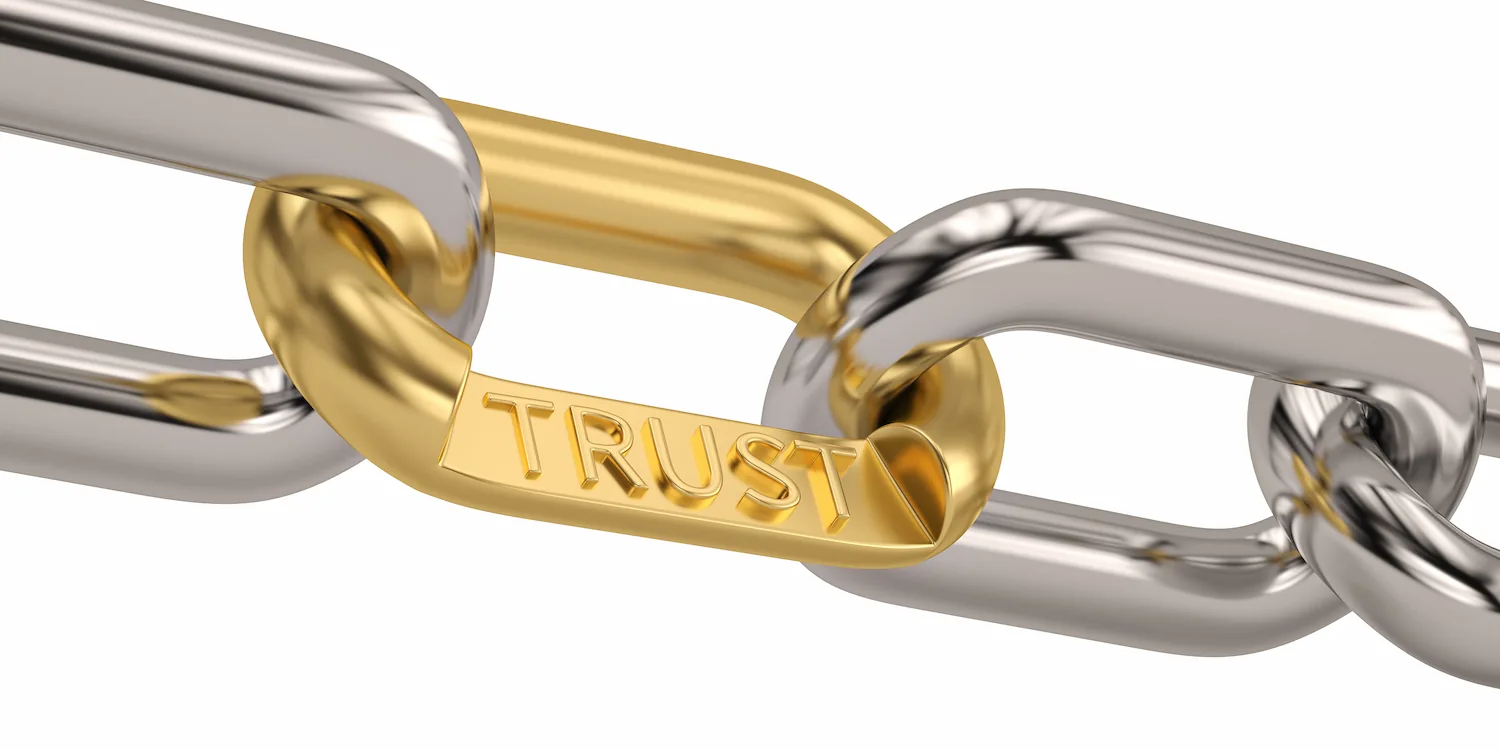
1. Dictionary definitions
If we examine the definitions of trust in some of the most popular dictionaries (Merriam-Webster, Cambridge, Britannica, Collins, and Dictionary.com), we find that they all fall into two main categories:
1. Personality, character, and ability
- assured reliance on the character, ability, strength, or truth of someone or something
- one in which confidence is placed
- the belief that you can trust someone or something
- belief that someone or something is reliable, good, honest, effective, etc.
- Your trust in someone is your belief that they are honest and sincere and will not deliberately do anything to harm you
- reliance on the integrity, strength, ability, surety, etc., of a person or thing; confidence
- a person on whom or thing on which one relies
2. Safekeeping, charge, custody, and care
- something committed or entrusted to one to be used or cared for in the interest of another
- a charge or duty imposed in faith or confidence or as a condition of some relationship
- in trust: in the care or possession of a trustee
- an arrangement in which someone’s property or money is legally held or managed by someone else or by an organisation for usually a set period of time
- the condition of one to whom something has been entrusted
- something committed or entrusted to one’s care for use or safekeeping, as an office, duty, or the like; responsibility; charge
- the obligation or responsibility imposed on a person in whom confidence or authority is placed
These two categories complement one another. You would never entrust your assets to a person if you lacked confidence in their character, for instance. You could also say that at level 1, you trust a person to have a favourable attitude towards you, to tell the truth, to be able to complete an assigned task, etc. So, let’s refer to the first level of trust as ‘shallow trust’.
However, the second level of trust (let’s call it ‘deep trust’) goes even further and is demonstrated when you entrust someone with something of great value to you. For instance, a secret, responsibility over one’s assets, responsibility over one’s life or the life of a loved one, etc. Therefore, the second level of trust is more profound than the first.
In a DLT system, deep trust is required, as shallow trust in third-party intermediaries is insufficient to entrust one’s assets to them.
2. Social trust
The sources listed below all indicate that there are two distinct types of social trust:
- Social trust: its concepts, determinants, roles, and raising ways
- The Impact of Trust on the Quality of Participation in Development
- Impact of Institutional Trust on Subjective Well-being in Selected Asian Countries
- Influence of Interpersonal and Institutional Trust on the Participation Willingness of Farmers in E-Commerce Poverty Alleviation
- The Relation between Interpersonal and Institutional Trust in European Countries: Which Came First?
- OECD Guidelines on Measuring Trust
The above publications all differentiate between interpersonal and institutional trust.
In the first chapter of his book titled Social Trust and Economic Development, O. Yul Kwon defines the two subtypes of trust as follows:
Interpersonal Trust
Individuals’ expectations of other members of society to act and behave in a way that is beneficial to these individuals or at least not detrimental to them. Interpersonal trust reflects people’s subjective perspective of others’ reliability without legal commitment, and involves a degree of risk and uncertainty. Hence, trust involves two components: expectations and willingness to take risky actions based on the expectations.Institutional Trust
Institutional trust is the confidence of citizens in institutions. Citizens expect institutions to perform efficiently, effectively, fairly, and ethically in accordance with the roles assigned to them by law or with social norms in the eyes of citizens. People’s trust in institutions is not the same kind of trust as that between each other as individuals. Interpersonal trust is based on immediate, first-hand experience of other individuals, whereas institutional trust is more generally learned indirectly and at a distance, usually through the media and social intercourse. Interpersonal trust is an expression of the basic features of trusting personalities, whereas institutional trust is based on an evaluation of the performance of institutional functions.
Despite the fact that we were unable to locate any text in which Satoshi distinguishes between interpersonal and institutional trust, the impression given is that he had no problem with interpersonal trust, but only with institutional trust.
Since it is impossible to eliminate trust from a digital money system, we can conclude that every digital money system always falls into one of these two categories of trust. Banks and other traditional financial institutions clearly belong to the institutional trust category, whereas DLT systems, which can be operated by ordinary people make use of interpersonal trust.
3. Perspectives on trust
As noted at the outset of this article, Satoshi identifies trust as the major issue, as evidenced by the following quote:
The root problem with conventional currency is all the trust that’s required to make it work.
But what kind of trust was Satoshi referring to in his criticism of conventional currency? On the basis of all of his published statements and comments, one can infer that he was referring to ‘blind trust’ (i.e. blind faith) in the majority of instances.
A system in which compliance with the rules of all system operations is easily verifiable is always superior to a system based on blind trust. At least when the outcome is essential and matters more than the relationship, as is the case with a money system. This is why we must be able to verify the correctness of all operations in a money system.
Unfortunately, it is nearly impossible for the average person to obtain deep insights into the internal operations of banks and financial institutions, let alone influence them, which is why these systems demand a high level of blind trust from their users.
But if blind trust is required to make a money system work, then trust in the operators becomes a dependency. And according to Nick Szabo personal property has not and should not depend on trusted third parties, because they are security holes. Therefore, if a system depends on blind trust to function, it has a dependency on security holes. And since security holes pose risks to the system’s users, such a system is inherently dangerous. This obviously discourages users from utilising such a system.
Instead, we require a money system that is widely trusted (and therefore utilised) by as many people as possible. To accomplish this, a money system must minimise the risk for users, which necessitates as few security holes as possible, which in turn requires a minimal dependence on blind trust in the system.
So, what we actually want is blind trust dependency minimisation rather than trust minimisation.
This leads us to assume that every time Satoshi spoke critically about trust, he was criticising the dependence on blind trust.
Here are two examples to illustrate this point:
- When someone says: “Trust me please”, and you have no option but to comply, then this is a dependence on blind trust.
- On the other hand, when someone says: “Don’t take my word for it, see for yourself” and provides all the evidence required, then you’re not required to trust them blindly, which builds trust (as long as the evidence matches their words).
Moving forward, it is important to differentiate between ‘trust’ and ‘blind trust dependency’, because they are negatively correlated to each other. The lower the dependency on blind trust the higher the trust in that system, and vice versa.
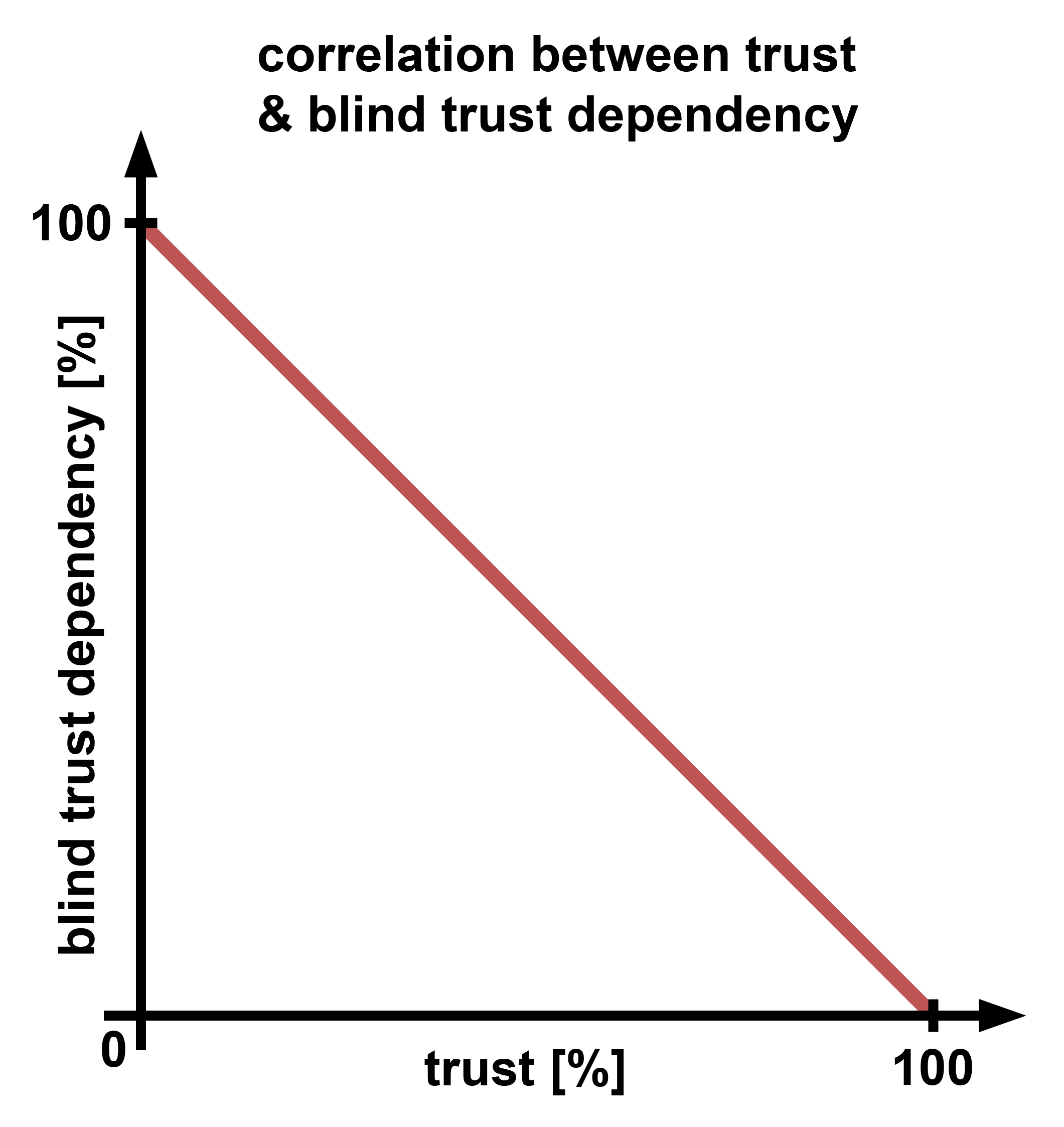
In other words, every social system (especially money systems) relies on the trust of its users. Whether it be blind trust, or trust based on the users’ ability of verification of, and participation in the operation of the system. The total amount of trust in any social system is always a combination of these two components (i.e. the sum of the two values of both axes of the graph shown above, so to speak).
In summary, these are the two perspectives on trust:
Good trust:
Voluntary trust is a positive quality in and of itself! It makes users feel safer, attracting more users as a result.Bad trust:
Dependence on blind trust is bad! It increases the security risk for users, thereby discouraging their use of such a system.
So, the question is now: how to replace blind trust dependency with user-generated trust? To determine this, we must identify the elements that inspire user confidence in a DLT system.
4. DLT system trust
The overall trust of a DLT system consists primarily of the five components listed below:
- Transparency of the technology
- Security & stability of the technology
- Decentralisation of operators
- Liability of operators
- Privacy of users
In the previous section What about blockchain, cryptography, decentralisation…? we did not address the security and stability of the technology, as we can assume that the IT systems of legacy financial institutions are equally secure and stable from a technological point of view. Thus, this isn’t an advantage of DLT systems over the legacy financial institutions. However, this does not diminish the importance of this element in the overall trust in DLT systems.
To make it as simple as possible for users to hold trust in a money system, all five of these components are equally (or similarly) vital. It is inadequate to be strong in only four areas, because as soon as one area is neglected, trust in the system as a whole decreases proportionally.
Therefore, if any of the following conditions are met, the system’s overall credibility declines considerably:
- Source code that is not open; no well-defined and publicly visible rules; or inability to verify compliance with said rules;
- utilisation of unstable technology or frequent system outages;
- a person or small group can exert substantial influence over the system’s operation, rules, or development;
- the operators of the system need not fear any consequences in the event of fraudulent activity; or
- all transaction details (who acquired what, when, and where), as well as the identities of those conducting the transactions, are publicly accessible.
Therefore, a system with no transparency, an insecure or unstable technology, very little or no decentralisation, nothing to lose for its operators in the event of fraudulent behaviour, and no privacy for its users has the lowest level of trust and is therefore the most dangerous system for its users.
Compared to this, a system with complete transparency, a very safe and stable technology, high degree of decentralisation, high liability of its operators (bad actors have a lot to lose), and high user privacy protection enjoys the highest level of trust and is thus the safest system for people.
Despite the difficulty (or perhaps impossibility) of quantifying trust in a DLT system, let’s attempt it. A simplified yet descriptive method for determining the overall trustworthiness of a DLT system could be to:
- Evaluate and rank each trust area (this is partially subjective)
- Determine the respective trust factor between 0 and 1 for each area
- Multiply all of these trust factors
On the X-axis of the subsequent graphs, a value can be assigned based on the degree of transparency, security & stability, decentralisation, operator liability, and user privacy. The Y-axis can then be used to determine the trust factor of the trust area based on the X-axis’ value.
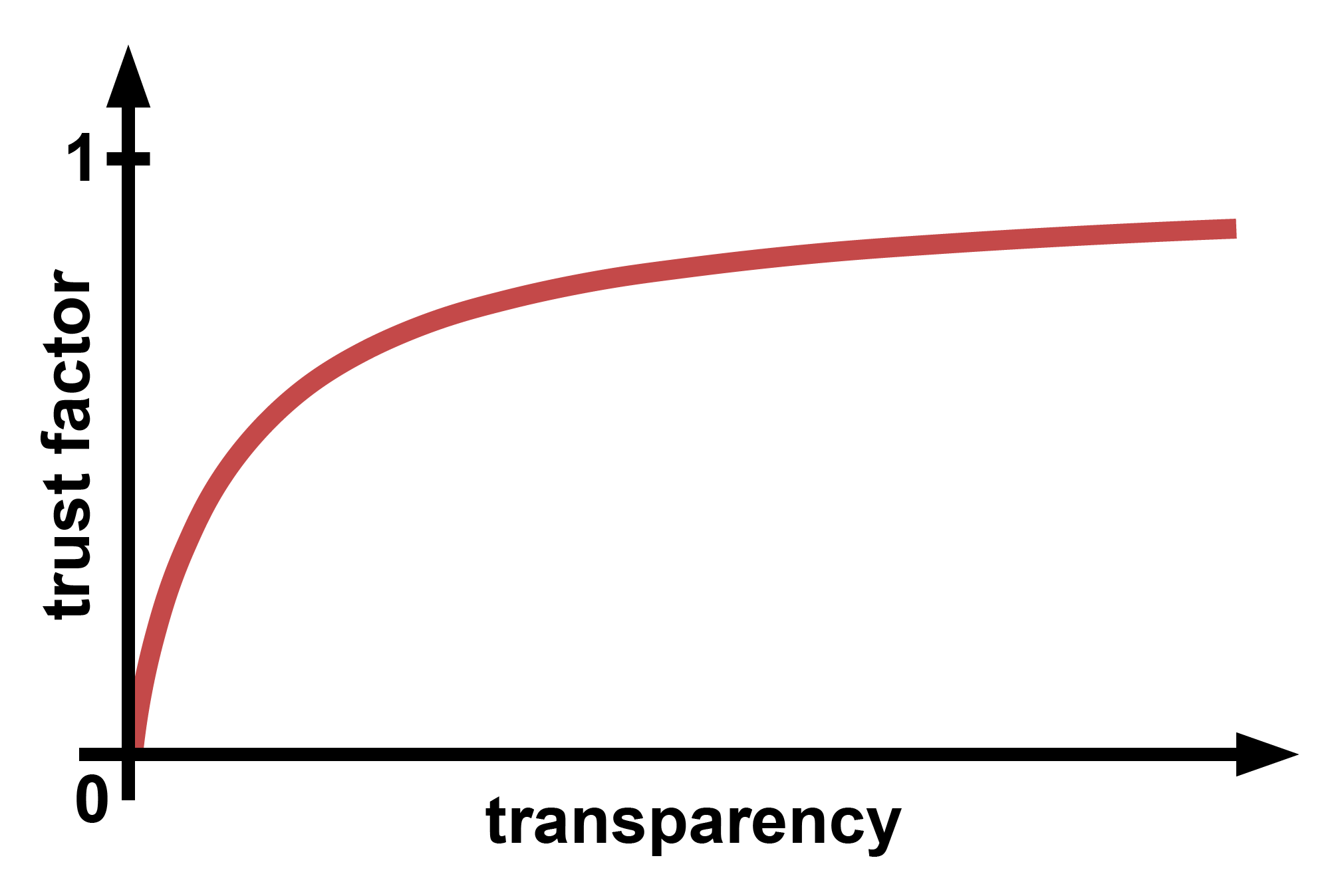
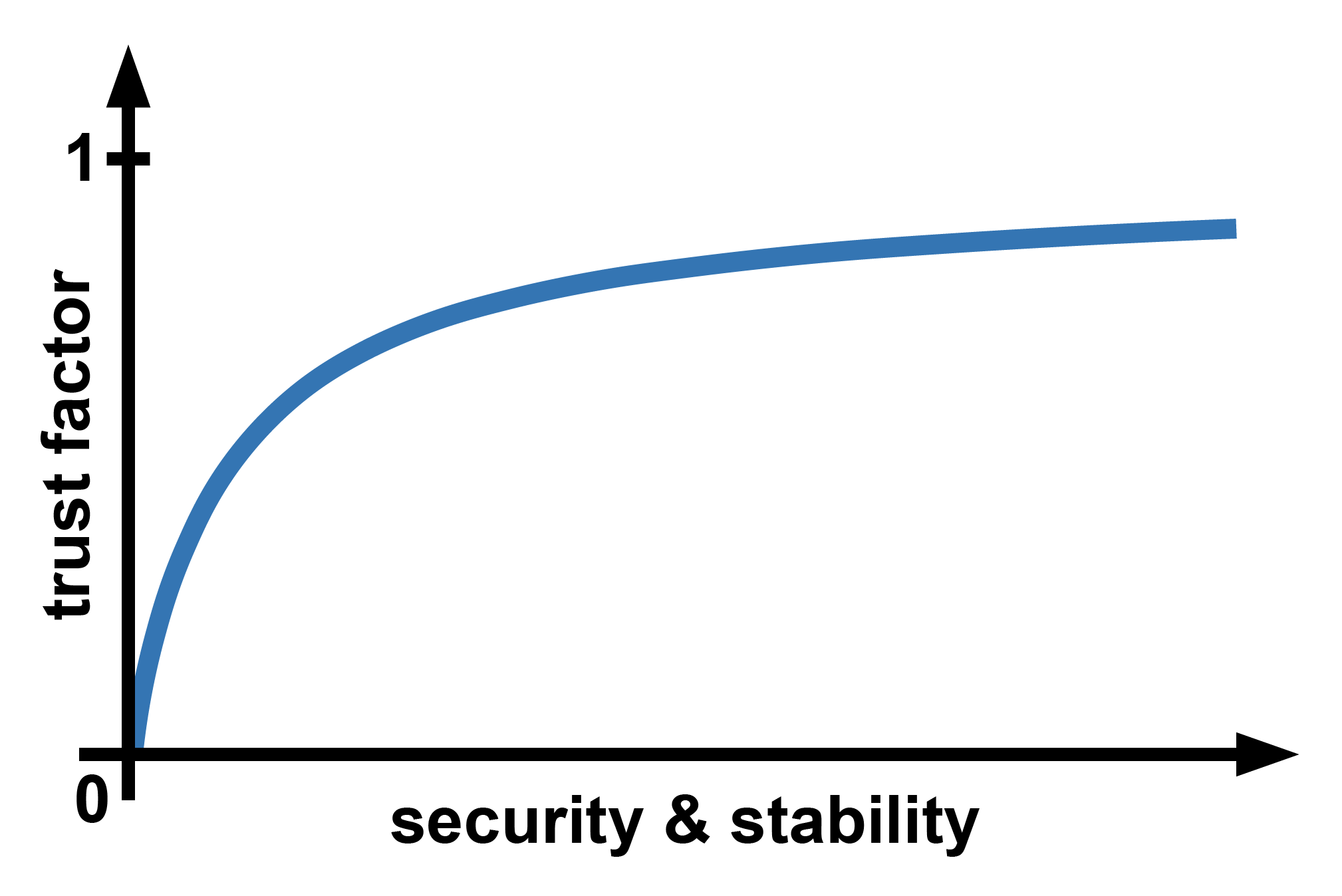
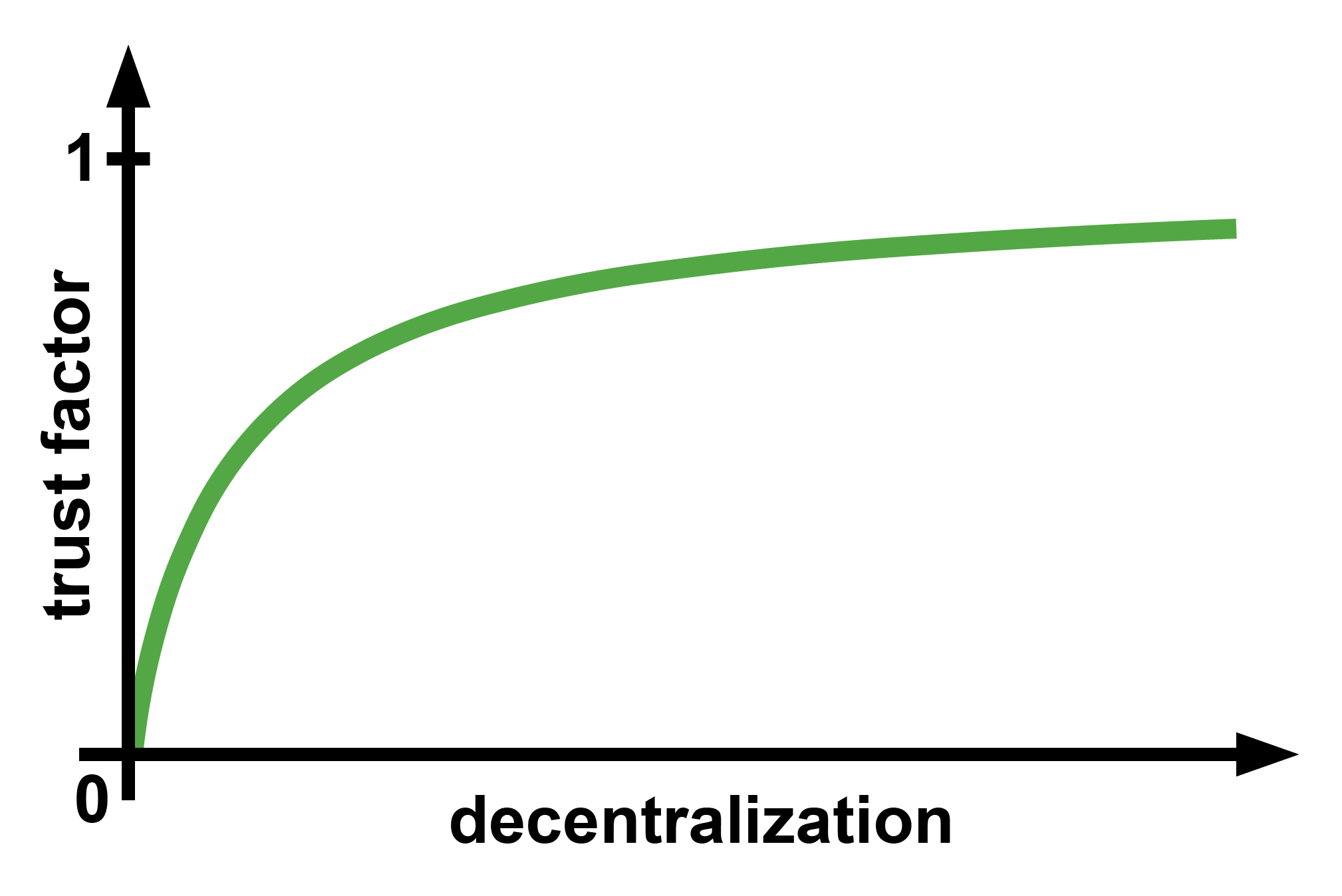
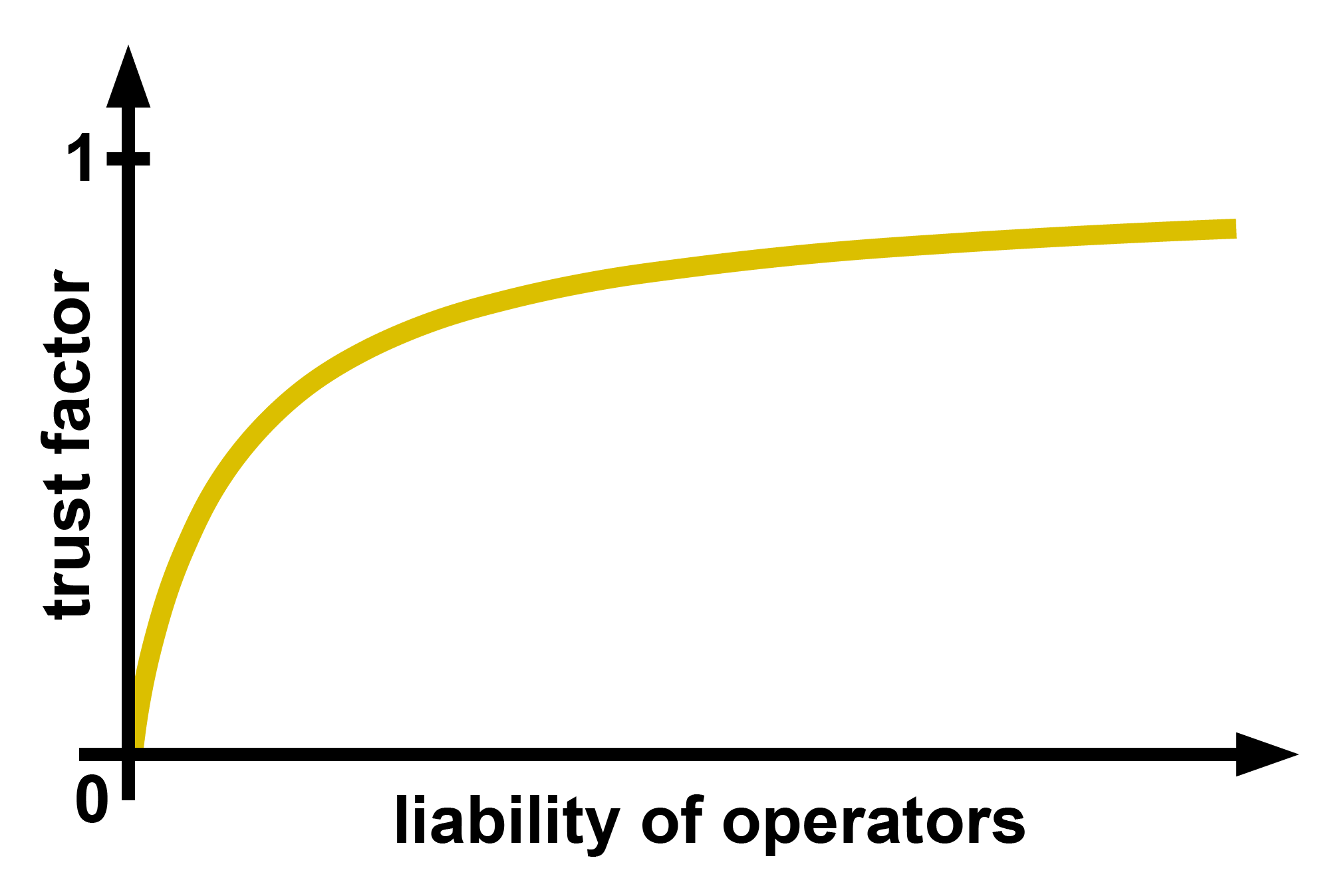
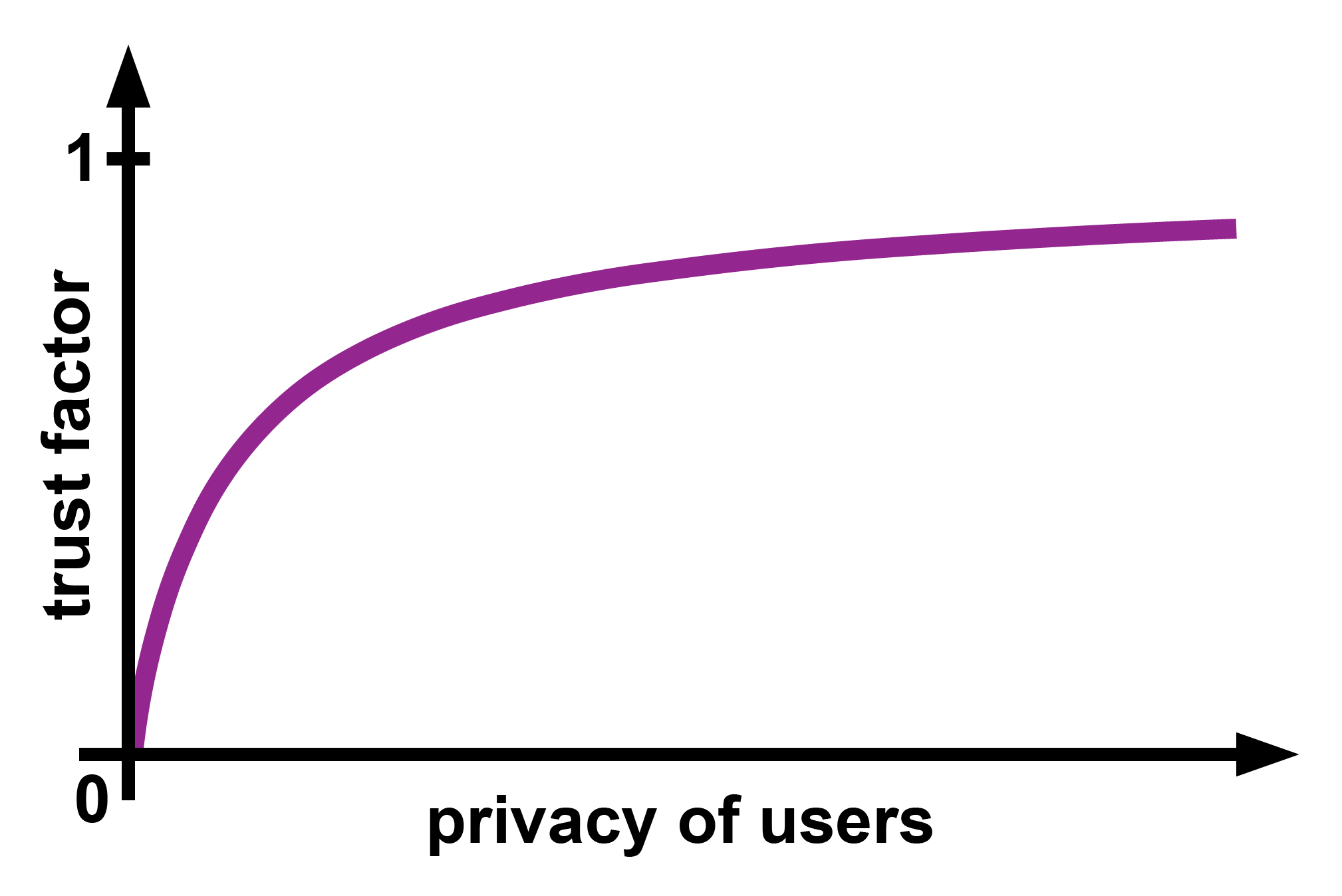
These five trust factors must be multiplied together to determine the DLT system’s overall trust. Thus, the formula could appear as follows:
Consequently, even if only one of the trust factors were to be zero, the system’s overall trustworthiness would also be zero percent.
Now that we have clarified some preconceptions about trust, let’s get back to the underlying cause of the problem relating to our current monetary system.
Understanding the root problem
Some interested readers may be wondering why we have only referenced Bitcoin and none of the altcoins (alternative cryptocurrencies) thus far. However, there is a good reason for this, as aptly described by Bryan Solstin in an interview with Robert Breedlove:
There are so many altcoins out there that are trying to be better than Bitcoin. And as a politician I’m running to fix a broken monetary system. Nothing else is sufficiently decentralised. Nothing else can fix that problem. Only Bitcoin can do that. It doesn’t matter if you have additional features or functions. Only Bitcoin fixes the broken monetary system.
Thus, the issue is the broken monetary system. And according to a recent Fidelity report, Bitcoin is the most secure, decentralised, and sound digital money currently available. That’s why other DLT solutions are often called DINO (decentralised in name only).
Here’s is the summary of the Fidelity report (page 2):
- Bitcoin is best understood as a monetary good, and one of the primary investment theses for bitcoin is as the store of value asset in an increasingly digital world.
- Bitcoin is fundamentally different from any other digital asset. No other digital asset is likely to improve upon bitcoin as a monetary good because bitcoin is the most (relative to other digital assets) secure, decentralized, sound digital money and any “improvement” will necessarily face tradeoffs.
- There is not necessarily mutual exclusivity between the success of the Bitcoin network and all other digital asset networks. Rather, the rest of the digital asset ecosystem can fulfill different needs or solve other problems that bitcoin simply does not.
- Other non-bitcoin projects should be evaluated from a different perspective than bitcoin.
- Bitcoin should be considered an entry point for traditional allocators looking to gain exposure to digital assets.
- Investors should hold two distinctly separate frameworks for considering investment in this digital asset ecosystem. The first framework examines the inclusion of bitcoin as an emerging monetary good, and the second considers the addition of other digital assets that exhibit venture capital-like properties.
According to this Fidelity report, Bitcoin’s success as a monetary good does not render all other DLT solutions useless. “Rather, the rest of the digital asset ecosystem can fulfill different needs or solve other problems that bitcoin simply does not.”
However, in this article we will only consider Bitcoin, as we are particularly interested in the solution to the underlying problem that sparked the entire DLT movement.
But before examining solutions such as Bitcoin, it is crucial to first comprehend the problem surrounding our current monetary system. One can only recognise the value of a solution after having grasped a thorough understanding of the problem at hand. In other words: The greater a person’s awareness of the harmful effects of centralised money, the sooner they recognise the advantages of a decentralised money system. If people are not yet aware of the gravity of this issue, the result is often reflected in articles such as There’s No Good Reason to Trust Blockchain Technology.
Regarding trust, the article has some interesting food for thought, but it becomes clear that the author (Bruce Schneider) is unaware of the immense implications of centrally controlled currencies, which is precisely why he does not recognise the value of sound money. Nevertheless, he makes a few valid assertions about trust, including:
Trust is essential to society. As a species, humans are wired to trust one another. Society can’t function without trust, and the fact that we mostly don’t even think about it is a measure of how well trust works.
This is very true. At least until the point at which trust begins to erode. The vast majority of people in the world are not as privileged as Bruce Schneider, who has the prerogative of living in a country and using a financial system that has not yet betrayed his trust (at least not to the extent that he would have noticed). However, once he also suffers this threat, he will likely no longer be able to claim that he “mostly [doesn’t] even think about it”.
Therefore, we only start considering the role that trust plays in any given situation, relationship, or system when it is removed. As soon as trust is broken, it often becomes painfully apparent. This is precisely what occurs to countless people all over the world, every single day.
Causes of the breaches of trust
Most would likely agree that we live in the most prosperous time in human history today. Poverty, sicknesses, and ignorance are receding throughout the world, due in largely to advances in economic freedom. However, we view the growing concentration of power in the financial sector as one of the greatest obstacles in preventing us from achieving our objective of expanding freedom, prosperity, justice, and peace for all human beings.
A lot of people have already noticed that there is something wrong with our incumbent monetary system, but they can’t quite put their finger on it. They just notice that the ever-growing mountain of debt can never be paid back, that there is a lack of money everywhere, that the social issues in our society are increasing, and that the inequality in this world seems to be getting worse and worse. Even without knowing the exact causes, it is clear to many that these issues must somehow be linked to our monetary system, which has led to the aforementioned widespread mistrust of financial institutions.
Satoshi’s initial public announcement of Bitcoin touches on this:
The central bank must be trusted not to debase the currency, but the history of fiat currencies is full of breaches of that trust. Banks must be trusted to hold our money and transfer it electronically, but they lend it out in waves of credit bubbles with barely a fraction in reserve. We have to trust them with our privacy, trust them not to let identity thieves drain our accounts.
Within this statement, Satoshi criticises the following three points:
- debasing the currency
- lending [the money] out in waves of credit bubbles with barely a fraction in reserve
- letting identity thieves drain our accounts
In the past three years, the majority of nations have printed more money than ever before (or, to be precise, entered some large numbers into a software system). And the ramifications of these monetary policies on the middle and lower strata of the population are becoming increasingly severe in many countries.
Elon Musk commented on this in April 2022 by stating:As the saying goes, when the government first prints money, everyone feels like a winner, but in the end no one does.
Ross Hendricks also summed it up well in his LinkedIn post There’s nothing more expensive than “free money”.
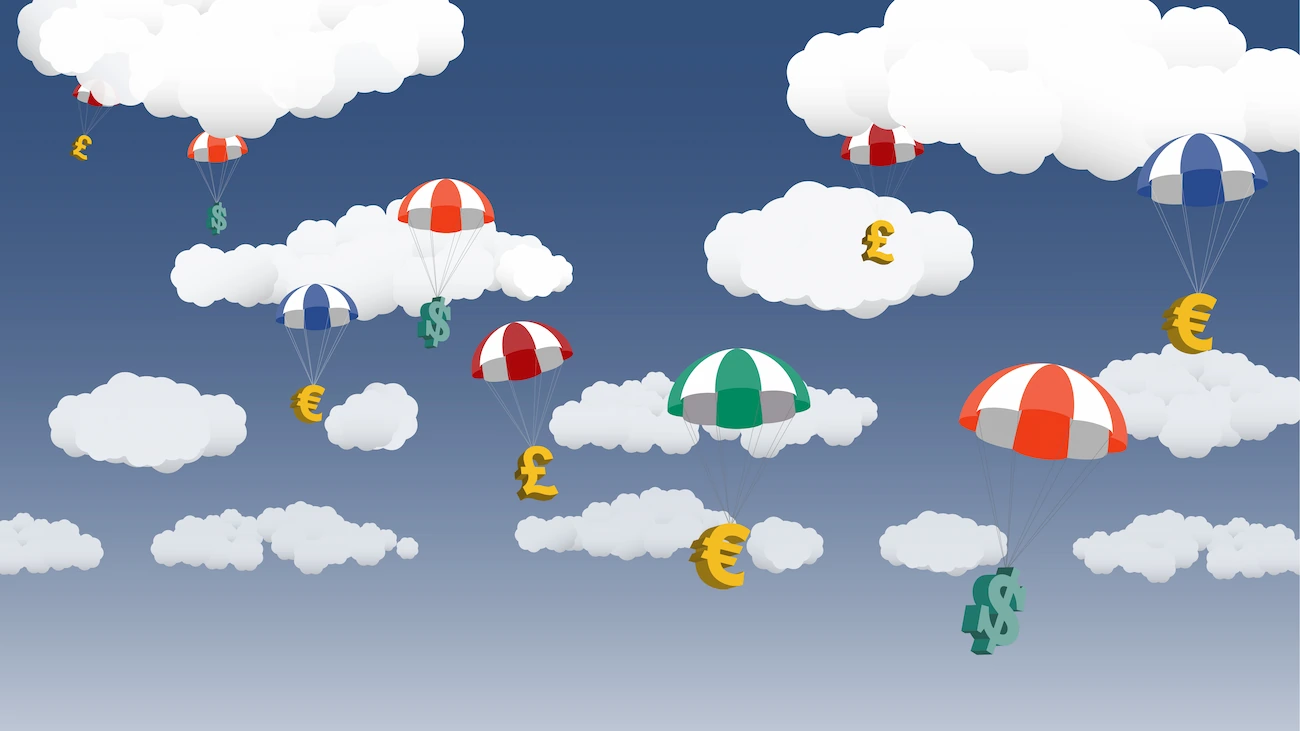
However, Satoshi’s criticisms merely represent the tip of the iceberg. Every year, new banking scandals are uncovered, and the number of individuals suffering (whether aware of the cause or not) from the current fiat monetary systems continues to rise. This heavily counteracts the development of economic freedom (which is the main driver of prosperity).
We are not talking about small local community banks, credit unions, etc. but rather big and powerful financial institutions such as:
The longer you study centrally controlled fiat currencies, the more you realise their unfathomable dark side.
Here are just a few of the repercussions of our current monetary system:
- Human rights violations
- Property
- Expansion of the money supply causes inflation which is a secret theft of time and money
- Printing money is a wealth redistribution scheme from the poor to the rich
- Governments can freeze bank accounts if they have economic issues (like in Argentina in 2001)
- All fiat currencies are collapsing
- Central banks are looting their host nations
- Governments destroy the prosperity of their citizens
- Freedom of speech
- Privacy
- Liberty
- Freedom from slavery
- Equality and non-discrimination
- Security and peace
- Rest and leisure
- Freedom of residence
- Property
- Economic exploitation (of developing countries)
- Environmental degradation
- The dirty investments of major banks around the world
- Banks lent $2.6tn linked to ecosystem and wildlife destruction in 2019
- World Bank and IMF actions have immense environmental consequences
- Many banks are well-documented financiers of the climate crisis
- Global banks ‘failing miserably’ on climate crisis by funneling trillions into fossil fuels
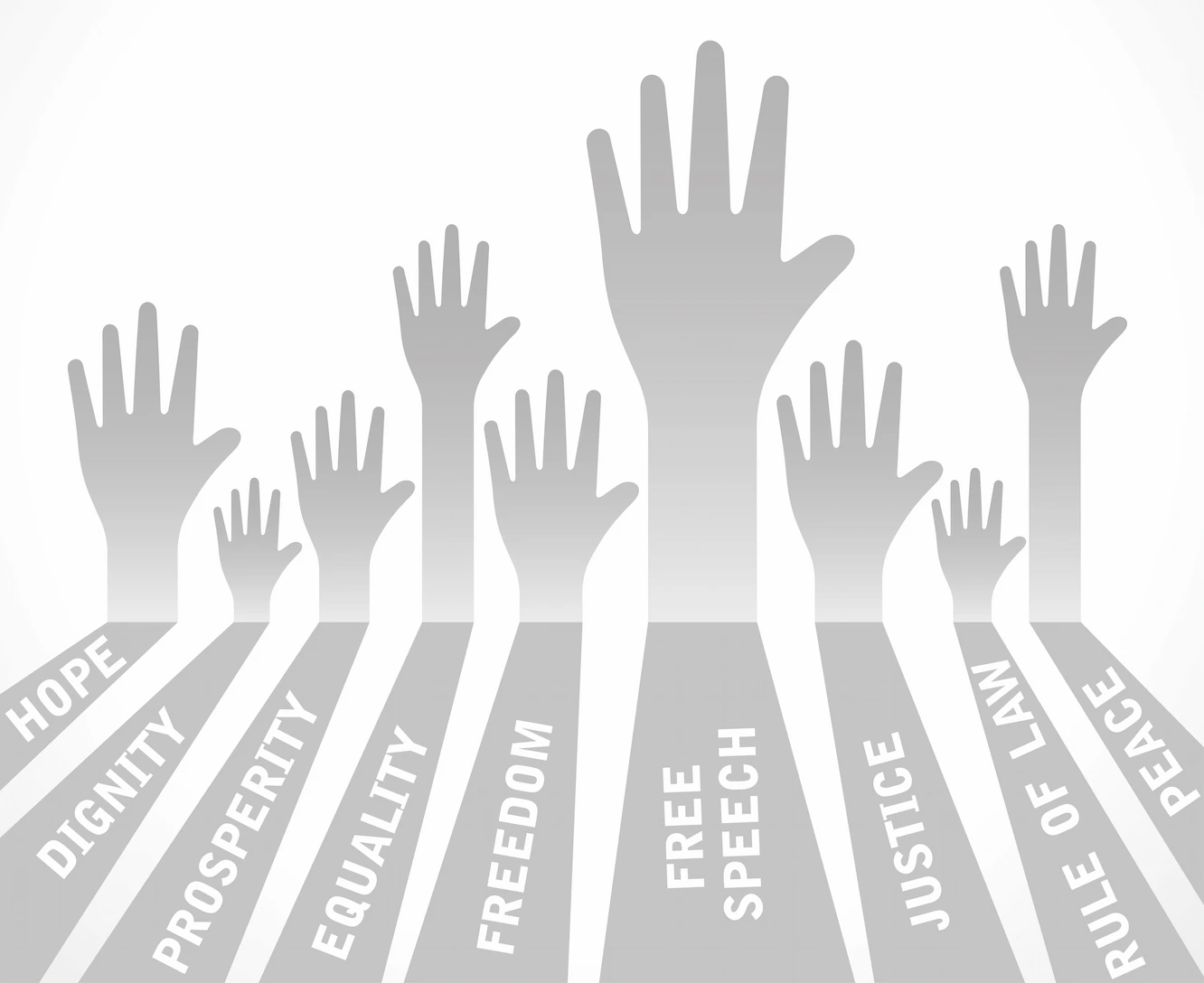
Despite these warnings, Woodrow Wilson still signed the 1913 Federal Reserve Act. A few years later he wrote:I believe that banking institutions are more dangerous to our liberties than standing armies.
Josiah Stamp, a director of the Bank of England (the central bank of the United Kingdom), even went so far as to claim:I am a most unhappy man. I have unwittingly ruined my country. A great industrial nation is controlled by its system of credit. Our system of credit is concentrated. The growth of the nation, therefore, and all our activities are in the hands of a few men. We have come to be one of the worst ruled, one of the most completely controlled and dominated Governments in the civilized world no longer a Government by free opinion, no longer a Government by conviction and the vote of the majority, but a Government by the opinion and duress of a small group of dominant men.
Banking was conceived in iniquity and was born in sin. The bankers own the earth. Take it away from them, but leave them the power to create money, and with the flick of the pen they will create enough deposits to buy it back again. However, take away from them the power to create money and all the great fortunes like mine will disappear and they ought to disappear, for this would be a happier and better world to live in. But, if you wish to remain the slaves of bankers and pay the cost of your own slavery, let them continue to create money.

Not to mention CBDCs, which many agree will be a total human rights disaster. They are worse in every aspect of the human rights violations mentioned above than the current financial fiat system. Despite this, many countries already have a first version in operation, or are currently in the process of testing or developing their own CBDC.
Some may wonder how all this can still be happening in the 21st century? Well, since money is power, the centralisation of money is therefore centralisation of power. And as accurately observed by Lord Acton:
Power tends to corrupt, and absolute power corrupts absolutely.
This maxim is always true independent of the century we live in.
As the tendency towards centralisation continues to grow the serious harmful implications of centralised fiat currencies on the daily lives of a large number of people and our environment will intensify even further.
So, the real problem is that the powerful financial organisations have brazenly abused the trust of the public many, many, many, many, many, many, many, many, many, many, many, many times and have no intention of restoring it. But strictly speaking, it is not the financial institutions themselves (since institutions cannot act on their own accord) but their operators who have abused the public’s trust. Reality has demonstrated that the untouchable operators of these systems tend to act primarily to their own advantage (or that of other influential groups of individuals) and to the detriment of the general public. Unfortunately, this always results in greater poverty for the vast majority of the population and greater wealth for only a few. In other words, it’s an unjust redistribution from the poor to the rich.
This has understandably led to widespread distrust of these financial institutions and the only logical consequence is that the disappointed and frustrated people will seek alternatives.
Regardless of the political spectrum people associate themselves with, the point on which all of them would agree is there should be more prosperity and less poverty in the world. Thus, all people agree on this essential political goal, with only differing opinions on how to get there.
However, increasing centralisation in the financial sector is certainly not getting us any closer to our common goal of less poverty and more prosperity for everybody. As documented throughout this article, many of our socio-political problems stem from our fiat monetary system.
If we want to have a chance of tackling any of the other big social issues we’ve got to figure out the money issue [first].
Ben Dyson
Michael Saylor also gave weight to the fact that the majority of the world’s issues are caused by our fiat monetary system in a recent interview with Lex Fridman:
I believe that Bitcoin is a massive breakthrough for the human race that will cure half the problems in the world and generate hundreds of trillions of dollars of economic value to the civilization.
German banking and development economist Prof. Richard Werner is even confident that Keynes’s prediction that “we would only have to work 15 hours a week” would have come true if the current centralised monetary system had not led to such an unjust distribution of wealth.
But, if we know that the malfeasance, failures, and even crimes of powerful financial institutions result in less prosperity and increased poverty overall, shouldn’t we all do everything in our ability to prevent this? Especially since the next financial crisis is already looming.
Everybody, the left and the right, you know, the communists and the fascists, they’re all fighting about wealth. Because everybody is fighting about wealth when you have a downturn.
Ray Dalio
We presume that the majority of individuals would prefer to prevent this, but just don’t know how.
The need for a free money market
The first obvious conclusion is that alternatives are required. People will only be able to choose their preferred money when widely accepted alternatives are available. The phrase ‘competition is good for business’ applies not only to the commercial world, but also to the free market in general, which includes exchange and payment methods. However, not allowing people to choose their preferred money and forcing a specific money system on them is coercion, and hence unethical and immoral, as particularised above.
This is why Satoshi’s goal with Bitcoin is to provide an alternative to the state’s monopoly on currency.
By allowing people to develop their own money systems and freely choose their preferred one, the best money system will win in the long term. And, as long as the money market is free and fair, the money that delivers us humans closest to the aim of less poverty and more wealth for all will win (which will undoubtedly be the hardest form of money). This would then redistribute power back to the people.
Brian P. Simpson discusses the benefits of a free monetary and banking system in detail in chapter 5 of his book Money, Banking, and the Business Cycle (Ch.5: The Characteristics and Effects of a Free Market in Money and Banking).
Its main message is well summarised in the abstract of this chapter:
This chapter shows that a free monetary and banking system means absolutely no government interference in money and banking. It discusses what is meant by “no government interference.” Such a system is unprecedented in history, except for possibly the very first banks in ancient Greece or fourteenth-century Italy. From the very beginning, or very shortly thereafter, governments interfered in monetary and banking systems to gain advantage for themselves and those they wanted to favor. This interference existed in the form of minting coins, debasing the currency, allowing banks to suspend payment when payment was contractually required on demand, raiding bank vaults, and so on. A free market in money and banking will lead to a level of stability in the economy that will make the economic system seem boring compared to today, since it will virtually eliminate monetary induced financial crises, recessions, and depressions. Developments in the economy will still be exciting; however, the excitement will be confined to rapid rates of economic progress; innovations in products and methods of production; the development of new technologies; the exploration of space and the colonization of moons, planets and other solar systems by private individuals; and a rapidly rising standard of living.
And, unlike the incumbent monetary system, the standard of living would not rapidly rise for just a few people, but for everyone!
If you want to learn more, we highly recommend the money and banking works on the Satoshi Nakamoto Institute’s Literature page, particularly What Has Government Done to Our Money? and The Mystery of Banking by Murray N. Rothbard.
Despite all this, some people are concerned that a money system that is not regulated by their government may encourage crime and so result in a greater crime rate. This concern, however, is unfounded for two reasons:
- The growth of legitimate cryptocurrency usage is far outpacing the growth of criminal usage. Or to quote from the “_Crypto is Bad for (Bad) Business_” section of the Messari Report for 2022:
The whole “crypto is for criminals” schtick is categorically false - a myth perpetuated only by the ignorant and the willfully misleading. As mentioned earlier, illicit activity comprises just 0.34% of crypto transactions according to Chainalysis, lower than incidence of illicit activity in “regulated” financial services, where banks have been notoriously effective money launderers for cartels and ultra-rich tax evaders.
It is clearly much more difficult to establish a link between the crime rate and the feasibility of crime than it is to establish a link between the crime rate and the policies of the individual government. A study on the relationship between quality of governance and occurrence of crime comes to the following conclusion:
The findings suggest that different indicators of governance are significantly related with different categories of crime such as homicides, robbery, kidnapping and burglaries. Almost all four types of crime are affected equally by the governance indicators. Socioeconomic conditions, corruption, law and order, external conflict, investment profile and ethnic tensions are significantly related with crime. Among all the economic variables, only per capita GDP and income inequality had a significant impact on homicide.
Consequently, combating crime with a centralised monetary system would only address the symptoms and not the underlying cause.
And even if a government-controlled monetary system made it simpler for law enforcement to crack down on criminals, we still believe that defending the following is far more important:
- Human and property rights;
- developing countries; and
- the environment.
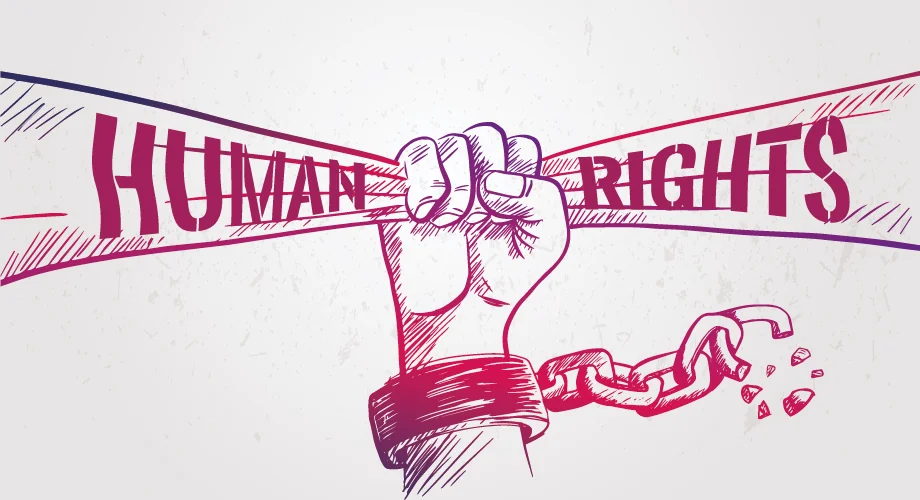
In fact, not those who are opposed to concentration of power (as in the example of central banking) struggle to justify their position, but those who continue to support central banking and power concentration despite being aware of the human rights violations, environmental degradation and tyranny of entire nations that come along with it.
Or as Alex Gladstein puts it:
Maybe you don’t need Bitcoin and maybe you don’t understand Bitcoin and maybe PayPal, Venmo or your bank account serve your needs just fine. But don’t write off Bitcoin as simply a vehicle for financial speculation [or a tool for criminals]. For millions of people around the world it’s an escape hatch from tyranny and nothing less than freedom money.
… and:
If we keep growing this… and if Bitcoin thrives, humans will have a money:
- that can’t be censored by authorities;
- that can’t be devalued by governments;
- that can’t be monopolised by corporations;
- that can’t be easily mass surveilled;
- that can’t be stopped by borders; and
- that can be accessed by anyone.
And that’s why Bitcoin matters for human rights.
Does this settle the question of the raison d’être of cryptocurrencies (or decentralised money systems in general) once and for all?
One thing is for certain: In the coming years, we will be forced to endure the negative impacts of centrally controlled currencies. This will result in a growing need for alternative money systems. It was precisely for this reason, Satoshi created Bitcoin during the last financial crisis.
The motivation behind this article
So, if a solution to this problem already exists, what is the purpose of this article?
Bitcoin promised to be a peer-to-peer electronic cash system, but as we have seen in recent years, Bitcoin no longer fulfils that promise.
You read and hear virtually everywhere that Bitcoin is a peer-to-peer payment method, i.e. a direct transaction between payer and payee. As previously demonstrated, this is technically impossible for a digital money system. Peer-to-peer merely describes the type of network used for communication between the Bitcoin network’s operators, not the manner in which payments are settled between two parties (as is possible in the case of gold).
However, this part was not the motivation for this article, but rather the assertion that Bitcoin is an “electronic cash system”. Bitcoin cannot be considered an electronic cash system suitable for micropayments if it lacks several of the essential features of cash, such as:
- no scalability limits
- instant transactions
- final transactions (once cash is handed over the transaction is final)
- no transaction fees (or consistently very cheap)
- energy efficient
- untraceable
All of these characteristics are needed for a monetary good to be viewed as a serious alternative to the current fiat monetary system. If not, it’s just another asset class (albeit a superior one to all the other asset classes, as Bitcoin is quite evidently an above-average store of value so far). Nevertheless, based on all of Satoshi’s publications, we may conclude that he never intended to create a new asset class, but rather a decentralised money system with all the characteristics of sound money (i.e. a money system that cannot be devalued). Satoshi probably just didn’t expect such a high demand for Bitcoin, so that one day it will become less attractive as a medium of exchange and mainly be used as a store of value.
Since the very essence of money is its utilisation, we must facilitate these cash-like characteristics to the greatest extent possible. As Dr. Saifedean Ammous says in his book The Bitcoin Standard (page 155):
As money is acquired not for its own properties, but to be exchanged for other goods and services [...]
Or as Ludwig von Mises puts it:
[...] Money has no utility other than that arising from the possibility of obtaining other economic goods in exchange for it.
Everything else is not money.
One could argue that (1) Bitcoin need not be a good medium of exchange in order to be a good store of value, or that (2) we place too much weight on Satoshi’s intentions. Let’s examine these two arguments separately:
Yes, it is true that a technology does not necessarily have to be used exclusively for the reason for which it was designed. If a technology is also well-suited for a different purpose, of course it can be employed for that purpose as well. And in the case of Bitcoin, it has performed exceptionally well as a store of value thus far. But if Bitcoin can only be used in a limited capacity as a medium of exchange, it cannot replace the fiat currency systems. Because for this it would have to exhibit the cash-like characteristics listed above. One does not drive global adoption of Bitcoin by investing one’s savings in Bitcoin and waiting for its appreciation, but by using it for day-to-day payments and educating others about the problems and solution to our broken monetary system.
It is not necessary to be a fundamentalist of the Bitcoin white paper to believe that the medium of exchange function is as vital for a monetary good as the store of value function. The real issue that has led to the whole Bitcoin (BTC) vs Bitcoin Cash (BCH) debate is that Bitcoin by itself can only be good at one of these two functions. And logically, the market chose BTC, because there are already plenty of good media of exchange out there, but there is no comparable store of value to Bitcoin that has all the characteristics of sound money. But what we seek is a monetary good that is at least as good as Bitcoin at storing value and also possesses the features of cash. Because, regardless of Satoshi’s viewpoint, the ability to be a scalable medium of exchange is crucial for a global money system. There’s absolutely no reason why somebody wouldn’t want a money system to be a good medium of exchange so long as the store of value function isn’t adversely affected. To the contrary, if a superior store of value is also a superior medium of exchange, this will increase usage and thus adoption, which in turn will be reflected in the price. In other words, even someone who owns bitcoin primarily for the appreciation of its value should be a strong proponent of the medium of exchange function, because it accelerates the intended process.
Unfortunately, Bitcoin will never be a good medium of exchange on layer 1 (i.e. with its main blockchain). Because of this, thousands of Bitcoin alternatives as well as layer 2 solutions have emerged, with many of them attempting to remedy Bitcoin’s scalability issue. To acquire some of these cash-like characteristics, Bitcoin’s competitors have had to cut back on either security or decentralisation, which of course has not proven to be a successful tactic.
Sadly, layer 2 solutions are not an effective remedy, as all known layer 2 concepts and solutions introduce new shortcomings, such as:
- Serious trade-offs in security and/or decentralisation
- Additional on-boarding friction
- Less liquidity on the primary blockchain
- Significant increase in the complexity of the system (which opens up all sorts of attack vectors)
- Bitcoin Lightning Network specific tradeoffs:
- Lightning Network is evolving towards an increasingly centralised architecture (which would violate Bitcoin’s fundamental promises of security, censorship-resistance, neutrality, etc.)
- Confirmation of a transaction on the Lightning network can still take up to a minute, which isn’t fast enough for retail payments
- Risk of losing money without doing anything wrong (which can be especially painful for people on low incomes)
- Lightning’s routing causes privacy issues and doesn’t protect from surveillance
- Lightning Nodes have to remain online at all times
- If a Lightning node is offline for a longer period of time a malicious peer may be able to steal some of their money
- More than 5 years after the launch of the Lightning Network, the user experience is still poor
- Even if almost all transactions of all users take place in the Lightning network and only 3 opening or closing channel transactions per user per year are carried out on layer 1, in ideal circumstances Bitcoin (with its current block size of 1MB) can still only support about 35 million users (see Lightning Network Paper (page 53))
- Narrow operating range: The Lightning Network doesn’t work very well if it is not actively used by a lot of people (i.e. if it doesn’t have many well-funded open payment channels). But without an increase of Bitcoin’s current block size (which would require a hard fork supported by the majority of the Bitcoin community), the Lightning Network isn’t able to scale globally.
- Other risks like: Improper Timelocks, Forced Expiration Spam, Coin Theft via Cracking, Data Loss, Forgetting to Broadcast the Transaction in Time, Inability to Make Necessary Soft-Forks, Colluding Miner Attacks (see Lightning Network Paper (page 49 onwards))
- … and many more security concerns as well as design issues
As this article focuses primarily on Bitcoin as the solution to the broken monetary system, we have paid special attention to the Lightning Network in the above list, as it is currently the most promising and widely used layer 2 technology for Bitcoin.
To fix the broken monetary system, we need a solution that can easily scale globally (i.e. be used by everyone on earth without reaching its limits). If a technology cannot achieve this, it is not a solution! Because a system that can only be used by a small fraction of the global population means, conversely, that it is not a solution for the majority of people, leaving them defenceless against the effects of the fiat monetary system.
If the Lightning Network could easily scale globally, this article would be superfluous. However, according to its creators, the Lightning Network is struggling to meet this important requirement. Let’s look at the much-discussed passage from the conclusion of the Lightning Network white paper (page 55):
If all transactions using Bitcoin were conducted inside a network of micropayment channels, to enable 7 billion people to make two channels per year with unlimited transactions inside the channel, it would require 133 MB blocks (presuming 500 bytes per transaction and 52560 blocks per year).
We now have 8 billion people on earth, which would increase the assumption from 133 MB blocks to around 150 MB blocks. In addition, we believe there are several reasons why two channels per year is not realistic. A more realistic scenario would be one channel per month, which would increase the required block size to over 900 MB.
Even if we were to use proposed solutions such as batch opening, channel factories, splicing, etc. and were able to reduce the on-chain footprint by 90%, blocks of at least 15 MB or realistically closer to 90 MB would still be required, which is many times the current block size of Bitcoin.
With or without on-chain footprint optimisations, it always affects either the decentralisation (and thus security) or the usability (making the Lightning network inaccessible to many people) of the Bitcoin network.
All of the above is why we have serious doubts about the technological feasibility of developing a layer 2 solution that is as secure, decentralised, and accessible as the underlying layer 1; otherwise, the layer 2 solution could simply be used as the main blockchain. But if it’s not as secure, decentralised, and accessible as the layer 1, it poses new risks for the users of the system. For this reason, we do not believe that layer 2 technologies are a future-proof solution to this problem.
This implies that all previous efforts to make a decentralised system scalable (whether layer 1 or layer 2 solutions) have had to cut back on either security and/or decentralisation.
However, Bitcoin is a great example of the importance of decentralisation and security in a money system. Every serious bitcoiner (some call them Bitcoin maximalists) understands that there is no other cryptocurrency that is as decentralised and secure as Bitcoin, which are the two most critical features of a future-proof money system.
In addition, features such as censorship-resistance, stability, permissionlessness, neutrality, incorruptibility, etc. are essential for the success of a DLT-based solution. Because of all these characteristics, it is virtually impossible for powerful (groups of) individuals, organisations, governments, companies, billionaires, etc. to exert significant power over Bitcoin. Because of these characteristics, nearly 14 years after its release, Bitcoin remains the most valued decentralised digital money system, despite its flaws.
So imagine where we could be right now if Bitcoin possessed each of the following characteristics:
| Bitcoin | Desired money system | |
|---|---|---|
| Scala-bility | Between 2 and 6 transactions per second in the past 7 years | At least ≈ 43,000 transactions per second to be able to compete with the current digital fiat transaction volume (and even more in the coming years); Ideally no limit |
| Speed | On average at least 5 minutes (with a blocktime of 10 minutes) | Under 5 seconds for most (>90%) transactions (10 seconds maximum) |
| Finality | Between 1 and 16 hours | Immediately (only depending on the speed of the transaction) |
| Fees | The daily median transaction fee has been between a few cents and US$34 in the past 7 years | No transaction fees cause spam and aren’t economically viable for a DLT system; however, fees should be predictable and no more than 0.1% of the transaction amount (with a hard upper and lower limit) |
| Energy usage | 2,188.59 kWh / transaction (as of April 25, 2022) [total energy consumption of the Bitcoin network is still less than the banking system] | The absolute bare minimum (only what is necessary for the verification and processing of transactions) |
| Privacy | Bad by default, but tech-savvy people can improve it | Medium privacy by default and strong privacy on demand (similar to Litecoin’s MWEB) |
We are firmly convinced that the global adoption of Bitcoin is much slower than it could be due to its lack of these cash-like characteristics and its poor user experience, and that this is why so many companies have ceased accepting Bitcoin as a payment method.
Therefore, in order for a digital money system to be a viable alternative to the fiat monetary system, it must not only be able to withstand all influences from governments, organisations, companies, etc. but also meet all the requirements of a future-proof money system.
So, what exactly are the requirements for a future-proof money system?
Requirements for a future-proof money system
A future-proof money system must first and foremost fulfil the three functions of money (as described in the earlier section What is a trustless money system?):
Critics of digital money (such as Peter Schiff) like to argue that cryptocurrencies fail as both money and a store of value because they lack utility and intrinsic value. Only if they’re backed by something that has either of these properties can they be used as a digital representation of their underlying value. Apart from the fact that ‘intrinsic value’ is not a well-defined term, intrinsic value is not even necessary for a pure monetary good.
Just look at the intrinsic value and real world use case of seashells, wood sticks and paper. Obviously, their values are relatively small, yet despite this they have been used as money in the past. Even gold, if we omit its monetary utility, has a demand in the industrial sector of just over 8%. This indicates that the vast majority of gold’s value does not stem from being a noble metal, but rather from its use as a monetary good. Therefore the majority of gold’s value is ultimately a social construction. Gold is valuable because people agree it has been and will be in the future. And why do people agree on that? Because it’s scarce.
As Satoshi accurately hypothesised, a pure monetary good does not require any attributes other than the assurance of being scarce and easily transactable. Over the past decade, the crypto market has confirmed this notion to be true. Therefore, a pure monetary good is subject to different laws than traditional goods and services in a free market economy.
But what else are the requirements for a future-proof money system?
In addition to the three functions of money, a future-proof money system must possess the following basic characteristics:
- digital / intangible (not physical / tangible)
- easy to store (self-custodiability)
- easy to identify (recognizability)
- easy to divide (divisibility)
- easy to transport (portability)
- easy to transact remotely (remote-transactability)
- scarce / limited / fixed in supply (not inflationary)
- non-replicable / unforgeable (not like common digital files)
- fungible / anonymous (no distinction between coins to guarantee anonymity; or at least optional privacy for users, as is the case with fiat currencies (e.g. credit card / bank wire vs. cash))
- transparent / open source (not obscure processes and decision-making)
- fault tolerant / stable (no single point of failure)
- global / borderless (not just regional like fiat currencies)
- censorship-resistant (not possible to ban or censor specific users or groups)
- neutral / apolitical (not highly politicised as fiat currencies)
- durable / immortal (not like fiat currencies that come, collapse and go)
- incorruptible / indestructible (no possibility to take over the system with money or power/authority)
- decentralised (not controllable by a single person or small group of people)
- permissionless (no restriction on who can participate in the operation)
The most crucial aspect is that these characteristics do not change, i.e. that there will never be a monetary policy reform in the DLT system. Under absolutely no circumstances!
If a money system has to be decentralised, how can all system operators agree on the actual state of affairs, such as who owns what, which transactions have occurred, which have not, etc.? To tackle this issue, you need a method or mechanism that enables the majority of network operators to reach a reliable consensus. In DLT systems, this method is appropriately referred to as the ‘consensus mechanism’.
The consensus mechanism can be compared to the rules of the game (as they exist in any team sport), to which all system operators must adhere. Whether it is football, basketball, volleyball, etc, every team sport must have rules and consequences for non-compliance with those rules in order to ensure proper gameplay.
If decentralisation is a prerequisite for a future-proof money system, then we must also identify the characteristics of its consensus mechanism, which are:
- secure (impossible to exploit the mechanism in any way)
- reliable (no exceptions to the rules of the consensus mechanism)
- immutable (the rules of the consensus mechanism must prohibit changes to the agreed state, and the rules must be immutable unless the system is hard forked)
- fair (same rules for everybody and rules that don’t only benefit the rich)
- scalable (capable of handling all transactions of all human beings simultaneously at any given time)
- efficient & sustainable (low operating costs of a node; no need for high energy consumption to achieve consensus)
And the rules of the consensus mechanism of a future-proof money system must enable transactions that are:
- near instant (less than 5 seconds for most transactions)
- final (immediate transaction finality / final transaction settlement)
- consistently cheap (predictable and inexpensive fees, independent of the network load and the market value of the money system)
- private (impossible or very hard to trace a user’s transaction history or balance)
A system with these characteristics will serve not only as a long-term store of value, but also as a money system utilised for everyday transactions. We are convinced that if Bitcoin had all these cash-like characteristics in addition to being a superior long-term store of value, Bitcoin’s acceptance as a payment method would be significantly higher today. This would have led to a significant increase in the number of users in the system, which in turn would be reflected in a considerably higher price, even in comparison to what we’ve seen to date.
When reviewing the list of basic characteristics of a future-proof money system, two conditions stand out:
- All of these characteristics boost users’ trust in such a system.
- Bitcoin possesses all of these characteristics (apart from fungible / anonymous; bitcoins are not completely fungible and are therefore pseudonymous).
Consequently, the initial question regarding the requirements for a future-proof money system may be answered fairly simply: A money system with the highest possible level of trust that is also extremely scalable.
Unfortunately, this is not as simple as it sounds, because scaling a DLT system affects its decentralisation and/or security. But we cannot afford any reduction in either of these areas, as these are the two most important features of a DLT system (and the main drivers of Bitcoin’s success). Consequently, we have no choice but to forgo scalability - precisely the reason as to why Bitcoin is not scalable (also known as the Blockchain Trilemma).
But no matter how trusted a money system is, it does not meet the standards of a future-proof money system if it is not almost infinitely scalable. That is, if it cannot process any number of transactions (or at least all transactions of all individuals on this planet simultaneously).
So the next question we need to ask ourselves: What determines the scalability of a DLT system?
The main driver of scalability

As addressed previously in the list of basic characteristics of a future-proof money system, Bitcoin fulfils all of these characteristics mentioned. And even the first four characteristics of the consensus mechanism (secure, reliable, immutable and fair) can be attributed to Bitcoin.
That said, Bitcoin’s consensus mechanism (Proof of Work) fails when it comes to the following two characteristics:
- scalable, and
- efficient / sustainable.
Furthermore, the listed transaction characteristics, which are dependent on the consensus mechanism, also cannot be achieved using Bitcoin’s Proof of Work.
As a result, it is the consensus mechanism that severely limits Bitcoin’s scalability.
We must determine what the attributes of the consensus mechanism are dependent upon, in order to design a consensus mechanism that combines all of the characteristics required for a future-proof money system.
Previously, we grouped all of the characteristics a future-proof money system needs into three categories:
- The basic characteristics of the money system
- The characteristics of the consensus mechanism
- The characteristics of transactions
However, since the characteristics of transactions depend directly on the consensus mechanism, these two categories can be combined. This leaves us with only two main components that are responsible for all the characteristics of a decentralised money system:
- The basic characteristics of the money system (Policy Layer)
- The characteristics derived from the consensus mechanism (Integrity Layer)
These two fundamental layers, when combined, form the foundation of a decentralised money system, as they are responsible for all of the system’s characteristics. The Policy Layer is made up of the system’s principles, which are defined when it is created. The Integrity Layer, which is built on top of this, is in charge of guaranteeing the integrity of the system at all times (via the rules and consequences for participation in the network’s operation). The characteristics derived from the consensus mechanism are determined by the specific rules and consequences.
Moreover, every DLT system includes a variety of features that heavily influence the system’s success. These features include, for example, security, decentralisation, scalability, privacy, and so on. However, these features cannot simply be present or absent, but each of them has a certain scope in which this feature is made possible. This means that the difference between features and characteristics is that the characteristics describe properties (e.g. a system is decentralised, even if it has only 3 operators) and the features describe the extent to which these properties actually can be achieved (e.g. in the case of decentralisation: one decentralised system might already struggle with as few as 30 operators but another one can easily have tens of thousands of operators).
The degree to which those features can be achieved depends entirely on the system’s foundation. Thus, the overall success of a DLT system depends entirely on its foundation.
Here is an illustration of this concept:
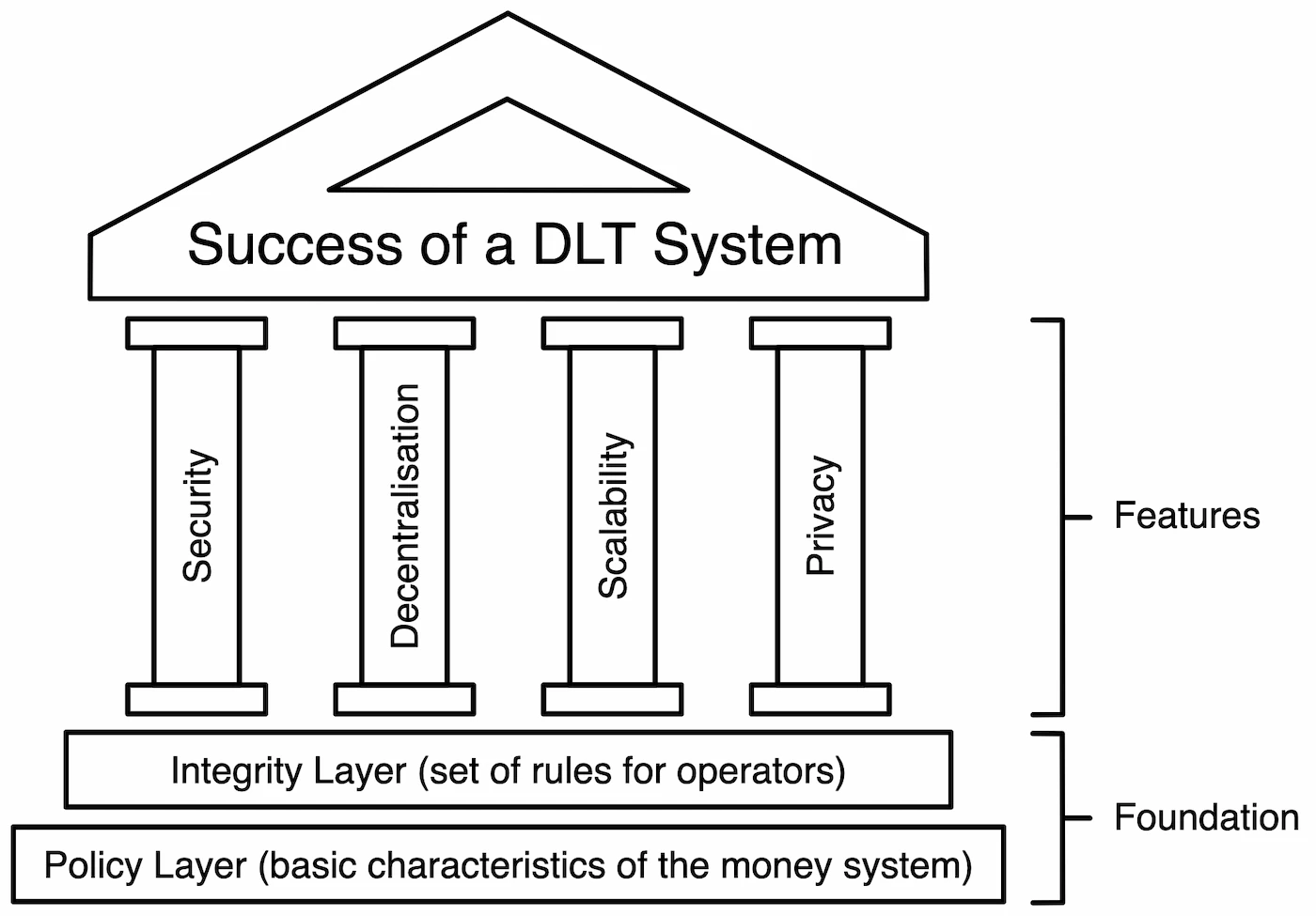
Despite Satoshi’s intention to establish a system that does not require any trust at all, he intuitively selected the basic characteristics of the money system in such a way that they maximise user trust. However, he did not achieve this intuitive stroke of luck in the design of the consensus mechanism.
Satoshi had the right intentions when he created Bitcoin, but when he designed the consensus mechanism, he attempted to eliminate trust from the system without thoroughly investigating the issue of trust.
However, switching from institutional to interpersonal trust brings huge potential for DLT systems. Unfortunately current solutions do not capitalise on this potential. Instead, they strive to minimise or even eliminate trust. This is fundamentally why the perfect, future-proof money system still does not exist to this day.
We are certain that there is a better solution!
Part 2: A Better Solution
In the previous part of this article (Part 1: The Problem) we talked about the broken trust in our legacy financial system and the common misconception about trust in digital money systems.
It is in the nature of things that when you place your trust in another person, you expose yourself to risk. Thus, when you place your trust in other individuals, such as by entrusting them with your money you expose yourself to risk, as these individuals may use your money for purposes other than those previously agreed upon and intended. In the worst case, they may waste or gamble away the money, leaving them unable to pay for the damage they have caused. This is what frequently occurs in our current fiat-based financial system (e.g. through inflation, expropriation, bank failures, etc.).
An analogy for placing trust in someone is handing them a knife. You could give a knife to someone you don’t know and request their assistance in preparing a meal. However, by handing over a knife to someone you don’t know, you actually expose yourself to risk, such as being stabbed or attacked.
This analogy suggests that one should be wary of the person to whom one entrusts a knife, rather than the knife itself. Because a knife in itself is neutral, but it can either be used for good or for bad.
Exactly the same applies to trust. Just as essential as a knife in a kitchen, is trust in a digital money system.
Therefore the solution is not to get rid of the knife [trust], but to reduce the risk of the unknown variable (in this case “the someone you don’t know”) with someone you trust. This is what we called ‘good trust’ in the section Perspectives on trust.
So, have we chosen the wrong ‘enemy’?
We have battled tooth and nail against trust, rather than against the individuals who make a system insecure (and thereby untrustworthy). This is where all of the phrases such as “trustless system”, “without the need to trust a third-party middleman”, “crypto proof instead of trust”, “no trusted parties”, etc. come from. But no matter how many times a common misconception is repeated, it does not make those words any more true.
According to Satoshi’s reasoning, if trust can be betrayed, then trust is bad and must be eliminated from the system (to escape the risk of a breach of trust). However, this is a fallacy for the following two reasons:
- It’s impossible to eliminate trust from a digital money system; and
- not all forms of trust are negative.
If trust can not be eliminated, it must be replaced. And when the required trust is satisfied by good trust, everything falls into place perfectly.
Trust - the steadfast foundation
In the first part of this article, we asserted on multiple occasions that trust is something intrinsically good, without explaining why this is the case or how we might better comprehend trust.
Countless books have been filled, articles have been written, and studies have been undertaken to better comprehend the impact of trust in today’s society. We couldn’t find a single source that concluded that trust is overvalued in any culture. Quite the contrary.
Trust is probably the single most undervalued virtue in modern society. We’re often unaware of the power and potential trust vests in a society or community that has cultivated a high level of trust.
In this Forbes article, Dennis Jaffe depicts trust as follows:
There are just a few elemental forces that hold our world together. The one that’s the glue of society is called trust. Its presence cements relationships by allowing people to live and work together, feel safe and belong to a group.
Frances X. Frei and Anne Morriss also picture trust quite well in the summary of their article Begin with Trust:
Trust is the basis for almost everything we do. It’s the foundation on which our laws and contracts are built. It’s the reason we’re willing to exchange our hard-earned paychecks for goods and services, to pledge our lives to another person in marriage, and to cast a ballot for someone who will represent our interests.
And O. Yul Kwon begins the first chapter of his well crafted book Social Trust and Economic Development with the following:
As Aristotle observed 2400 years ago, human beings are by nature social creatures. Social trust is the underlying foundation of relationships among individuals, groups, and other components of a society. [...] People exercise a certain extent of trust when dealing with others, and on this basis expect certain types of responses. Without trust in others’ actions, people may have to consider too many contingencies and uncertainties to take action, destroying the foundation of community and society. Without social trust, a country’s economy cannot perform well, because transaction costs – costs in undertaking economic transactions by economic entities – would be too high. Hence, social trust is a key determinant of social and economic development as well as of human well-being.
There are many more people we could quote here, but as we can see, trust is essential in all sectors of life where interpersonal interactions occur. And the more time, money, or personal well-being is invested in a certain area of life, the more crucial trust is in sustaining that area over time.
Here are a few examples of areas of life where trust is essential:
Within relationships: Trust is one of the most important aspects of relationships
Within the workplace: Why trust is a critical success factor for businesses
Trust in the media: Mainstream media is losing viewers rapidly because of distrust
In the government: Why the people don’t trust the government (especially in the U.S.)
Even COVID-19 vaccinations: COVID-19 vaccine hesitancy is primarily rooted in institutional mistrust
However, one area of life necessitates an even higher level of trust than most others, and that is the financial sector, because it requires ‘deep trust’ in the operators of the respective financial system.
Unfortunately, the entire fiat financial sector, by its very nature, relies on blind trust (as explained in Perspectives on trust and Causes of the breaches of trust), which leads to distrust rather than trust.
Because the need for trust in a money system cannot be lessened or eliminated, we are left with only one choice: the conscious and active maximisation of good trust.
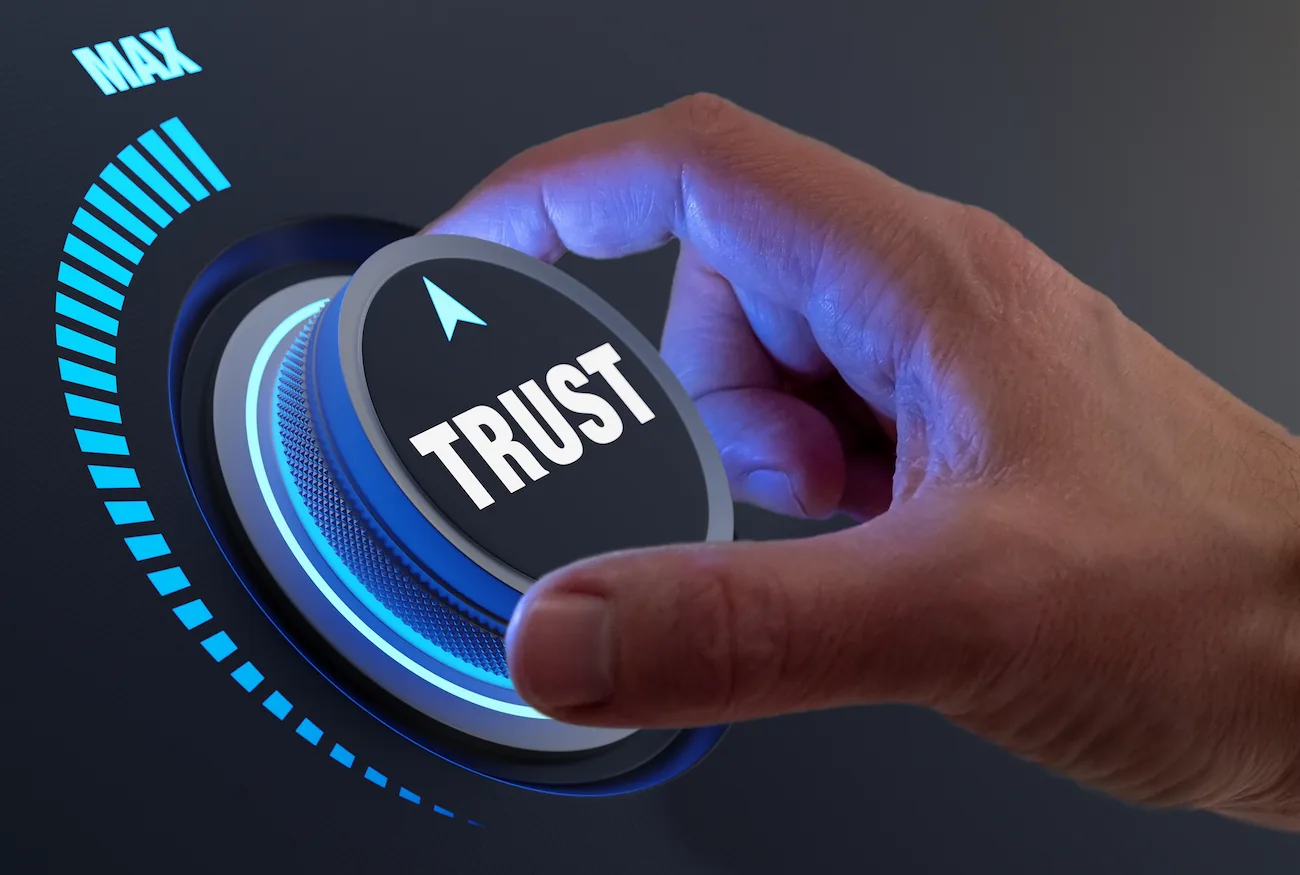
But if trust is the main problem with our current monetary systems, why should it be maximised?
Firstly, the issue isn’t trust per se, but rather the dependency on blind trust (see Perspectives on trust). Secondly, we only really have a problem with institutional trust but not with interpersonal trust (see Social trust).
Therefore, a trust-based system only has to avoid institutional trust (which caused the unfavourable blind trust dependency), but can make use of interpersonal trust if this were advantageous. And, as we’ve seen, trust is clearly beneficial for any system that involves a lot of interpersonal interactions. As a result, we should absolutely make use of it (or at least explore if a trust-based system is superior to “trustless” systems).
The solution to the trust problem is thereby conscious and active maximisation of interpersonal trust.
The case for a trust-based system
Since money is an area that is highly dependent on trust, we instinctively seek to store our economic value in the money with the best reputation.
In the article Why Trust and Truth will be the currencies of 2022 and beyond, the author makes it clear trust is the foundation of reputation:
I like how Dr. Leslie Gaines-Ross, a chief reputation strategist put it, “the bedrock of corporate reputation is trust. Trust is the oxygen that allows reputation to exist. Without it, reputations would suffer.”
Beyond corporate trust, this is a concept that the world - communicators, media, businesses, CEOs, governments and officials - needs to understand and relate on that basis. Trust is the foundation on which every boulder or platform on reputation building or management is laid.
If the money with the best reputation is the most used, and trust is the foundation of reputation, this implies that the most trusted money is thus the most used.
Prof. Jordan Peterson confirms this correlation:This short video from the Bank of England also establishes a clear connection between promise and trust, with the associated article further explaining why money is dependent on trust.
This leads us to the conclusion that, if a money system wants to have as many users as possible, we should not lower trust in it, but rather increase it.
But, in a decentralised money system, why do we even want as many users as possible? What advantages do we obtain from this?
For the following three reasons:
Solution to the problem
Only if acceptance of a decentralised system with sound money is high among the population can the problems of fiat currencies be effectively solved (remediation of human rights, poverty reduction & wealth increase, assistance and appropriate compensation for developing countries, environmental protection, etc.)Usefulness
The network effect is as important in decentralised money systems as it is in other types of social networks, which implies that more users attract more users. The more users in a system, the more useful it is for its members. The internet for example is useful because everyone is on it.Value
The value of a social network is directly dependent on the number of participants. This is why Metcalfe’s law comes to the following conclusion: In social networks, the greater the number of users with the service, the more valuable the service becomes to the community. And value appreciation (just like value depreciation) will always be reflected in the price of money in the long run.
In summary, for a money system to be used by as many people as possible, it must be the system with the best reputation - the most trustworthy system. Therefore a future-proof money system must be designed in a way that maximises interpersonal trust.
Reflecting on the first part of this article (Part 1: The Problem) and the analysis to this point, we can state that:
- The root problem with fiat currencies is all the institutional trust that’s required to make them work (blind trust dependency).
- The problem with this demanded trust in financial institutions is that it has been abused many times.
- Central banking and the fiat financial system are the origin of most socio-economic problems we have today.
- People all around the world are suffering every day under the repercussions of the current financial system.
- We urgently need an alternative.
- Trust can neither be eliminated nor replaced by technology.
- Trust is the most important factor for the success of a digital money system.
- Bitcoin’s mission is still to fix the broken fiat financial system.
- Bitcoin is still by far the most trusted decentralised digital money system.
- Unfortunately, from a technical point of view, Bitcoin is unlikely to be able to replace the dominant fiat monetary systems.
So what improvements could be made to a decentralised money system like Bitcoin?
In particular:
- more secure (against possible attacks but also against the risk of losing funds due to unintentional misconduct)
- more decentralised (so that it is even more incorruptible and censorship-resistant)
- more scalable (in a way that all the transactions of all people in the world could be easily processed)
- faster (instant and final transactions)
- cheaper (for operators, the hosting costs of a node; and for end users, the transaction fees)
- fairer (so that wealthy operators have virtually no competitive advantage in terms of financial reward for participating in the operation of the network)
- better privacy (more difficult to track transaction flows and wallet balances)
- more energy efficient (by ensuring the security of the network with something else than solving cryptographic puzzles)
- more user-friendly (considerably better user experience for operators and end-users; high abstraction of technical details)
- more features (e.g. decentralised exchange, smart contracts, decentralised data storage, decentralised identity, etc.)
But is it really possible to achieve all of these improvements in a single system?
Yes, it certainly is!
Furthermore, a trust-based system can make all other features such as decentralised applications, smart contracts, decentralised data storage, and so on many times more efficient than all current DLT solutions.
So how can this be achieved?
It’s actually quite simple: if a lack of trust is the problem, we can fix the problem by just rebuilding this trust. That is, we must ensure that the foundation of a DLT system is built on trust. As stated in The main driver of scalability, the foundation of a DLT system is made up of two layers: the policy layer and the integrity layer. Since Bitcoin’s policy layer already maximises trust, the integrity layer is all that remains.
As the integrity layer is primarily made up of the consensus mechanism, the solution is a consensus mechanism based on trust.
And since the foundation upon which the whole system is built is critical to its success and adoption, a trust-based money system has only advantages. Not only does it tackle all problems at once, but it also accelerates the progress of our economy and society.
To return to our analogy with team sports (as instanced in Requirements for a future-proof money system): Nowadays, the foundation of football pitches has become a science in itself. We are not suggesting that this is also necessary for decentralised money systems, but rather that we first need a reasonably playable foundation to enable a sensible game. But DLT systems without a trust-based consensus mechanism lack a suitable foundation and can be compared with uneven or muddy sports fields.

In conclusion, Satoshi correctly identified the breaches of trust in the financial sector as the core problem. However, contrary to Satoshi’s understanding, the need for trust in a money system can’t be eliminated, only behaviour that isn’t trustworthy can be. And the only way to achieve this is with a trust-based consensus mechanism. This is the only way to solve the problem of trust completely.
But how can we attract trust into a system and ban non-trustworthy behaviour?
The attraction of trust
People trust people.
People trust organisations or businesses because they trust the people within them. Furthermore, people trust products, technologies, information, etc. because they trust the people behind these products, technologies, information, etc.
For example:
Skydivers don’t trust their parachute, they trust the engineers who designed the parachute and the staff at the inspection body who certified the parachute to have done their job properly.
Nobody would use a free parachute given to them by a stranger (unless they were suicidal). They would at the very least bring it to an inspection facility where professionals could examine the equipment’s safety before utilising it.People do not trust a medicine (for example, an aspirin tablet), but rather their doctor who prescribed it, the expertise of scientists in pharmaceutical corporations, and the personnel who conducted studies on the safety and efficacy of such medicine.
Nobody would accept a pill found in a public setting, even if they had a severe headache and the pill resembled an aspirin tablet.
So in order to build trust into a system, we must attract as many trustworthy people as possible. And these trustworthy individuals should come from a variety of backgrounds. People of various nationalities, wealth, interests, ages, genders, political beliefs, ethnicities, races, intellects, faiths, lifestyles, and so on. And the well-being of their fellow humans should be of the utmost importance to these trustworthy individuals. People who are only focused on their own advantage or the gains of other influential groups of people, regardless of the ramifications for the majority of users, are not trustworthy at all. Rather, trustworthy operators are characterised by selflessness. We know that there are many benevolent and virtuous people out there who are not willing to destroy their reputation just for a short-term gain.
So how can we attract trust into a system and ban non-trustworthy behaviour from it?
By using the same principles that are used to educate children or pets, or how governments motivate their citizens to act in a civilised manner: Reward and punishment.
We can attract trust into a system by rewarding trustworthy behaviour and by punishing untrustworthy behaviour.
But, in order to know what we want to reward and what we want to punish, we must first agree on what trustworthy behaviour is. As humans, we rate other people’s trustworthiness on the following characteristics (or at least a subset of them):
- honest & truthful: telling the truth; free from fraud or deception; marked by free, forthright, and sincere expression
- sincere & genuine: free of hypocrisy, pretence and dissimulation (actually having the reputed or apparent qualities or character)
- reliable: suitable or fit to be relied on
- benevolent: marked by or disposed to doing good
- fair: marked by impartiality - free from self-interest, prejudice or favouritism
- transparent & open: free from reserve or deceit
- upright: marked by strong moral rectitude
- faithful: firm in adherence to promises or in observance of duty
- peaceable: not contentious, quarrelsome or hostile but inclined to avoid conflict, strife and dissension
- respectful: marked by or showing respect or deference
A person who exhibits these characteristics is usually referred to as ‘a person of integrity’. Of course, not all of these character traits can be objectively assessed, but it is sufficient if the system is configured in such a way that desirable behaviour is rewarded and undesirable behaviour is promptly punished.
A financial incentive is unquestionably the best way to reward desired behaviour as it is easily quantifiable and very appealing in today’s society.
In comparison to a monetary reward for desirable behaviour, we should avoid a monetary penalty for undesirable behaviour, because an investment in hardware and electricity (in the case of Proof of Work) or a monetary deposit (in the case of Proof of Stake) would entail all of the disadvantages of Proof of Work or Proof of Stake.
In a trust-based system, however, we have something much more valuable from the operators than financial liabilities: their reputation.
The value of reputation

Most individuals understand this intuitively. That is why we humans strive to maintain a good reputation at all times.
But why is our reputation so valuable to us?
Let’s have a look at how Prof. Jordan Peterson, a clinical psychologist, explains this phenomenon:
We’ve certainly been searching forever for an incorruptible storehouse of value. [...] And the incorruptible storehouse of value is your reputation. [...] The more incorruptible you are as a person the better your reputation and that’s the most reliable storehouse of value you have. [...] We’re kind of enticed into believing that if we store value there’s something selfish about that. But that’s not the case at all, if it’s the case that the best place to store value is in your reputation and therefore you want to be the most ethical actor possible. [...] So, you store value in your reputation and that means you store value in the ethics of your behaviour.
The following research article provides another explanation for why reputation is so valuable:
Reputation is a piece of public information that summarizes how a person behaves towards others. Individuals often invest substantial resources to maintain a good reputation. These costs are incurred because having a good reputation is valuable: empirical and theoretical studies from evolutionary game theory and economics indicate that having a good reputation increases one’s expected payoff in future interactions with others. Therefore, reputation can incentivize cooperative behaviour, i.e. behaviour that is individually costly, but socially beneficial.
This is even more true for people, organisations and businesses whose success depends heavily on their reputation in society.
For example:
People
- actors
- talk show hosts
- internet celebrities
- musicians
- politicians
- business leaders
- athletes
- activists
Organisations
- charities
- religious organisations
- NPOs
- NGOs
- clubs
- associations
Businesses
- private companies / corporations
- public companies / corporations
When such individuals, organisations, or businesses join in a trust-based system, they are very likely to follow the rules in order to protect their reputation, as their success is strongly dependent on it. And reputation, like trust, is hard to gain but easy to lose.
According to this Forbes article reputation is the only currency that matters in business. This is the reason companies are willing to pay a lot of hush money. They are afraid of damaging the success of the company through the loss of reputation.
But how can the fear of losing one’s reputation contribute to the success of a DLT system?
Every DLT system is made up of two distinct groups of people: operators and users. (In the vast majority of cases, operators are also users, whereas we know from existing DLT systems that only a small fraction of users participate in the operation of the network.)
A DLT system exists to serve its users, not its operators. Its primary purpose is to protect people against persons who wield excessive power and influence. But as previously detailed, operators are sadly unavoidable in digital money systems (as in all other financial systems). However, because the welfare of the users is dependent on the behaviour of the operators, the system’s operators are ultimately responsible for the system’s success or failure. Since a DLT system’s main mission is to serve its users, it is the operator’s duty to safeguard the system in such a way that it protects and benefits the users at all times. If the operators abuse their position of power, the users suffer, which means the mission had failed and the raison d’être of the respective DLT system would be forfeited. To safeguard users from exploitative behaviour by operators, operators must make themselves susceptible to users in some way. This is the only way they can acquire the users’ trust.
But how can operators make themselves vulnerable without making a financial commitment (as in the case with PoW and PoS)?
Operators should reveal their identity and intentions.
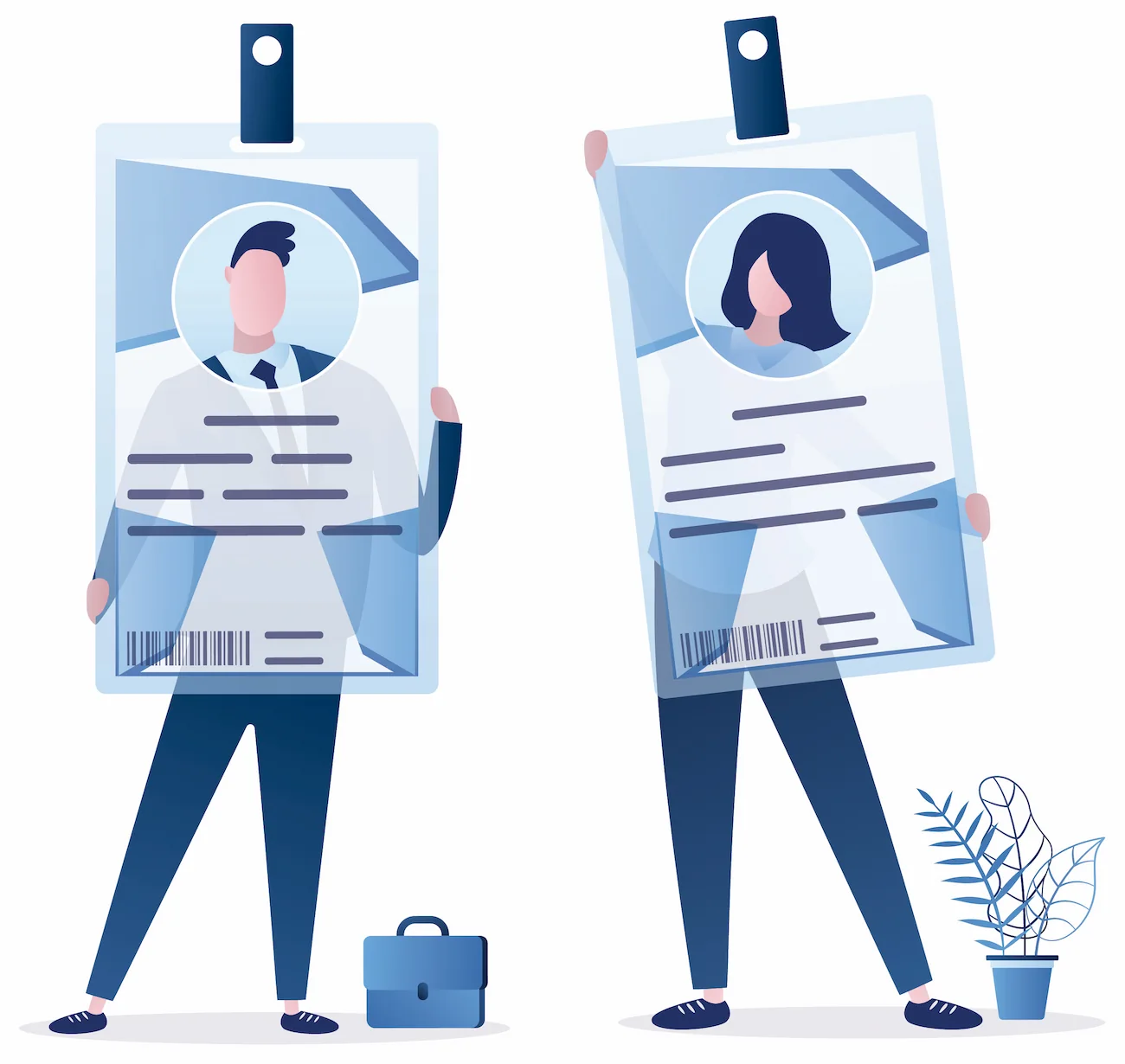
If an operator with a publicly known identity attempts to cheat, he has to pay with his reputation. However, as long as an operator is honest, upright, and trustworthy, he has nothing to worry about. On the contrary, he will be well rewarded because this behaviour ensures users can prosper, adding to the DLT system’s objective. People, organisations, and businesses can, of course, participate in the network’s operations anonymously. However, an operator will only earn significantly if he has the trust of many users, which is only feasible if he reveals his identity and intentions, and if the users deem the respective operator’s behaviour as excellent.
Thus, the operators of the system form a network of known and unknown individuals, organisations and companies.
As stated at the outset of this section, the majority of operators understand that their reputation is far more valuable than money in the long term, because money follows their reputation. Being aware of this is a powerful drive for system operators to play by the rules. This is precisely the basic principle that a trust-based system leverages.
The only two rules for the operators of the system are:
Being entirely honest at all times (not cheating and also not approving or condoning any fraudulent activities by others in the system)
Protecting the freedom and human rights of all users in the system (no oppression, exploitation, discrimination or surveillance of any user or group of users)
If an operator violates either of these two rules, they must be immediately blacklisted by all the other operators. This is irrespective of the number of operators in the network who have broken the rules. Whether a single entity, a group, or the majority of operators violate one or both rules, a blacklisting procedure must always be initiated immediately to separate the wheat from the chaff.
This means that if an operator attempts to manipulate the system for his own benefit, he will be immediately locked out by all other operators and placed on a public list with the reasons for his blacklisting. Of course, all this happens automatically without any human intervention. As a result, the attacker gains no advantage from the fraudulent activity (e.g. a fake transaction), as it is rejected by all other operators. Quite the opposite, such actions would make headlines and ruin the attacker’s reputation, discouraging other operators from attempting to do the same.
Of course, this is only true if the attack is deliberate or targeted by an operator. After all, it might just be a bug in the node software or a security vulnerability in the node that an external attacker is able to exploit. In that instance, the operator can simply publicly apologise and rejoin the network, albeit with a minor penalty (e.g. deduction of points from his trust score). If this occurs repeatedly within a certain period of time, the penalty increases each time, eventually leading to permanent exclusion from the network.
To summarise, the better an operator’s reputation, the more likely this operator will operate honestly and sincerely. And the greater the likelihood that an operator will operate honestly and sincerely, the more trustworthy that operator will be.
The power of democracy (when done right)
Allowing anonymous operators into the system with no financial commitment is a significant problem. Because attackers may easily join the network with a huge number of nodes, gaining control of the bulk of the system’s nodes. This would enable them to simply seize control of the system.
But, once again, a trust-based system shines with a simple solution to this difficulty.
We stated in The attraction of trust that we need a system that includes as many trustworthy people as possible from a variety of backgrounds. If this is achieved, there should be trusted operators for each user in the system and we simply need to create a link between users and their trusted operators. Since only the users know who they trust, they are the only ones who can create this link by choosing their trusted operators.
In a trust-based system, users must be able to choose their trusted operators, just as easily as one can subscribe to or follow other people on social media sites (such as Twitter, YouTube, Instagram, and so on). Of course, users can change some or all of their trusted operators at any time.
This concept is a very special form of democracy, as it is not the majority of votes that determines who has the power over the system, but each user himself appoints his own representatives. This is in direct contrast to a representative democracy, where there is always a share of the population that has to live with the decisions of leaders in the country that they did not elect. Or leaders who lose a lot of voters during their term in office because they don’t act on their election promises (and may even blatantly pursue a different agenda), but are still allowed to govern for the rest of their term. As a result, the best type of democracy is one in which everyone may pick for themselves at any time which operators they trust and wish to be represented by.
This is in stark contrast to blockchain technology, where the transaction inclusion into blocks through miners/block proposers is actually a very rapidly rotating dictatorship.
The capacity for users to individually select their trusted operators to represent their interests gives the system the power of true democracy.
Of course, this does not mean that operators have full access to the funds and assets entrusted to them. The most they could do to a user is expose all of the user’s assets. However, users are not required to give their identities to them. Thus, the worst thing that could happen would be a comparable transparency as is already the default with Bitcoin and Ethereum.
So in conclusion, the trust issue can be solved by employing the following two basic principles:
- The system must be operated by a diverse group of trustworthy individuals, organisations, and businesses.
- Users must be able to freely select their trusted operators.
With these two simple concepts as a consensus mechanism, all the problems of blockchain-based systems can be solved at once. (Strictly speaking, this concept does not require consensus in the system, which we will discuss in more detail in the next section.)
It is critical to understand that this concept does not replace any of the existing blockchain technologies’ security features with trust, but rather that only the minimum amount of trust, which is also required from users in blockchain-based systems, is distributed more meaningfully in a DLT system with these two concepts.
By allowing users to select their own trusted operators, users’ faith in the system is greatly increased. If a user does not wish to trust anyone, he can simply join the system as an (anonymous) operator and select himself as his trusted operator. So, properly speaking, a user can actually eliminate the dependency on trusted third parties almost completely, something blockchain-based solutions cannot do.
Let’s compare Satoshi’s approach to the trust problem (which we’ve described in Understanding the root problem) with our own:
| Satoshi’s approach | Our approach | |
|---|---|---|
| Cause | Financial institutions abuse the trust of people | |
| Inter-pretation | Trust is bad | Non-trustworthy behaviour of operators is bad |
| Solution approach | Eliminate trust | Maximise trust |
| Imple-mentation | Replace trust with technology (cryptography, blockchain, decentralisation, etc.) | Replace untrustworthy operators with trustworthy operators and give users the choice in whom to trust |
No need for consensus in the system
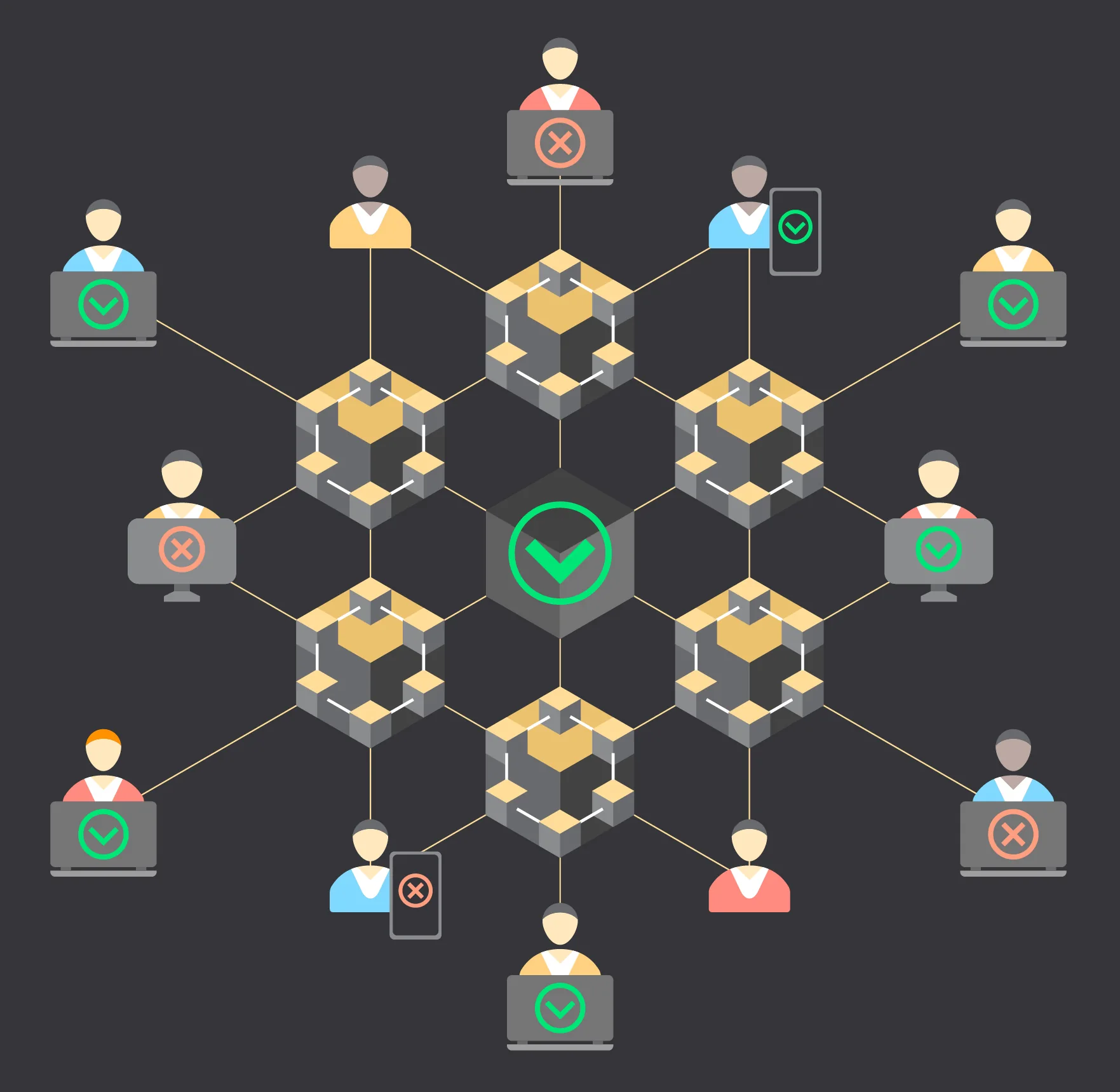
Although we have already questioned several common terms and definitions of the DLT industry in this article (including the term DLT itself), after proposing changes to the fundamental operation of DLT systems, we should also consider whether the term ‘consensus mechanism’ is still applicable to such a system. According to the Merriam-Webster, Cambridge Dictionary, and Oxford English Dictionary, a consensus is:
- a general agreement or
- a generally accepted opinion or decision among a group of people
But are we more interested in a general agreement among the operators or in strict compliance to the system’s rules? What use is a consensus in the system if it does not reflect the truth or does not adhere to the system’s rules?
Consequently, a ‘Proof of Truth’ consensus mechanism would be the most prudent course of action. Moreover, since ‘truth proof’ is commonly referred to as just ‘proof’, it would also be the purest form of a consensus mechanism.
Despite this, all consensus mechanisms to date require operators to prove that they have either:
- performed computational work (PoW)
- staked funds (PoS)
- the necessary authorisation (PoA)
- waited for a certain period of time (PoET)
- sufficient memory or disk space available (PoS)
- identified themselves (PoID)
- etc.
Or a combination of the above.
All existing consensus techniques demand operators to prove everything except the truth. But why can’t operators just show that they followed the rules of the system (i.e. acted truthfully)?
Because that is not achievable in non-trust-based systems. In other words, DLT systems that are not built on trust must settle for consensus and hope that the majority of operators are always truthful.
In contrast, users of a trust-based DLT system can choose who to trust, which eliminates the necessity for network consensus. Because it makes no difference how many dishonest operators a system has as long as the majority of users place their trust in the honest operators. This has the advantage of preventing dishonest operators from wielding power in the system.
But, if a trust-based DLT system does not seek consensus, what mechanism does it employ to preserve network integrity at all times?
We call it the System Integrity Mechanism (SIM).
Integrity is ensured in a trust-based system by concentrating power in the system at all times to the most honest and trustworthy operators, which is only possible because users of such a system can choose their trusted operators themselves. If an operator violates the system’s rules, users will replace him with another more trustworthy operator, redistributing power back to the most honest and trustworthy operators.
Since the System Integrity Mechanism also has a strong influence on decentralisation, let’s take a brief look at this extremely important feature of a DLT system.
The importance of decentralisation
As discussed in Causes of the breaches of trust, experience has shown that centralisation of authority is almost always harmful to the vast majority of the population and, in certain cases, threatens their very life. Decentralisation of power, on the other hand, has been proved to have a hugely positive impact on human rights, progress, prosperity, and peace among the general population. As a result, in almost all cases, the benefits of power decentralisation surpass the benefits of power centralisation. The more decentralised power is, the less detrimental the consequences of power abuse are. Therefore, no matter how difficult it is to achieve, high decentralisation is always a worthwhile goal (particularly in domains prone to power centralisation), because it is the only way to protect human rights, developing countries, and the environment.
Governments are good at cutting off the heads of a centrally controlled networks like Napster, but pure P2P networks like Gnutella and Tor seem to be holding their own.
Satoshi Nakamoto
The Why and How of decentralisation of a digital money system has also been summarised quite well on the Radix Blog:
The desire for decentralisation springs from a fundamental desire for antifragility. For some this is about a distrust of authority. For others, it is about creating better systems for storing human wealth. If a good is publicly owned, we generally have less concerns about it being able to be taken away. Like any fundamentally important infrastructure, we ideally want it to be resilient and self-repairing.
People care for the same reason they care about the internet continuing to exist: it is vitally important to them. The stakes are even higher for decentralised public networks as this is where people’s wealth will live, not just information.
Anti-fragility really just means “self-sustaining”. Measures include:
- Once launched, can the protocol be stopped by its creator?
- Can the protocol live independently of any single entity or person?
- Does the protocol grow stronger as it grows in importance?
For a network to be self-sustaining all parts within the ecosystem need to feed and sustain each other. For a decentralised public network, there must be an ecosystem that derives significant value from the existence of the ledger. This ecosystem must either “work for” or “pay for” the ledgers continuation and protection. There should be no irreplaceable parts of the ecosystem.
The three antifragility measures of decentralisation are strongly reminiscent of the features of a living organism or a spreading virus. And this is precisely why decentralisation is so important for a DLT system, because its future success is dependent on its ability to grow inexorably and its inability to be stopped or captured with large sums of money, brute force, or high authority. Bitcoin, as correctly recognised by Michael Saylor, Gigi, and Alex Gladstein, has already reached this point.
Another article, and probably one of the most important ones, about the significance of decentralisation was written by Spencer Bogart a few years ago: The Long Game in Crypto: Why Decentralization Matters
(If you haven’t read this article yet, we strongly advise you to do so now and return when you’re done.)
Spencer makes an excellent argument in this piece when he says:
More specifically, my issues with this “platform-grade” narrative are two-fold:
First, permissionless platforms will inevitably demand sovereign-grade censorship resistance and, second, if not truly permissionless then these platforms will trend toward the same outcome as today’s centralized platforms (censorship and permissioning) but with less efficient infrastructure.
Spencer argues that there’s no point in ‘platform-grade’ censorship resistant platforms (platforms that are unlikely to be subject to nation-state attackers), because these platforms will trend toward the same outcome as today’s centralised platforms (censorship and permissioning) but with less efficient infrastructure. Unfortunately we can see this trend happening to platforms like Ethereum right now. That’s why he thinks that highly decentralised permissionless platforms with ‘sovereign-grade’ censorship resistance might be the only viable strategy in the medium- to long-term.
Likewise, Vitalik Buterin (one of Ethereum’s co-founders) discusses the significance of decentralisation for security in his blog post The Limits to Blockchain Scalability:
And:If you have a community of 37 node runners and 80000 passive listeners that check signatures and block headers, the attacker wins. If you have a community where everyone runs a node, the attacker loses. We don’t know what the exact threshold is at which herd immunity against coordinated attacks kicks in, but there is one thing that’s absolutely clear: more nodes good, fewer nodes bad, and we definitely need more than a few dozen or few hundred.
For a blockchain to be decentralized, it’s crucially important for regular users to be able to run a node, and to have a culture where running nodes is a common activity.
So, in order to achieve sovereign-grade censorship resistance, we need the highest amount of decentralisation feasible, because the more decentralised a system is, the more censorship resistant it is. This means we have to involve as many people as possible in the system’s operation. And for this, the following two features in particular are of essential importance:
Incentivise people to engage in the system’s operation by rewarding them financially.
Very low financial and technical entry barrier to participate in the system’s operation. I.e.:
- Setting up and running a node must be foolproof.
- The initial and ongoing expenditures of a node must be relatively low, or else (mostly) covered by income from participation in the operation of the system.
Requiring an upfront investment in specialised hardware (in the case of PoW) or a large number of tokens (in the case of PoS) or other constraints (such as low energy prices, etc.) to participate in the network’s operation is a type of centralisation because most individuals cannot afford it. Others who can, however (particularly wealthy individuals or organisations) wield greater influence on the system’s consensus and profit far more from it than those who cannot.
We are well aware of the differences between miners and node operators. But if the most powerful miners for example suppressed transactions from specific people, node operators couldn’t help them and therefore the requirements of neutrality and censorship-resistance would be violated.
This could eventually lead to a type of centralisation akin to what we currently have with the legacy financial institutions.
As a result, being able to participate in the operation of a DLT system using low-cost hardware and without the need to stake tokens would be a big step forwards in terms of decentralisation.
That is exactly what a trust-based system would allow. With relatively little financial commitment, anyone could become an operator in the network. It is even quite likely that the revenue from participation in the network’s operation would outweigh the running costs for the majority of operators. And the more trust an operator (individual, organisation, or business) has, the more they will profit.
This opens up a whole new world, because we can now achieve true decentralisation for the first time. Specifically because (1) there are no miners or validators, (2) there is a strong incentive for individuals to run nodes because they will be rewarded for it (similar to miners and validators), and (3) setting up and running a node will be as simple and affordable as it is for Bitcoin nodes.
The solution to the Blockchain Trilemma
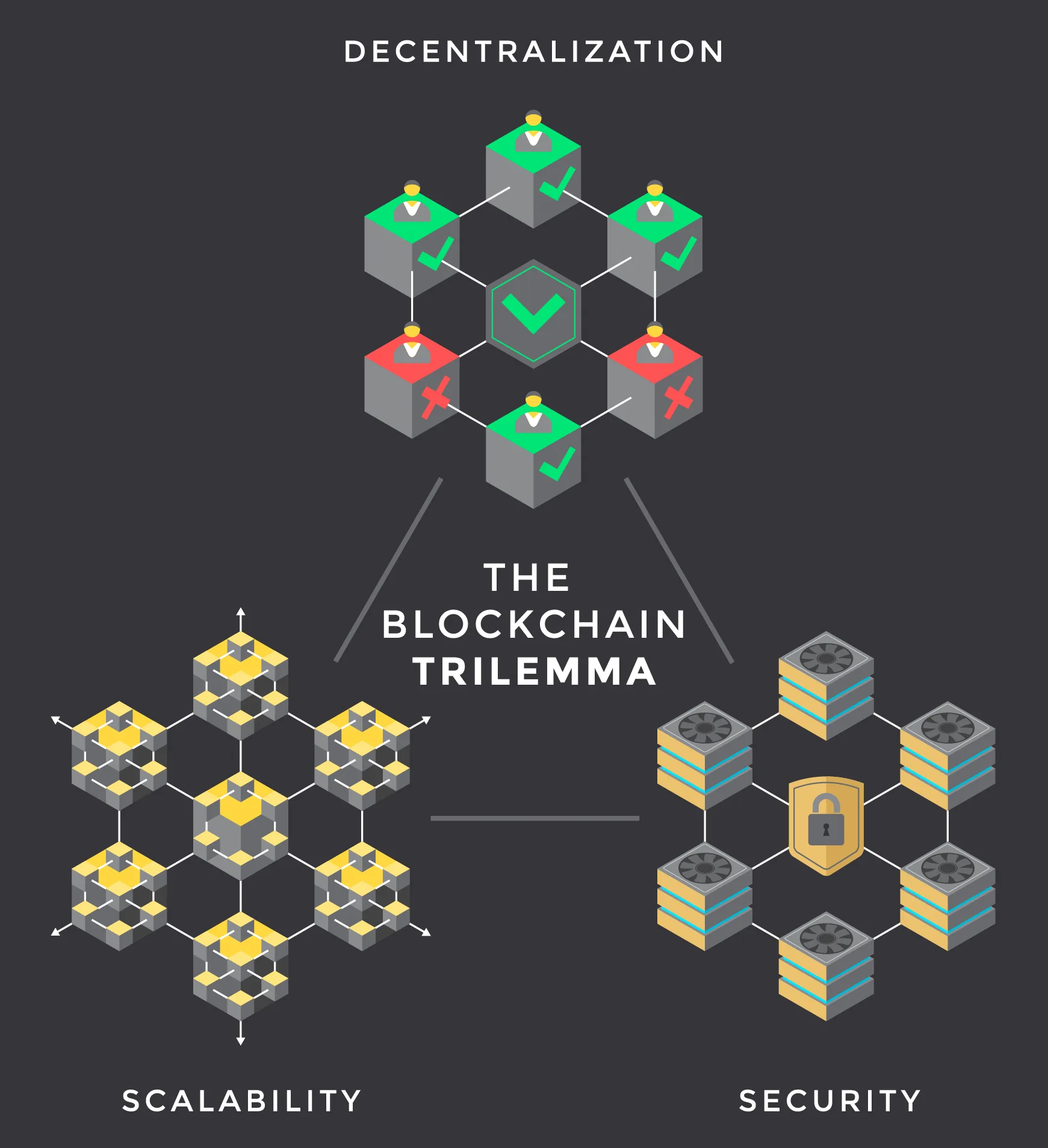
The Blockchain Trilemma has already been briefly mentioned in the Requirements for a future-proof money system.
However, here’s a quick synopsis from Binance:
The popularity of crypto and blockchain is growing exponentially, and so is the number of users and transactions. While it’s easy to see how revolutionary blockchain is, scalability – a system’s capacity to grow while accommodating increasing demand – has always been a challenge. Public blockchain networks that are highly decentralized and secure often struggle to achieve high throughput.
This is often described as the Blockchain Trilemma, which states that it’s virtually impossible for a decentralized system to simultaneously achieve equally high levels of decentralization, security, and scalability. Realistically, blockchain networks can only have two out of three factors.
Swyftx Learn also concludes the following:
There have currently been a number of attempts to solve the blockchain trilemma, but no universal solution has been found yet.
Until now…
Not a single DLT system has been able to solve the Blockchain Trilemma, because they are all either attempting to solve it with layer 2 technology like off-chain, sidechains, payment- and state-channels, ZK-rollups, etc. or have had to compromise on decentralisation and/or security in the pursuit of scalability, which obviously has even less chance of success.
This means that all approaches to solving the Blockchain Trilemma problem only shift around the respective technology on the trilemma chart instead of solving it, which defeats the purpose. No matter whether scalability is attempted on layer 1, layer 2, or even on higher layers, it always causes the system to be less decentralised and/or less secure on the scaling layer and the layers above. However, if global adoption is our objective, then at a certain point the scaling layer will inevitably be the most used layer. Hence, even DLT systems with a highly decentralised and secure base layer have a problem if the most used layer has to compromise on either of these two vital properties.
Furthermore, it is incorrect to compare the scaling of a DLT system via additional layers with the layer model of the internet. The purpose of the layered architecture of these two technologies is fundamentally different and in terms of scalability even opposite. In the layered model of the internet protocol suite (TCP/IP), performance decreases with each additional layer (due to the added overhead). Each layer of the TCP/IP model provides an additional level of abstraction to the underlying hardware in comparison to the “layers” of blockchain systems, which in most cases are completely independent technologies that are merely able to communicate with the systems of the other “layers”.
These circumstances lead to the unfortunate realisation that blockchain technology could never be the optimal solution for a future-proof money system. Such a system requires a scalable DLT solution that does not compromise decentralisation or security on any layer to achieve scalability.
Since blockchains of any kind will always be subject to this trilemma by their very nature, the only way to escape this predicament is not to use a blockchain. At least not as the database of the ledger.
As stupid as it may sound, but that is the only solution to the Blockchain Trilemma.

“How to solve the Blockchain Trilemma?”
“Just don’t use a blockchain.”
The Authors
But what is the alternative?
A future-proof money system
Now that we have explored the first principles of trust, money and decentralisation, what does a concept based entirely on these principles look like?
Most importantly and as described above: Such a system should encourage operators to reveal their identity and allow users to select their trusted operators in the system.
From now on, we will refer to trusted operators as trustees, because they take on tasks such as keeping identities, accounts, contracts and other data confidential, processing transactions, storing data, hosting applications and much more.
However, technically, it is simply a replicated database, and all operators must agree on the most recent state on a regular basis. Because trust is the foundation of this system, the community’s values include honesty and integrity. And any operator who violates these values will be banned. Operators can update whatever they want in the database, but as soon as they try to broadcast fraudulent messages or modifications, the honest operators will blacklist them.
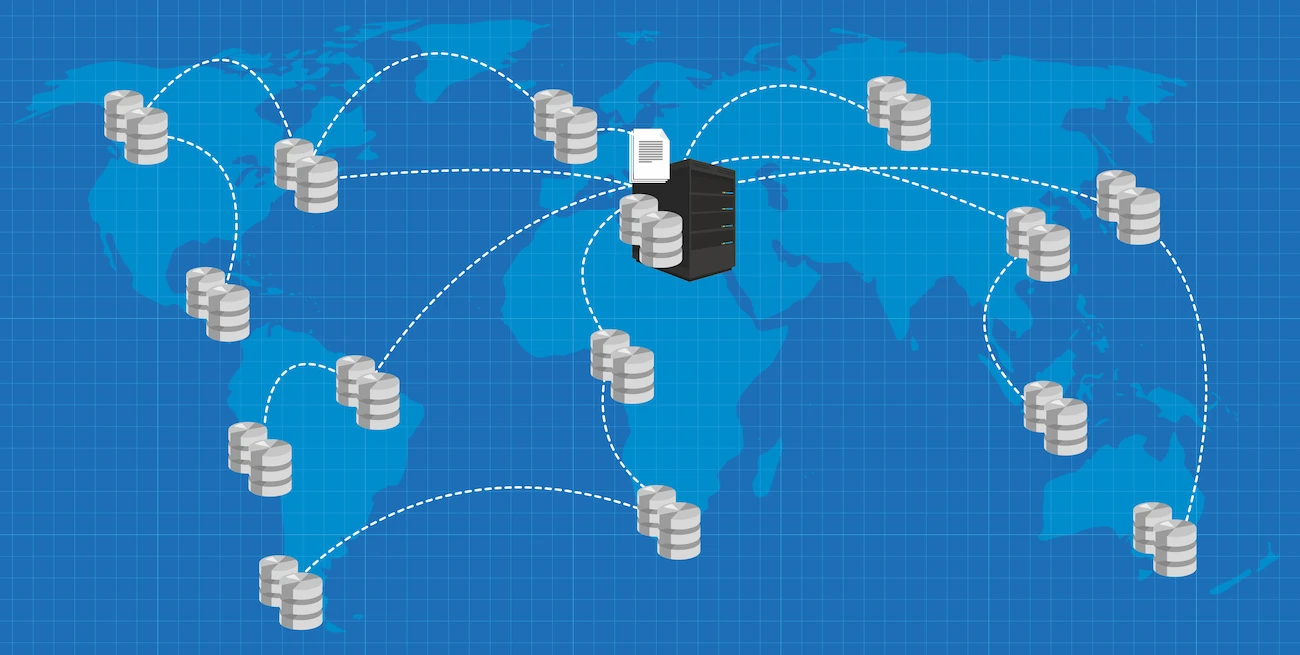
We feel that a separate name for this technology is required because the way it operates is fundamentally different from blockchain technology and the term ‘ledger’ in DLT is insufficient to cover all areas of possible use.
In essence, it is a type of interconnected computer network, similar to the internet, but based on trust. As a result, we propose the name: Trustnet.
Just as Satoshi proposed the first blockchain-based solution with Bitcoin, we would also like to propose a first concept based on trustnet technology.
The project is called Trusdee.
Trusdee is a highly modular system. These modules are called DApps (just like in the blockchain ecosystem), but work differently than in current DLT solutions. For instance, they should not be confused with smart contracts, as these are executed sequentially and the same computing operations must be repeated by all nodes. This severely limits the scalability of smart contracts, which is why they should only be employed in a trustnet where a time-dependent sequence of computational operations is unavoidable.
Trustnet DApps, on the other hand, are fully decentralised applications that are executed asynchronously and nodes may have to perform different tasks. This has the advantage of allowing DApps to scale with the trustnet without suffering performance degradation.
In addition, unlike blockchain DApps, trustnet DApps do not consist of smart contracts as a backend and individually hosted frontends, but are bundled applications that contain both the backend (source code executed by the nodes) and the frontend (source code executed by the client). This opens up a whole new world of possibilities.
There are numerous advantages to using a modular system, including:
DApps can be developed and updated independently of one another without interfering with other DApps. This is crucially important, for example to keep the whole system around the money module up-to-date, without touching the money module or changing the monetary policy of the system.
Users can choose which DApps they wish to utilise and which they don’t. This means, for example, that if a user does not require or wish to use the Identification DApp (described in detail in the next section), they can simply ignore it.
As with a free market economy, there is a free market of DApp solutions. This means, for example, that there may be multiple competing DApps for smart contracts (each with its own set of features and characteristics), with the best variant having the best chance of succeeding in the long term.
The only exception is the Digital Commodity Money DApp (which we will come back to later).
Trusdee without any DApps is simply a decentralised hosting platform that has no end-user functionality. For this reason, the Trusdee project will include the following DApps by default:
Digital Commodity Money, aka Cryptocurrency (Trusdee’s native money with the characteristics mentioned above)
Decentralised Exchange (marketplace to trade in and between all digital assets on the platform)
Smart Contracts (programmable self-executing contracts)
Public & Private Data Storage (‘public’ for digital asset ownership and ‘private’ for an encrypted cloud vault)
Decentralised Identity Registry (trusted sensitive data storage)
Decentralised Name Service (memorable names for users, applications and digital assets)
Another reason why Trusdee has standard DApps is that these functionalities are fundamental to any decentralised platform and third-party DApps are heavily dependent on them. If all third-party DApps are deeply integrated with the standard DApps, it increases compatibility between DApps, which greatly increases the usefulness of the entire platform.
We will publish the Trusdee white paper describing all the technical processes in detail in the next few weeks, but here is a simplified overview of how Trusdee works:
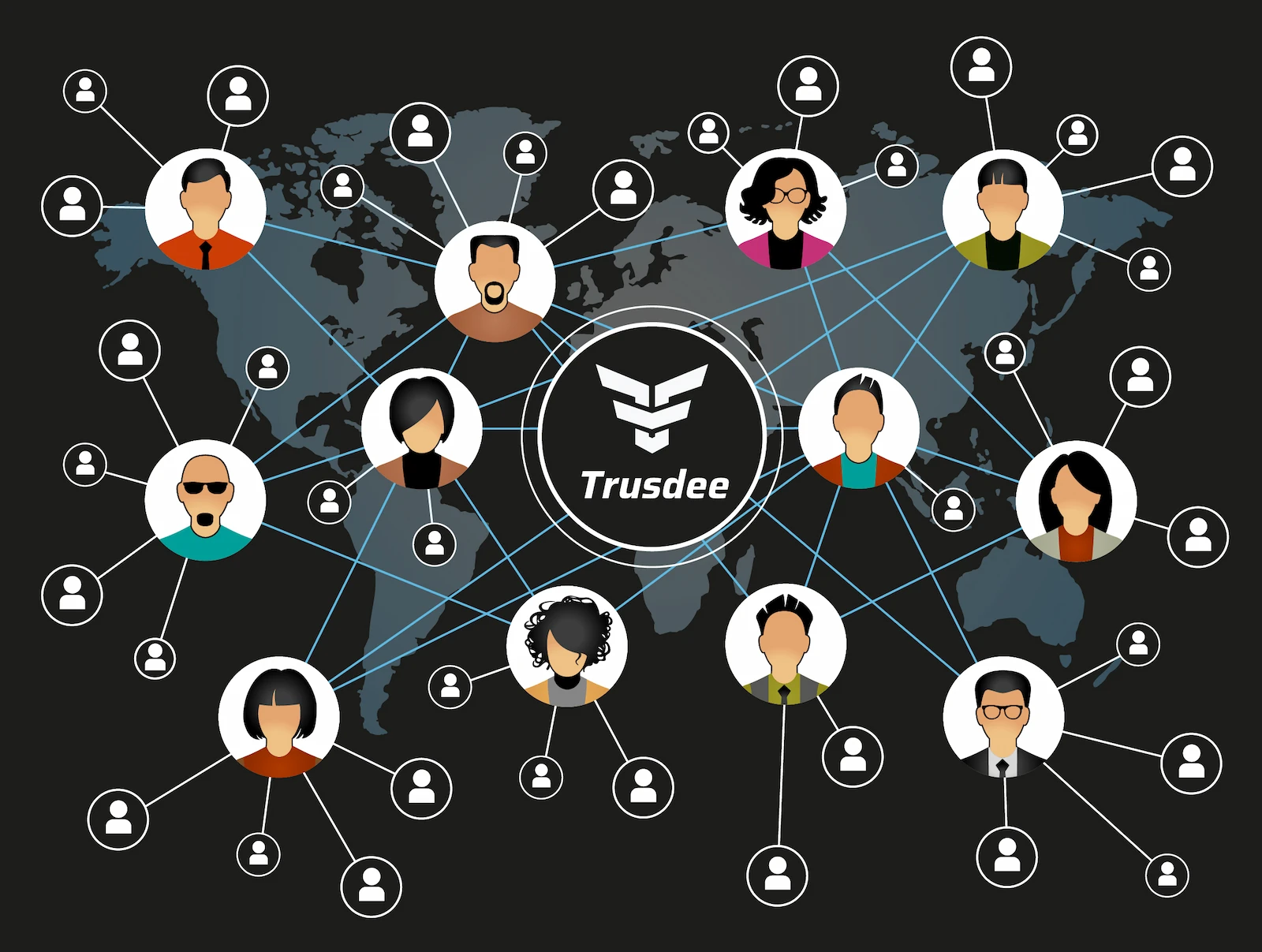
As previously stated, any individual, organisation, or company can participate in the operation of Trusdee. And operators are free to reveal or hide their identity as they choose.
Users must first choose seven trustees before they can use the Trusdee platform. They can, of course, change their trustees at any time. If users provide personal information, it will only be maintained by their trustees. Furthermore, transactions done by a user can only be linked to that user by their trustees.
Aside from the last 3-6 hours of data, no historical data is retained in the system by default. This means that a user does not have a transaction history by default, but must explicitly instruct his Trust-Nodes on how long they should keep the data of previous transactions. Not only the transaction history, but also data such as public digital assets, encrypted private data, a user’s smart contracts, and so on, are solely maintained by the respective Trust-Nodes, and only the fingerprint (hash) of the corresponding data is broadcast to the entire network. This reduces the network’s storage requirements to a basic minimum.
Another advantage is that transactions do not need to be pooled before being published as blocks at regular intervals. Instead, they only need to be verified by the sender’s and receiver’s Trust-Nodes before being broadcasted. If one or more nodes broadcast an invalid transaction (or, more broadly, an invalid change to the overall state), the honest nodes commence a blacklisting procedure. If the broadcasting node cannot show that the state change propagated is valid, it will be barred from participating in the system’s operation by the honest nodes.
This also has the advantage of not mattering how many nodes an attacker has, because all nodes that are not honest will be excluded from participating in the operation regardless of the number of nodes. Strictly speaking, this is a mutual exclusion, as nodes cannot distinguish between honest and fraudulent nodes, but can only check whether the rules programmed into their software have been followed. Nodes do not know whether their software has been tampered with or not, and therefore fraudulent nodes blacklist honest nodes the same way honest nodes blacklist them.
As a result, the trustnet splits into two separate trustnets (similar to how hard forks happen on blockchains). However, in order to create a new trustnet, at least 7 nodes must be involved. This means that even if there were only seven honest nodes in the network, the security of the trustnet would be guaranteed since these nodes would form a new trustnet after a network fission and users may choose them as their new Trust-Nodes. This gives a trustnet a Nakamoto Coefficient of , where .
The Nakamoto Coefficient is a measure of how decentralised a particular subsystem of a DLT solution is and was first introduced by Balaji Srinivasan in his article Quantifying Decentralization.
This basically means that the only way a user could be defrauded in a trustnet would be if all of his Trust-Nodes were traitors and were conspiring against him. But in that case, the user should question his discernment.
As mentioned above, Trusdee does not use a blockchain as a database of all data. All information concerning state transitions is transient, and only the most recent state is saved. Data storage is handled by well-known and high-performance DBMSs.
However, in a few cases Trusdee uses blockchain technology to solve technical challenges. For example, the assent of all nodes to the latest state is recorded every 3-6 hours in a block of a blockchain. That block contains the fingerprint (hash) of the previous block, the Merkle hash root of the current state and the signature of all nodes.
Since each block contains the signatures of all nodes, it is sufficient to store only the last block (of course, nodes can still store several blocks or even the entire blockchain (history of the network state’s fingerprint)). This feature of Trusdee makes it possible to reduce the storage requirement to nearly the theoretical minimum.
And, by reducing the bandwidth, storage, computing, and memory capacity requirements to a basic minimum, we not only enable very low-cost participation in the system’s operation (which, by the way, ensures a high level of decentralisation), but also significantly reduce the overall network’s energy consumption. As a result, we may avoid the never-ending energy consumption debates, judgmental studies, discussions and governmental attempts at intimidation.
In terms of fairness, a trustnet’s system integrity mechanism outperforms all existing consensus mechanisms. People with a lot of money have a clear edge under the existing systems, whether they are purchasing mining hardware or staking tokens.
With a trustnet’s system integrity mechanism reputation is at stake, and it is almost impossible to buy a good reputation. This means that, regardless of financial resources, everyone has about equal odds with Trusdee, because anyone can build up a wide reach on the internet these days. As aforementioned, it is quite difficult to establish a good reputation and maintain it over a long period of time, but fairly easy to destroy it quickly. Thus, only the truly trustworthy participants will emerge in the long run. As a result, it is the best way to prevent anyone from gaming the system.
Trusdee not only resolves the Blockchain Trilemma, but also a whole host of other DLT-related issues:
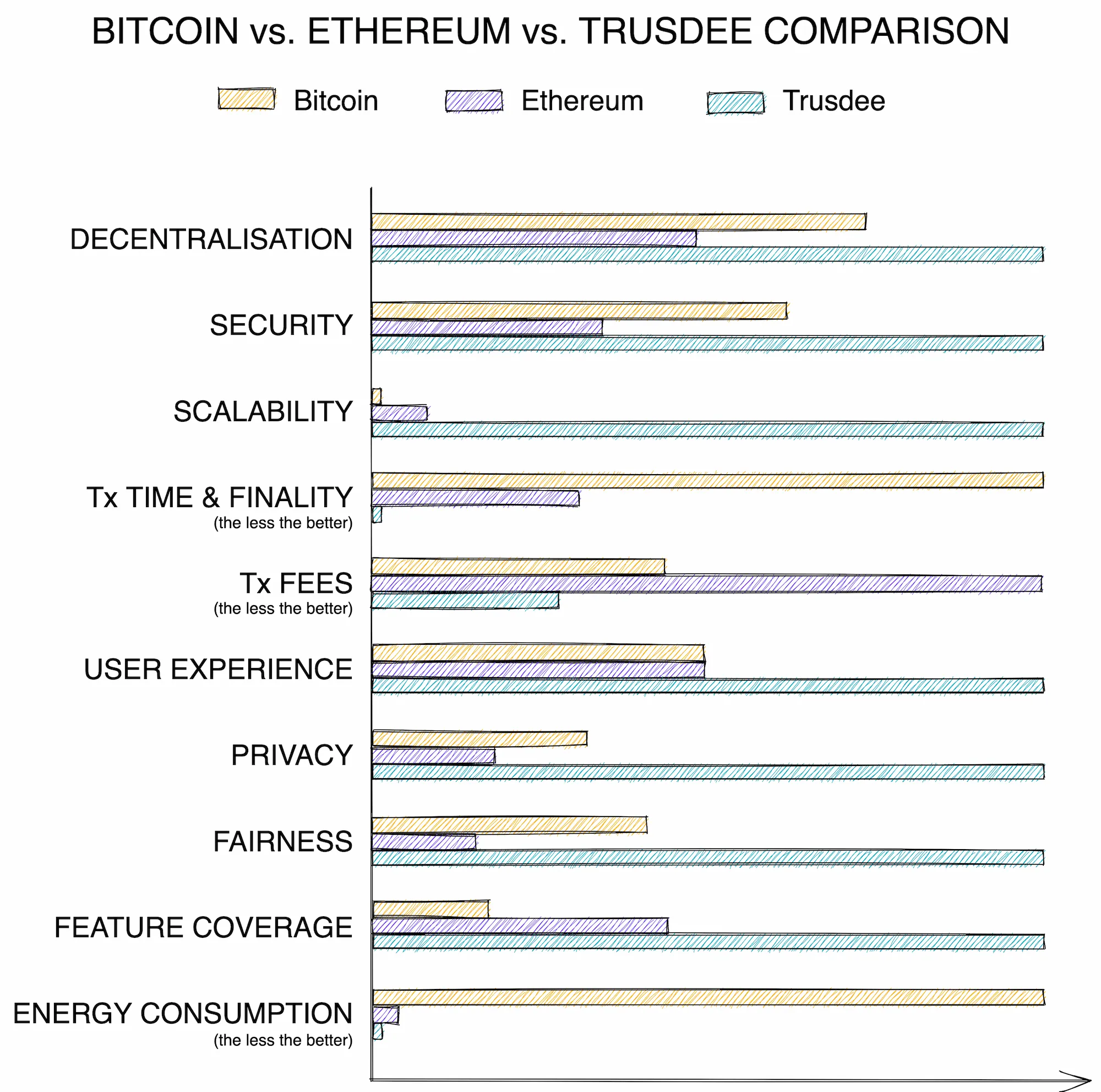
* Tx = Transaction
We are aware that these values are subjective estimates, but it provides a rough indication of Trusdee’s potential.
So far, no other technology on the market has managed to achieve this combination. Furthermore, a trustnet eliminates practically all of Bitcoin’s (and other blockchain solutions) other weaknesses without introducing any new ones (at least none that we can identify).
Leveraging the potential
In the previous section,we provided a brief summary of Trusdee’s fundamental concept and the appealing characteristics that stem from it. Just as interesting, however, are the technical possibilities of a trustnet. For example, a trustnet facilitates features that are of paramount importance, but most of which are (probably) impossible to implement with today’s existing decentralised technologies. Some of these features are universal and can therefore be used by all DApps on the Trusdee platform. These include:
- Two factor authentication (additional security for end users)
- Private key recovery (opt-in feature; additional security for end users)
- Emergency access (in the event of death - similar to Bitwarden’s Emergency Access)
- Groups (collection of users)
- Third party access authorisation to digital assets (for users and/or groups)
- Mobile app (powerful open source app for Android and iOS where DApps can be installed within the app similar to WeChat Mini Programs)
- Push notifications (instant notification of transactions and other events on the trustnet)
- etc.
In addition to the platform itself, Trusdee’s standard DApps enable key features that are not possible with most existing DLT solutions.
Digital Commodity Money (aka Cryptocurrency)
Why do we call it digital commodity money (DCM) instead of cryptocurrency?
- ‘Digital’ because commodity money in the traditional sense is tangible / physical
- ‘Commodity’ because it has the following characteristics of a commodity
- no central issuer
- no person or small group with significant influence over the supply of the commodity or the holdings of individuals
- ability for self-custody
- fungibility
- ‘Money’ (instead of currency) because it is an intangible system of value (and not just a promissory note)
Compared to all other DApps on the Trusdee platform, Trusdee’s Digital Commodity Money DApp has one distinct and unique feature: There will be no alternative (i.e. no competing Digital Commodity Money DApp) in the system.
This is in stark contrast to platforms such as Ethereum, where almost every crypto project issues its own token.
The main reason for this is that most cryptocurrency projects have either purposely or unwittingly caused financial harm to users, often resulting in greater losses than if those users had simply held on to traditional fiat currencies. This means that, once again, the less fortunate have suffered the most. Our goal with Trusdee is to do the complete opposite and ensure that all users are protected and supported, rather than put at risk.
If worthwhile projects want to raise money, they can do so through the usual fundraising methods, such as debt financing, equity financing, crowdfunding, grants, donations, etc. Nevertheless, Trusdee will offer these projects the option to issue shares. However, it is crucial that they adhere to the appropriate laws and regulations regarding the issuance and trading of securities. Furthermore, Trusdee will clearly label centralised financial products as such and educate users about the differences between decentralised money and shares.
Trusdee is not designed to be a platform where each project has its own unique currency, coin, or token. Instead, if the functioning of a project (DApp) requires financial transactions, Trusdee’s official digital commodity money can be utilised. It is important to note that this restriction only pertains to free-floating currencies, and not stable coins.
Trusdee will always distinguish between decentralised and centralised assets and clearly separate them in all user interfaces. Below are a few categories of value-storing DApps grouped by decentralised/centralised and the number of possible DApps for that category (where is any number):
Decentralised (without an issuer):
- digital commodity money
- decentralised stablecoins (e.g. Dai-like technologies)
Centralised (with an issuer):
- fiat currencies / centralised stablecoins
- stocks
- collectibles
In addition to this distinct and unique feature, Trusdee’s Digital Commodity Money DApp also boasts other noteworthy features. We place particular significance on the fact that the DCM DApp is not constrained to just the functions of money, but it can also act as a complete replacement for established payment service providers like Stripe, Paypal, and Square. In a sense, it combines the best of both the centralised and decentralised financial worlds. These features encompass:
Highly secure self-custody of all funds and digital assets for everyone (including non-tech users)
Trusted third parties (TTPs) are not allowed to take custody of funds or digital assets, otherwise they violate the community guidelines and are placed on a public ‘TTPs to avoid’ list. Instead, they can be granted (limited) access to funds and digital assets with the designated feature.Online payments
The process of receiving online payments should be just as seamless using decentralised technology as it is when using centralised services such as Stripe. Currently even Bitcoin experts like Matthew Kratter have difficulties accepting Bitcoin for online payments more than 14 years after Bitcoin launched.Subscriptions
Automated recurring payments which, if desired, can be denominated in a more stable price index like the US dollar.Optional privacy
Just like with physical cash and credit cards in traditional fiat monetary systems, the protocol has no opinion when it comes to anonymity, and users have the option to decide whether or not to make a transaction private.Point of sale
A full technology stack to make in-store payments as easy and frictionless as possible for both the staff as well as the customer, from the point of sale hardware and software to the mobile app integration – similar to established payment terminals and apps such as Apple and Google Wallet.Proof of funds
The ability to cryptographically prove ownership of funds without disclosing the account/wallet addresses.Payment requests
Similar to a direct debit, but requiring the consent of the debtor.Payment intents
The payer only releases the actual payment when the intended payee confirms the receipt of the payment intent. Payment intents are useful to simulate transactions in order to safeguard against spelling mistakes or similar slip-ups, especially with large payments or other sensitive transactions.
Digital commodity money is not only interesting for individuals, but also for companies, shops, retailers, etc., as it offers the following advantages:
- They receive the money instantly and do not have to wait up to 180 days for customer payments to be made available to them.
- They need never fear a freeze on their accounts.
- Customers cannot reverse the transaction (thus eliminating concerns about chargeback fraud).
- The fees are negligible compared to all existing payment methods.
- They are paid with money that does not continuously lose purchasing power.
- They have the ability to receive anonymous payments digitally (not just physically as with cash payments).
As previously stated, we want to make Trusdee’s decentralised commodity money as useful and attractive as possible to all user groups (e.g. individuals, businesses, operators, etc.) in order to accelerate global adoption.
Decentralised Exchange
The decentralised exchange DApp serves as an in-house marketplace for trading in and between all digital assets on the platform.
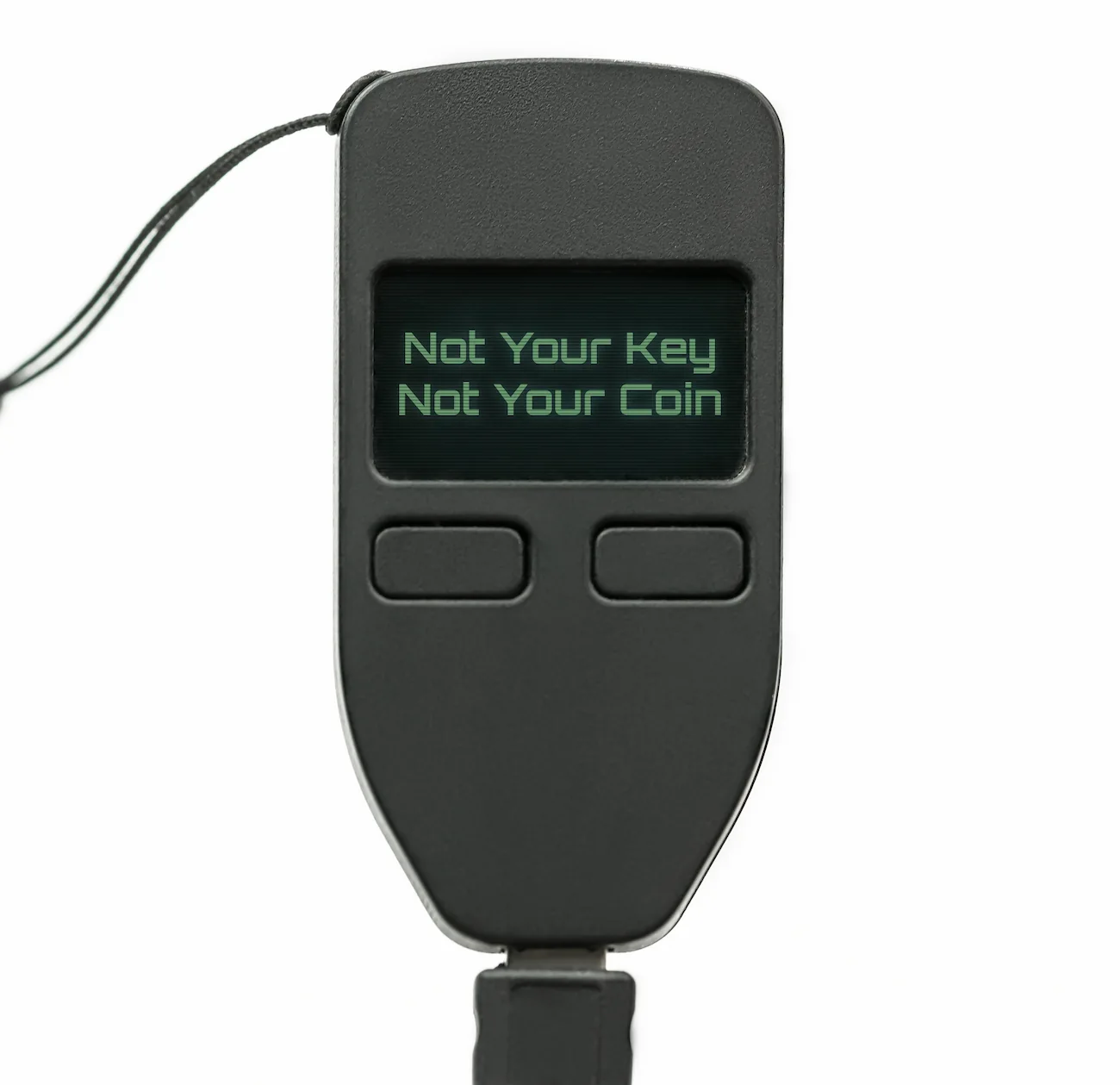
Many years ago Andreas Antonopoulos “coined” the often-cited phrase “Not your keys, not your coins” to teach people the concept of self-custody for Bitcoin and other Cryptoassets. This phrase means that only those who hold the private key to funds and/or digital assets have full control over them. This is why centralised exchanges pose the same serious risks as banks in the fiat financial system, which include:
- Single point of failure in regards to security of user funds (centralised exchanges can be hacked, mismanaged, corrupted by internal or external parties, have system outages, etc.)
- No transparency (especially about the financial data, internal processes and decision-making of centralised exchanges)
- Not neutral / apolitical (prone to censorship as centralised exchanges are subject to local laws and regulations)
- Asset price manipulation (in case the assets purchased by clients aren’t actually acquired and held by the exchange - which is the same as money printing)
It is precisely for these reasons that many Bitcoin and altcoin investors have already lost some or even all of their deposits on exchanges.
The vast majority of bitcoiners who have lost their Bitcoin have lost it by holding it on exchanges [...] or centralized lending services [...].
Matthew Kratter
Customers of the following exchanges alone have already lost billions in deposits:
This, of course, reflects badly on the industry as a whole, although it has nothing to do with the security of decentralised systems.
In fact, these are the very problems that decentralised systems seek to overcome. If we allow centralised exchanges to bring them back into the fold, we will fail to meet one of Trusdee’s key objectives: protecting users. As a result, exchanges must meet the same rigorous standards as the trustnet itself, which is simply impossible for centralised exchanges. That is why having a decentralised exchange is essential and must be present from the outset.
We obviously cannot and would not wish to prohibit the use of centralised exchanges. However, centralised exchanges should adhere to certain standards and conventions; the sole purpose of which would be to protect all users.
This means that each user acts as their own custodian of private keys, and never delegates this significant and sensitive task to any third party who would then have absolute control over the user’s digital assets and funds. Centralised exchanges should neither hold user funds in their own accounts nor create accounts for their users. Exchanges that do not follow these guidelines would be placed on the public ‘TTPs to avoid’ list.
We use the word ‘account’ in this article for the sake of clarity, but strictly speaking, Trusdee does not use the account model, but the UTXO model. However, we do not want to refer to accounts simply as wallets (as in the case of Bitcoin, for example), because they can hold many different types of digital assets, not just money. To avoid confusion between accounts and user accounts, we need a new term. These are two different things in Trusdee, as a user can only have one user account (as in logins), but any number of accounts (as in bank accounts). Since we are already using the word ‘trustee’, we believe it makes sense to continue to use trust terminology. Therefore, accounts or wallets in Trusdee are called trusts. A trust in Trusdee can be thought of as a type of self-settled, self-owned and self-managed trust where the trustees only have the role of protecting and representing the users. This means that a user has only one user account with Trusdee, but any number of trusts, which in turn can hold any number of digital assets.
As Trusdee’s Decentralised Exchange DApp will be in no way inferior to current centralised exchanges, the importance of centralised exchanges should diminish significantly. If users still want to use centralised exchanges, they can grant them access to the relevant accounts. When granting access, users can fine-tune access rights and limits to the minimum required by the third party.
Centralised exchanges that are as interested as we are in protecting users (which in the long run also benefits the industry as a whole) will welcome and embrace these safeguards.
Smart Contracts
The term ‘smart contract’ was coined by Nick Szabo. In his first paper about smart contracts (1994), he describes them as follows:
A smart contract is a computerized transaction protocol that executes the terms of a contract. The general objectives of smart contract design are to satisfy common contractual conditions (such as payment terms, liens, confidentiality, and even enforcement), minimize exceptions both malicious and accidental, and minimize the need for trusted intermediaries. Related economic goals include lowering fraud loss, arbitration and enforcement costs, and other transaction costs.
Although smart contracts definitely cannot replace all areas of the legal system, they certainly have the potential to simplify, optimise or even replace many outdated practices in which financial liabilities and commitments play a major role.
Trusdee’s default smart contracts DApp elevates the capabilities and potential of smart contracts to an unprecedented level, thus propelling us closer to Nick Szabo’s original vision. It possesses various unique features, such as:
- Access to external data
- Smart contracts on Trusdee have full access to public information on Trusdee and the internet.
- The purpose of external data access is not to introduce external trusted third parties as a source of truth, but to enable advanced use cases.
- Event Triggers
- Time-dependent triggers (i.e. cron jobs)
- Internal Trusdee platform triggers
- External third-party triggers (i.e. webhooks)
- Simple and safe ways to update contracts
- Several innovative update models are available to ensure a safe update procedure for different use cases.
- Before a smart contract is created, the parties involved agree on an update model. This update model is specified upon the smart contract’s creation and cannot be changed thereafter.
- Maximum security for every use case
- We noticed that people have a different understanding of security when it comes to smart and automated contracts. To accommodate everyone’s needs, just like for updates of smart contracts, there will also be several innovative security models.
- Before a smart contract is developed, the parties involved agree on a security model that is best suited to their particular use case.
- Confidentiality of information
- Smart contracts can be marked as private. Terms of private contracts can only be seen and executed by the Trust-Nodes of the contract’s parties.
- To ensure accountability of the Trust-Nodes involved, the contract’s fingerprint (hash) is broadcast to the entire network.
- Only in the event of a breach of contract can the aggrieved parties make the contract public to all network operators in order to hold the fraudulent node(s) accountable.
- No impact on platform scalability
- Smart contracts only need to be processed by the Trust-Nodes of the related parties. Consequently, the smart contracts DApp does not slow down the network, and as a result, it does not impede scalability (as is the case with most current smart contract platforms).
- Nodes that are not engaged in executing a smart contract solely need to verify that no overspending occurs. This verification can be performed without knowledge of the smart contract terms, and thus the process is as quick as verifications of standard transactions.
- Full contract transparency for all participating parties
- Built-in state explorer (similar to Etherscan, but built-in, decentralised and user-friendly)
- Contract visualisation that makes the terms (i.e. the source code) of smart contracts easy to understand even for non-tech users.

Public & Private Data Storage
The Public & Private Data Storage DApp could be seen as a combination of blockchains’ NFT technology and modern cloud storage services, but without each of their inherent problems.
Users can store files on the trustnet either publicly (and unencrypted) or privately (and encrypted). ‘Public’ is particularly useful to publish content in a censorship-resistant way, or to prove ownership of a digital asset. ‘Private’, on the other hand, is primarily for safekeeping personal digital files on the trustnet.
Both public and private files are stored exclusively on the user’s Trust-Nodes and are automatically replicated between these Trust-Nodes. Only the fingerprint (hash) of the files is sent to the entire network.
Of course, nodes other than the Trust-Nodes may also store public data if they wish. To do so, they can always ask the respective Trust-Nodes for the desired data. If none of the Trust-Nodes are willing or able to provide a public digital asset (e.g. file, smart contract, etc.), they will be blacklisted as in the case of fraudulent behaviour. In this unlikely case, the requesting node can broadcast a public digital asset request to the entire network. Any node in the network that has backed up that asset can supply it to the requesting node. It is highly unlikely that public digital assets will ever be lost, as there will always be some form of archival nodes (data greedy nodes) that will store as many assets as possible.
This solves the storage problem faced by current blockchain technologies, which has recently led to many heated debates in the Bitcoin community. The use of NFTs and other data embeddings in blockchains accelerate the expansion of the already ever-increasing size of these blockchains. This, in turn, negatively affects the storage demands of nodes, which could ultimately hinder decentralisation in the long term.
Compared to blockchain-based solutions, there is no storage limit on a trustnet. This means that users can easily store large files such as videos on the trustnet. Users are given a free storage quota by their Trust-Nodes. If they want to store more data than is included in the free quota, they can purchase additional storage from their Trust-Nodes, which is automatically charged on a monthly basis (via a smart contract), similar to centralised cloud storage services. The same applies to DApps, which are charged for hosting on an on-demand basis. This payment model is similar to traditional cloud services and is designed to ensure that operators are not left to foot the bill, but are able to easily scale their nodes as demand increases.
Another problem with permissionless data storage on blockchains is that users can perpetuate illicit or similarly problematic content on the blockchain. This is a dangerous attack vector on blockchains. To counter this, and in particular to avoid operators coming into conflict with local legislation and/or their personal beliefs, it is necessary for them to be able to prohibit uses and content categories on their nodes. Of course, this is also because node owners have the right to freely decide what kind of uses and content they want to allow on their nodes, similar to miners in the Bitcoin network. This increases the willingness to participate in the network as operators are able to align the use of their node(s) with their personal beliefs and local laws. It also reduces the likelihood of governments putting pressure on operators, or even imposing a blanket ban on participation in the operation of the network, if operators in that country abide by its laws.
Contrary to initial expectations, this feature does not facilitate censorship, but rather hinders it. This is because more individuals, organisations and businesses can and will participate, making the network more decentralised. And the more operators a trustnet has, the harder it is to suppress information. In a highly decentralised network (with many thousands of nodes distributed around the world), there will always be operators who allow content that the majority of operators prohibit.
Consider a scenario similar to WikiLeaks, where confidential government documents are leaked. To prevent any legal issues with the government, the node operators in that country can add such content to their list of prohibited uses and content categories. This ensures that their nodes do not store such sensitive data. However, most nodes in other countries can store the data without any problem as they do not face any legal consequences. This also applies to DApps.
It is also worth noting that the prohibited uses and content categories are limited to DApps and public digital assets. This is because private files are encrypted and only the owner of these files knows and has access to their contents.
If a trustee becomes aware of, and can prove, a violation of any of its prohibited uses and content categories, the aggrieved trustee has the right to take the following three actions against the user:
- Remove all of this account’s content from their node
- Take over all funds in the corresponding account
- Blacklist the user on all their nodes
The full process and safeguards of this special arrangement are more complex than what is described here, which we will cover in more detail in the white paper.
In summary, a trustnet can provide an elegant solution to the two primary challenges associated with storing data in decentralised networks - blockchain bloat and the storage of illicit content on all nodes.
Decentralised Identity Registry
The internet’s account model is broken. TBD’s lead, Mike Brock, describes this issue as follows:
The great power and potential of the internet has always been the democratization of access to information. This power has unleashed a torrent of innovation and fundamentally changed our world. But the account model of the internet is broken. The way we authenticate and verify ourselves on the internet has actually become increasingly centralized. Our identity on the internet is represented by a small handful of very large companies. This model serves the interests of centralized platforms but it doesn’t serve the interest of individuals in terms of the privacy and control they must give up or the labyrinths of passwords and logins they need to remember to manage their accounts. [...] Identity verification is one of the largest intractable problems for gaining access for the financially marginalized.
The solution to this dilemma is decentralised identity. A fairly new technology called Decentralized Identifiers (DIDs) enables exactly this. It originates from the self-sovereign identity (SSI) approach.
Wikipedia defines SSI as:
Self-sovereign identity (SSI) is an approach to digital identity that gives individuals control over the information they use to prove who they are to websites, services, and applications across the web. For individuals to have persistent accounts (identities) across the internet, they rely on a number of large identity providers, such as Facebook (Facebook Connect) and Google (Google Sign-In), that have control of the information associated with their identity. If the user chooses not to use a large identity provider then they create new accounts with each individual service provider, which fragments their web experiences. Alternatively, in a self-sovereign identity system, the user exists independently from services, which enables them to access services in a streamlined and secure manner while maintaining control over the information associated with their identity.
Decentralised Identifiers intend to address the issues of centralisation, surveillance, and control of personal information that currently exist with large centralised identity providers. Their purpose is to provide a decentralised solution that empowers individuals to have control over their own identity and personal data.
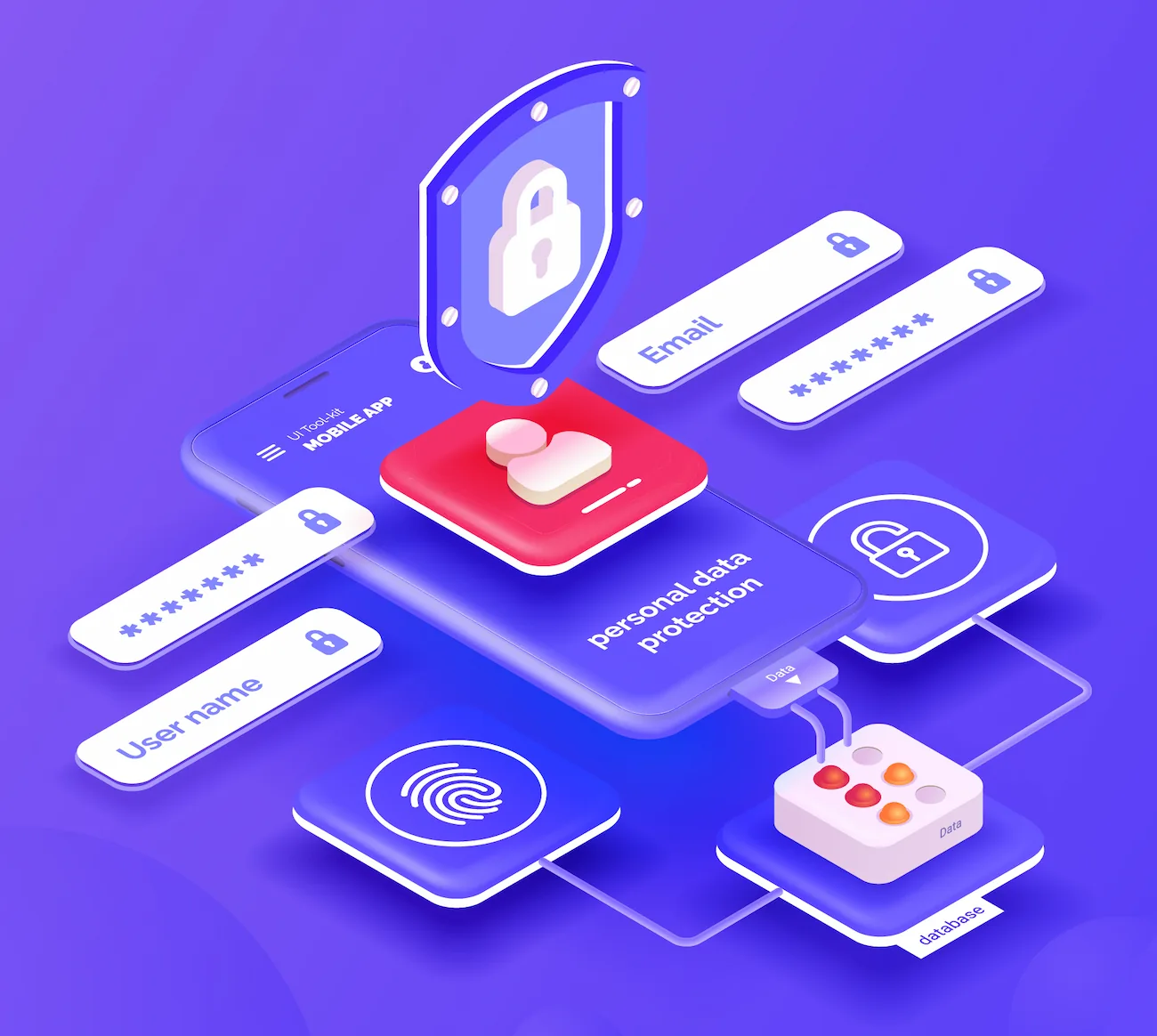
The World Wide Web Consortium’s (W3C) own definition of DIDs is: A new tool to empower everyone on the web with privacy-respecting online identity and consent-based data sharing.
Here are some quotes from what others are saying about this new technology.
Decentralized Identifiers …
- “enable personal information to be protected, privacy to be preserved, and trust to be established at a scale that has never been possible before”
- “open a new world for individuals to share personal data (credentials) while protecting their privacy”
- “empower individuals to control their own identity and how it is used”
- “will be critical in bringing about an evolution of the Web platform that equips individuals to own and control their identifiers, personal data, and every facet of their digital interactions”
- “are an essential first step toward empowering individuals to engage peers, institutions and service providers without having to trade platform surveillance for convenience”
According to Digital Bazaar, DIDs have a variety of applications, including:
- Retail: Age Verification, Digital Offers, Loyalty
- Supply Chain: Customer Identity, Track and Trace, Secure Data Sharing
- Education: Learner Records, Degrees, Transcripts
- Healthcare: Medical Records, Healthcare Identifiers
- Government: Citizen Identity, Driver’s Licence, Biometric IDs
- Finance: Know Your Customer, Money Transfer, Financial Docs
As can be deduced from these examples, this is highly sensitive personal data. As a result, it would be a significant improvement if individuals were the actual owners of their personal data and had the ability to determine who can access and use this information.
For readers interested in a deep dive into decentralised identity and DIDs, we highly recommend The Keys to Decentralized Identity presentation by Jared Hanson (Okta).
Other DApps
In comparison to blockchain-based systems, the characteristics of a trustnet enable it to provide entirely new use cases. Specifically because of the ability to store private data solely on corresponding Trust-Nodes. Therefore, many Web3 and DeFi visions are now attainable with a trustnet. The added complexity of decentralised applications, however, limits their usefulness to use cases that require either the protection of sensitive personal data, a high level of trust, or censorship resistance. Among these are cloud applications such as:
- Chat and instant messaging services (e.g. Telegram, WhatsApp, WeChat)
- Online voting systems (e.g. Loomio, Polys, ElectionBuddy, eBallot)
- Sensitive data cloud storages (e.g. Bitwarden, DocuSign, Notion, Fileee)
- Online Community platforms (e.g. Slack, Discord, DEV, Skool)
- Productivity tools (e.g. Google Apps, Microsoft 365, Apple iCloud)
- User groups matching services (e.g. Uber, Airbnb, eBay, Tinder)
- Fundraising platforms (e.g. GoFundMe, JustGiving, Kickstarter)
- Online petition platforms (e.g. Change.org, iPetitions, GoPetition)
- Social media platforms (e.g. Twitter, Reddit, Facebook, LinkedIn)
- Content publishing platforms (e.g. Medium, Substack, Patreon)
- Authentication and authorization platforms (e.g. Auth0, Okta, OneLogin)
- Website reviews and social-proof platforms (e.g. Trustpilot, Trusted Shops)
- Company review and job listing platforms (e.g. GlassDoor, Indeed, Monster)
- Online gambling, betting and gaming platforms (e.g. DraftKings, GG.BET)
In general, trustnet technology can be thought of as a hybrid of blockchain technology and ActivityPub. This approach is particularly useful because, in a decentralised system, the vast majority of data in centralised cloud applications today does not need to be shared with the entire network. It is perfectly sufficient to broadcast only the information that must be stored in an incorruptible and censorship-resistant manner to the entire network.
In other words: decentralised applications on a trustnet can exchange data with other nodes without broadcasting them to the entire network. For example, a chat application could be developed to exchange data exclusively between the sender and the receiver. Even feature-complete social media networks could be implemented in a very elegant way with a trustnet. Personal data could be stored exclusively on a user’s Trust-Nodes, and posts that need to be published in a censorship-resistant manner could be broadcast to the entire network. Furthermore, the trustnet technology is also perfect for creating a kind of distributed social media (like Mastodon), where nodes can form their own communities (similar to the Fediverse).
As described above and in the previous sections a trustnet has far more potential than simply being a sound money system. One could even compare it with the evolution of mobile phones. Bitcoin was at least as revolutionary as early cell phones have been. And just as smartphones were the next evolutionary stage from cell phones, a trustnet could be seen as the evolution of the blockchain. It could actually be the most disruptive technology in the fight against centralisation.
In summary, trustnets are extremely adaptable and cover all of the Web3 and DeFi use cases. Web3 was, in our opinion, not possible until now.
Final thoughts & critical reflection
Aside from the shining promises of the fast-growing DLT industry, unfortunately there have already been far too many scams, get-rich-quick schemes, ponzi schemes, and pyramid schemes, and we definitely do not want to be another one of these. That’s why we’ve critically questioned every single design decision we’ve made thus far and will continue to do so as the project advances (feedback is always welcome!).
However, we believe that this technology has a lot of potential despite all of these overpromised, overhyped, and overpriced projects. Because of this, we have researched the first principles of the fundamental problem and meticulously drafted a whole new approach based on these principles.
We understand that we can only generate wealth for society by solving problems and creating value. Therefore, we believe that focusing solely on the price of a monetary good (e.g. by only promoting an impossibly high return on investment (ROI) as many cryptocurrency projects do) is extremely short-term thinking. Many of these price-focused DLT projects even have strong similarities to Ponzi schemes. But since prices of goods and services (including monetary goods) in the long term always approach their real value the greatest strategy to accomplish a considerable price rise in the long run is to focus on maximising value for users. That is why we have to focus on solving the fundamental issues described in First Principles of Trust and Money. Only in this way can we create added value and thus succeed in the long term.
Trusdee’s primary value stems from its capacity to be
- the best protection of human rights, developing countries and the environment,
- the best long-term store of value and digital assets,
- the best global platform for exchange of value and digital assets, and altogether
- the best platform for custom decentralised solutions
… ever to exist in human history. In addition to this, Trusdee will have all of the features mentioned in Leveraging the potential and more.
In addition to real and perceived value, user experience is one of the most important factors for the rapid adoption of a new technology. This is where all DLT solutions have failed so far (including Bitcoin, as adoption of a new technology should be much faster in the 21st century).
Therefore, Trusdee will not only create the highest possible added value, but will also do its utmost to provide a world-class user experience for everyone on the platform (users and operators). If we can achieve this, it will be a quantum leap forward for decentralised technology and will definitely accelerate global adoption.
There are also legitimate concerns about the high deflation and/or price fluctuations of fixed supply money systems. But in order to keep the price stable (which would also prevent high deflation), the money supply couldn’t be fixed but had to be adjusted all the time based on the demand of that money. Satoshi already addressed these concerns when Bitcoin was just one month old.
Sepp Hasslberger asked him:Satoshi respondes:It is also important that this limit be adjustable to take account of how many people adopt the system. If the number of users changes with time, it will also be necessary to change the total amount of coins.
Is there a formula to decide on what should be the total amount of tokens, and if so, what is the formula?
If there is no formula, who gets to make that decision and based on what criteria will it be made?
Indeed there is nobody to act as central bank or federal reserve to adjust the money supply as the population of users grows. That would have required a trusted party to determine the value, because I don’t know a way for software to know the real world value of things. [...]
In this sense, it’s more typical of a precious metal. Instead of the supply changing to keep the value the same, the supply is predetermined and the value changes.
Satoshi correctly pointed out that a central authority is required to keep the price stable. And this is the polar opposite of what we desire, which is a high degree of decentralisation. As a result, price stability is not achievable at the outset, but will emerge on the journey to global adoption.
Satoshi continues:As the number of users grows, the value per coin increases. It has the potential for a positive feedback loop; as users increase, the value goes up, which could attract more users to take advantage of the increasing value.
But this raises some questions.
If the main focus of users is to get and hold a monetary good in order “to take advantage of the increasing value”, what will happen when the maximum number of users (e.g. all people on earth with an internet connection) is reached? Will users cash out (into their fiat currency) or will they keep it and start using it as money as intended? It will only truly succeed if users see it as superior money and refuse to exchange it for any other means of payment. They must start using it as a medium of exchange for ordinary transactions at some time. The sooner the better! The most significant way to attain that goal is to educate people on the project’s goals and objectives. That is one of the reasons we wrote this article.
As we are striving for global adoption, there are two separate phases of a new global money system: First the adoption phase and then the establishment phase. When we reach the establishment phase, the price of the money will be considerably more stable, and people will be able to and should utilise it directly as a medium of exchange for day-to-day transactions. However, the price will fluctuate significantly at times during the adoption phase. Because of the influx of people during this phase, as well as the fixed supply, it will also be a highly deflationary period. This deflation will drive adoption, but it will also encourage individuals to hold this money as an investment asset rather than using it as a medium of exchange. For this reason, it primarily serves as a store of value during this phase.
As adoption increases, deflation and price fluctuations decrease. Early adopters who made profits and wish to make use of it should not just cash out by dumping on other users, but rather borrow against their holdings highly over-collateralized. That is how they can continue to keep their money in Trusdee with a very low risk of defaulting (losing their share).
During the adoption period, one viable solution to the price fluctuations may be a stable coin with a technology similar to Dai, but with only Trusdee’s native money accepted as collateral. The minimum collateralization ratio should be relatively high at first and gradually reduced as the collateral’s market capitalisation hits predefined thresholds.
One question we definitely have to ask ourselves is whether there are any disadvantages or serious consequences when the identities of node operators are openly accessible.
The first thing to note in this regard is that not all operators need to reveal their identity, we’d just need a critical mass of identified operators to allow users to choose their trustees.
The main disadvantage of known and identified trustnet operators is primarily that it makes them easier to attack. This means that rich or influential individuals, organisations, governments, etc. could attempt to exert a targeted influence on these operators. For precisely this reason, a high degree of decentralisation is of the utmost importance in a trustnet. After all, it is virtually impossible to exert influence simultaneously on thousands of operators distributed all over the world, regardless of their identity being revealed or not.
In the event that a government should ban Trusdee, at least the following two possibilities exist:
- Users from the respective country could just select operators from different countries.
- Operators that make a lot of money have a high incentive to stay operators, so they could either:
- host their nodes in other countries, or
- leave the country.
Another critical success factor for the project is that it will be regarded as a commodity rather than a security in order to avoid government interference. And not just in a way that skirts the securities laws, but by actually not doing the things that the laws are designed to protect investors from. This means there will be no ICO, no premine, no VCs, no large token allocations to founders or any of the other shady tactics of all these semi-decentralised crypto projects.
Of course, we are aware that any project, no matter how decentralised, always has a highly centralised beginning (because it all starts with a thought in one person’s head). However, after a limited initial bootstrapping period, there will be no company, foundation or other legal entity to ensure the continuity of the system. This means that once launched, the project will rapidly move from its initial centralisation to a DAO-like structure, allowing it to organise and evolve completely autonomously, without the need for any sort of central authority.
We would consider the project a failure if we did not accomplish full decentralisation of the entire project (i.e. if one person or small number of people still had a significant influence on the system and its evolution beyond the initial bootstrapping phase).
More important than anything else we have addressed so far is the fair distribution of coins in any new money system. This is why we will dedicate a separate article to this vital aspect, in which we propose an entirely new distribution model.
Conclusion
Power centralisation, in our opinion, is the most serious issue confronting humanity right now. If we are successful in developing a real solution to this problem, we believe it will be the most valuable and useful technology in human history. Bitcoin attempted to address the issue of money centralisation and achieved unprecedented success as the first (reasonably) working solution. However, even if it is the best monetary solution to date, it is insufficient to adequately address the current centralisation problem in all its facets. For that we need a scalable, rapid, and efficient solution that is at least as secure and decentralised as Bitcoin.
Satoshi does not see himself as a wordsmith which is probably the reason he did not give us a detailed explanation of ‘the why’ of Bitcoin. Hence, we did not want to skimp on words again this time (although we too are not great with words). But it was critical to us that our objectives be consistent with Satoshi’s original intentions and principles. That’s why Trusdee shares Satoshi’s fundamental premise, the philosophy that underpins Bitcoin, and the mindset of the Bitcoin community. Since the mission of Bitcoin and Trusdee are aligned, Trusdee is not a competitor to Bitcoin, but rather the next evolutionary stage of Bitcoin. So that our community is never again subjected to allegations that include: Bitcoin is too slow and not scalable; a waste of energy (and thus environmental pollution); offers little privacy protection by default; is missing modern features like smart contracts, etc. On the contrary, the next generation of Bitcoin outperforms all altcoins that have attempted to enhance Bitcoin while at the same time sacrificing Bitcoin’s fundamental values and principles. It even surpasses all of Bitcoin’s strengths. As a result, Trusdee is the only technology capable of bringing the fundamental idea and promises of Bitcoin to the entire world without any limitations. It’s the ultimate dream of all freedom maximalists (freedom-loving people).
We sincerely hope that we did not fall out of favour with any Bitcoin enthusiast with this article, because that was never our intention. And it is definitely not intended to be a Bitcoin FUD article either. Rather, we have endeavoured to show everyone our total and wholehearted conviction in Bitcoin’s mission. The only reason we wrote this article is because we firmly believe that Trusdee can achieve the ultimate goal of Bitcoin’s mission sooner and indeed is capable of achieving it at all. This is feasible by addressing all issues of the present DLT solutions while advancing all of Bitcoin’s strengths even further. That is why we couldn’t resist but publish this piece.
We would never have publicised this concept if it had a negative impact on either decentralisation or security, or if a second layer solution could solve all of the base layer difficulties at once (without adding new issues). We only want to challenge the status quo if it benefits the majority of people, which we believe our approach does.
That being said, Bitcoin as an asset isn’t going anywhere.
Individuals like us, who are well aware of the iniquity caused by the centralisation of money and thus simply yearn for a serious alternative to fiat currencies, are often branded and dismissed as Bitcoin Maxis. However, we are confident that the majority of Bitcoin users are open to better alternatives and would be willing to switch to another system at any time if there was a truly superior system with the same sound monetary policy as Bitcoin. Even Matthew Kratter (one of the most vocal Bitcoin advocates) concurs:
If there were something else that were to come along I would be willing to go after it. So I’m not technically a Bitcoin Maxi in this sense. I am open to new possibilities.
And once again he confirms that he is open to better/other solutions:
If you have a better solution then Bitcoin I’d love to hear it. [...] I think Bitcoin’s the best solution for this but if there are other solutions I would love to hear them as well.
These two statements represent the mindset of the wider Bitcoin community quite well. Yet, just designing a Bitcoin-like system with a few minor improvements is wholly inadequate. And, no matter how brilliant the new capabilities or upgrades, developing an alternative that sacrifices decentralisation or security is certainly not an option.
Instead, as Robert Breedlove aptly described:
A true Bitcoin killer would necessitate an entirely new consensus and distribution model and nothing to date has been conceived that could fulfil this requirement.
That is just what we have proposed in this article. We also have a game-changing distribution model that far outperforms all previous models. However, we do not want to make this critical decision without first consulting with the community to determine whether it is the ideal distribution model for Trusdee and/or how it could be improved or even replaced by a better one.
In this article, we have not only outlined the problem with the centralisation of power, but also the problem with Satoshi’s proposed solution. In his opinion, the solution is a “decentralized, non-trust-based system”:
A lot of people automatically dismiss e-currency as a lost cause because of all the companies that failed since the 1990’s. I hope it’s obvious it was only the centrally controlled nature of those systems that doomed them. I think this is the first time we’re trying a decentralized, non-trust-based system.
In our eyes, Satoshi almost got it right. Yes, every centrally controlled currency is ultimately doomed. But trying to eliminate trust from a money system is the one thing Satoshi didn’t get right. Firstly, because it’s impossible, and secondly because we believe that dismissing the power of good trust is a momentous fallacy.
Contrary to expectations, the best approach to achieving the goal of a “trustless” system (a system with minimal blind trust dependency) is to use a trust-based system. Because users who do not trust anyone can simply host their own node and select it as their Trust-Node. As a result, they are not dependent on any trusted third party.
After boiling down the trust problem to its first principles and reasoning up from there, we found that it is possible to solve the system integrity problem most elegantly with the following two features:
- Put the operator’s reputation on the line (instead of their money).
- Allow users to select their trusted operators (aka trustees).
These two features significantly boost users’ trust in the system. Nonetheless, we recognise that it is not immediately evident that increasing trust should be the solution when trust is the problem. However, this is solely down to the fact that the term trust is often used vaguely by the DLT communities. In fact, we actually do not have a problem with trust but with blind trust dependency (as argued in Perspectives on trust). And if we do it right this time, we can unleash unimaginable possibilities, much like Airbnb did when they designed a system founded on trust and reputation:
On any given night, 2 million people stay in homes on Airbnb in 100,000 cities all over the world. There are more than 6 million listings in 191 countries to choose from — that’s more than the top five hotel chains combined.
What makes all of that possible? Trust.
If trust is the foundation for sharing one’s home with strangers, how much more should it serve as the foundation for financial matters? And, if the success of a social system (a system involving interpersonal interactions) is essentially determined by the level of trust it earns from its users, we can infer that for such a system, trust maximisation is success maximisation.
With this article, we have also been able to demonstrate the outstanding properties of a trust-based system that results from the above assumption. Trustnets outperform every decentralised technology we have seen so far in all aspects (decentralisation, security, scalability, speed, energy consumption, fairness, cost efficiency, and feature coverage).
It is the very first time we will have all the benefits of digital gold (like Bitcoin) and digital cash (like PayPal or Venmo) combined in one system. A form of digital gold cash so to speak. The characteristics of this hybrid are so appealing that even central banks are actively seeking such a payment solution. However, they believe that this is currently only viable with CBDCs. With Trusdee, we have the chance to convincingly invalidate this assumption.
Simply said, the entire Trusdee project is about protection (of human rights, developing countries, and the environment) and ensuring freedom for all. And the purpose of this article is to raise awareness of these issues and explain why only decentralisation of the current power structure can fix them. Since money is the easiest and most effective tool to exercise power on a large scale, it is the first thing we need to decentralise. Because a technology that wants to confront the current power structure can’t afford to have any weaknesses, we have proposed a completely new approach in this article that solves all the issues with the existing DLT solutions at once. On top of that, the trustnet technology might also have the potential to decentralise parts of the internet, the media and even politics.
That’s what Trusdee is all about.
We think this is the first time we are trying a decentralised, trust-based system.
To paraphrase Spencer Bogart’s closing statement:
In closing, we’re all living through one of the grandest experiments in history and it’s playing out in real time. [We’d] love to hear your feedback about why [we’re] wrong in the viewpoint presented here. Criticism encouraged!
If you enjoyed this article please share it with a friend who might also like it. Thanks a lot for spreading the word!
If you’re interested in updates or want to participate in surveys, votings, discussions and more, follow us on our social media channels: Twitter, YouTube and Facebook
If you have any questions or would like to discuss this new concept with the Trusdee community, leave a comment or join us on our Subreddit and Discord server.
If you wish to help us accelerate the creation of the distribution model and white paper, you can either donate to the following BTC address or contact us here. It will allow us to devote more time to this project, which is currently self-funded.
Donations in Bitcoin: 1EovV2CkynZzYfuJkKHgdwzF7Mo5ZzXLDK
Thank you so much, we really appreciate it!
Appendix
Thanks

First of all, special thanks to Jamie who made this entire project possible so far.
But we would also like to thank the following people for providing a lot of great content (or for similarly valuable contributions to society). You have helped us understand the world in which we live much better, which was crucially important for the design of Trusdee.
- Satoshi Nakamoto
- Ludwig von Mises
- Murray Rothbard
- Friedrich Hayek
- Nick Szabo
- Hal Finney
- Robert Breedlove
- Matthew Kratter
- Michael Saylor
- Dr. Saifedean Ammous
- Der Gigi
- Alex Gladstein
- Cory Klippsten
- Till Musshoff
- Nic Carter
- Lyn Alden
- Natalie Brunell
- Stephan Livera
- Adam Back
- Simon Dixon
- Andreas Antonopoulos
- Peter McCormack
- Mark Moss
- Sorelle Amore
- Academy of Ideas
- Erik Cason
- Balaji Srinivasan
- Spencer Bogar
- Prof. Richard Werner
- Dagogo Altraide
- Lex Fridman
- Prof. Jordan Peterson
- Russell Brand
- Joe Rogan
- Jack Dorsey
- Elon Musk
- Ray Dalio
…and many many more people.
Thank you so much to all of you! We really appreciate all the time and dedication you’ve put into creating all this invaluable content and working on a better future for humanity.
Resources
Although the following resources have helped us immensely in understanding and researching the information and reasoning presented in this article, we do not always agree with the opinions and proposed solutions of the respective authors.
Books
- Satoshi Nakamoto Institute Literature
- Murray Rothbard bibliography (on Amazon)
- Friedrich Hayek bibliography (on Amazon)
- The Bitcoin Standard: The Decentralized Alternative to Central Banking
- The Fiat Standard: The Debt Slavery Alternative to Human Civilization
- Bitcoin: Hard Money You Can’t F*ck With
- Check Your Financial Privilege
- Bitcoin: Independence reimagined
- Bitcoin: Sovereignty through mathematics
- 21 Lessons: What I’ve Learned from Falling Down the Bitcoin Rabbit Hole
- The Bullish Case for Bitcoin
- Inventing Bitcoin: The Technology Behind the First Truly Scarce and Decentralized Money Explained
- Mastering Bitcoin
- Softwar: A Novel Theory on Power Projection and the National Strategic Significance of Bitcoin
- Bitcoin Evangelism: Planting Seeds For The Decentralized Revolution
- The Price of Tomorrow: Why Deflation is the Key to an Abundant Future
- Layered Money: From Gold and Dollars to Bitcoin and Central Bank Digital Currencies
- Bitcoin and the American Dream
- The Little Bitcoin Book: Why Bitcoin Matters for Your Freedom, Finances, and Future
Blogs & Articles
- Satoshi Nakamoto’s emails and forum posts
- Mises Institute - Power & Market Blog
- Gigi
- The Crypto Sovereignty Project
- Alex Gladstein
- Robert Breedlove
- Nick Szabo - Unenumerated
- Nick Szabo’s Essays, Papers, and Concise Tutorials
- Bitzuma
- Nic Carter
- Lyn Alden
Videos
- Documentaries
- Explainer Videos
- YouTube Channels
